inbox and environment news: Issue 538
May 15 - 21, 2022: Issue 538
Musk Lorikeets - Female King Parrot: Pittwater Spotted Gums Feasting
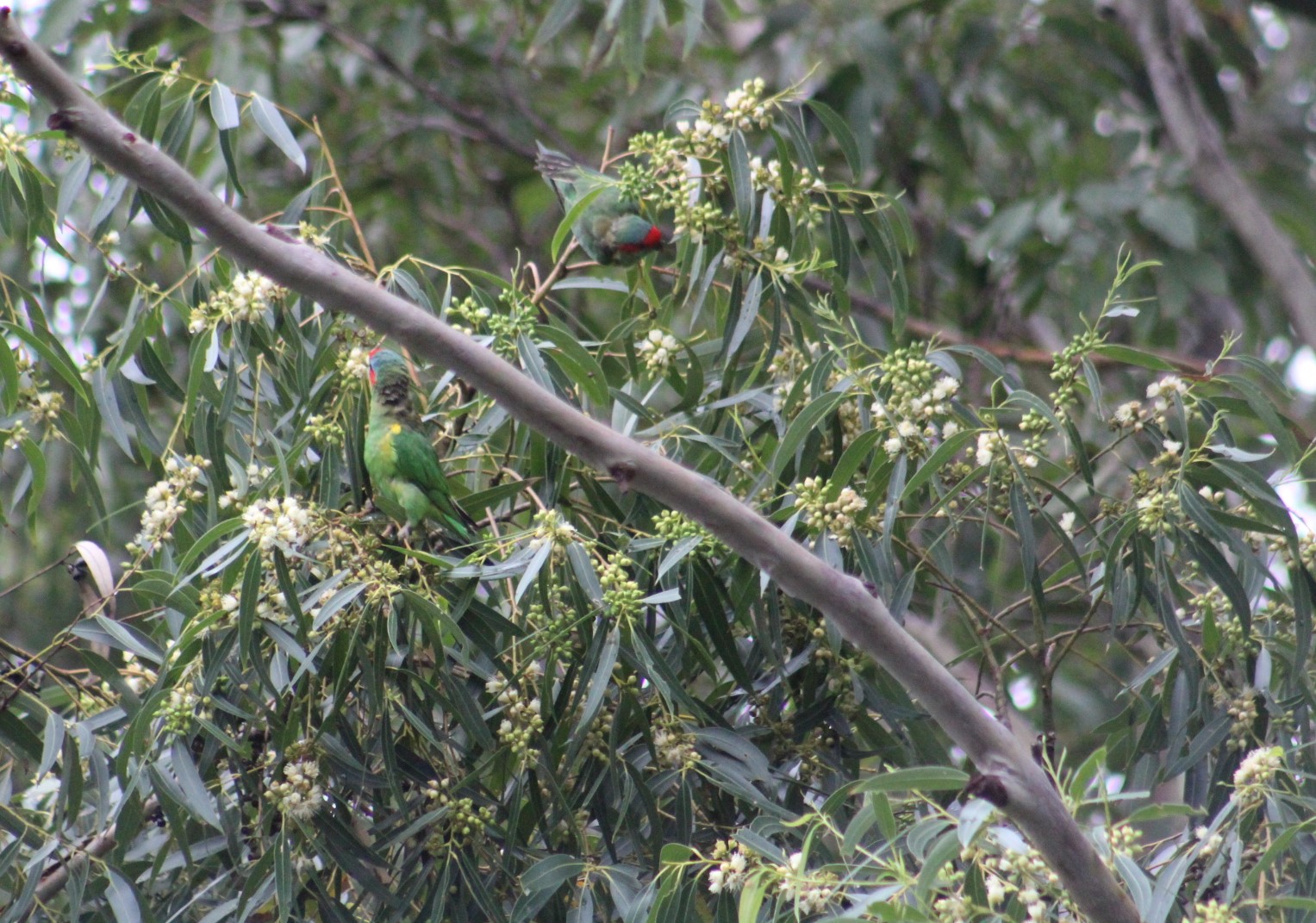
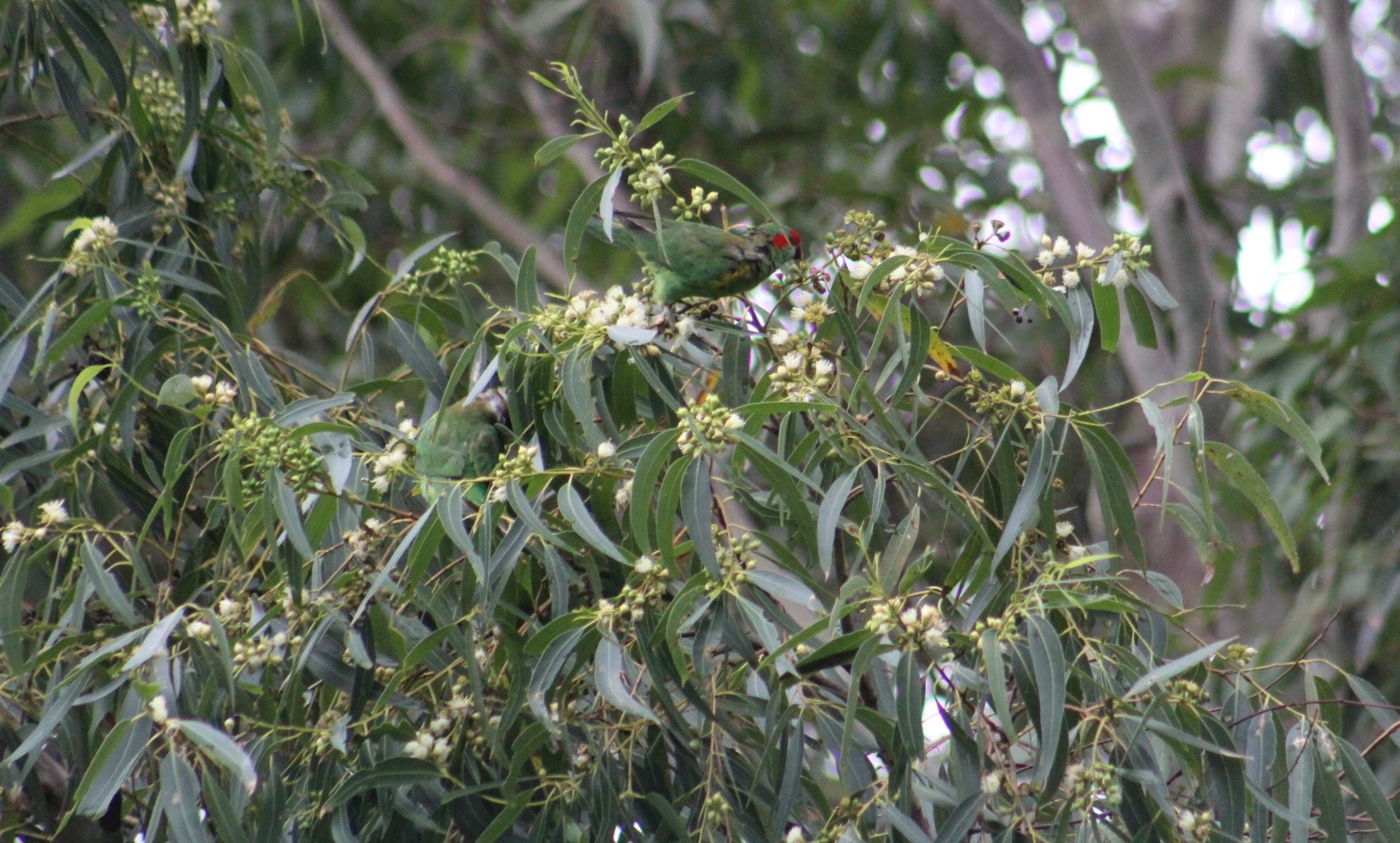
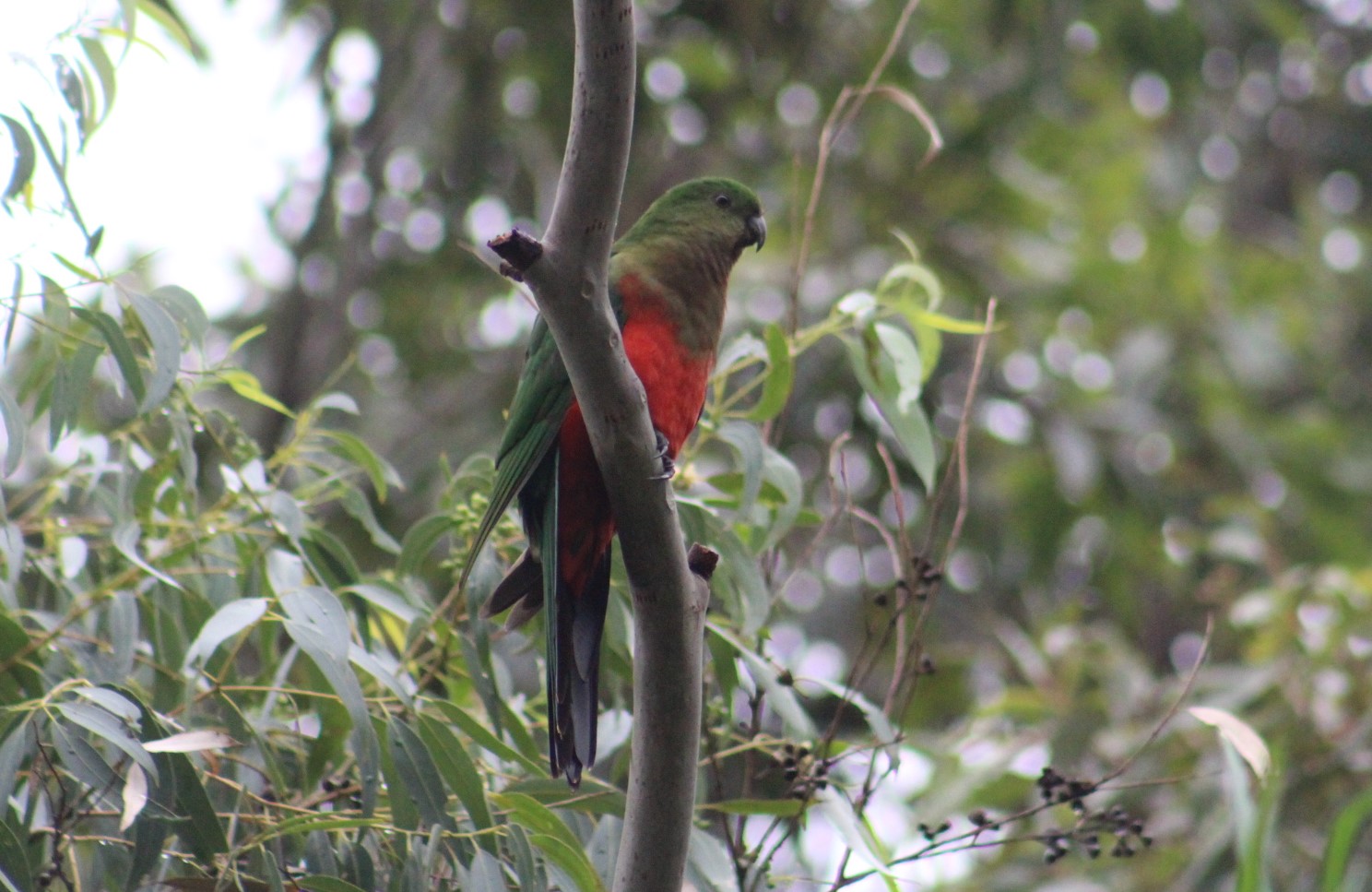
Dirt Runoff Stains Palm Beach
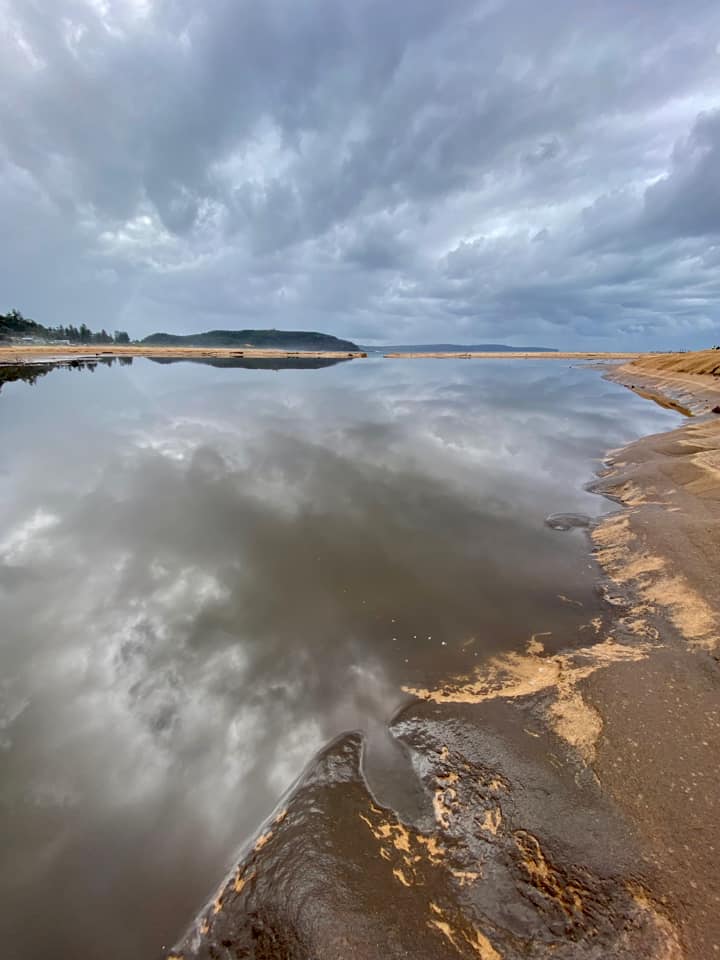
Reinstalled Synthetic Field At Cromer Costs 1.3 Million
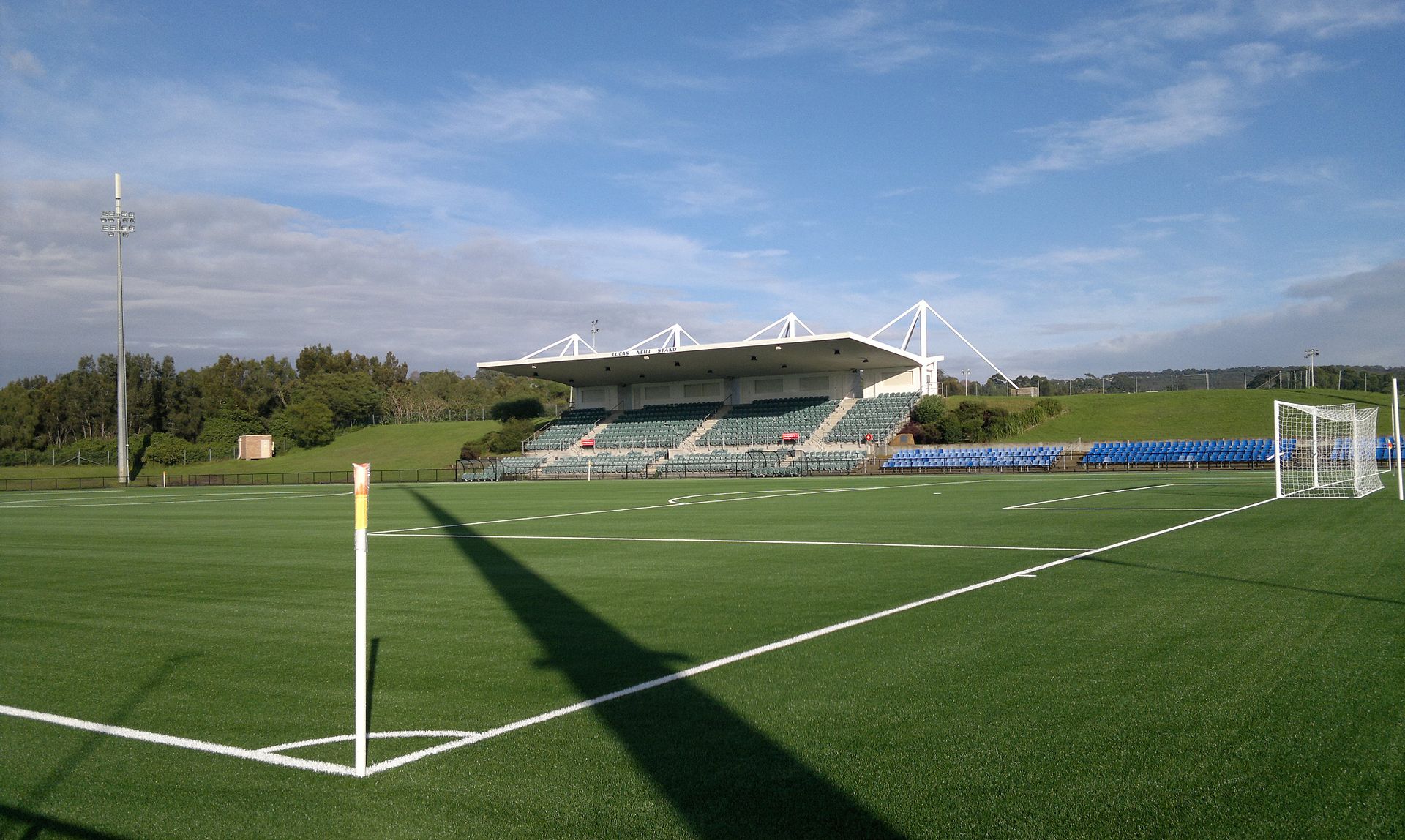
Residents Warned Of Barmah Forest Virus Risk
- Always wear long, loose-fitting clothing to minimise skin exposure
- Choose and apply a repellent that contains either Diethyl Toluamide (DEET), Picaridin or oil of lemon eucalyptus (OLE)
- Be aware of peak mosquito times at dawn and dusk
- Keep your yard free of standing water like containers, birdbaths, kids toys and pot plant trays where the mosquitos can breed.
Friends Of Narrabeen Lagoon Catchment Forum: May 2022 - Speaker - Prof. Dennis Foley On The Aboriginal Heritage Of The Narrabeen Lagoon Catchment
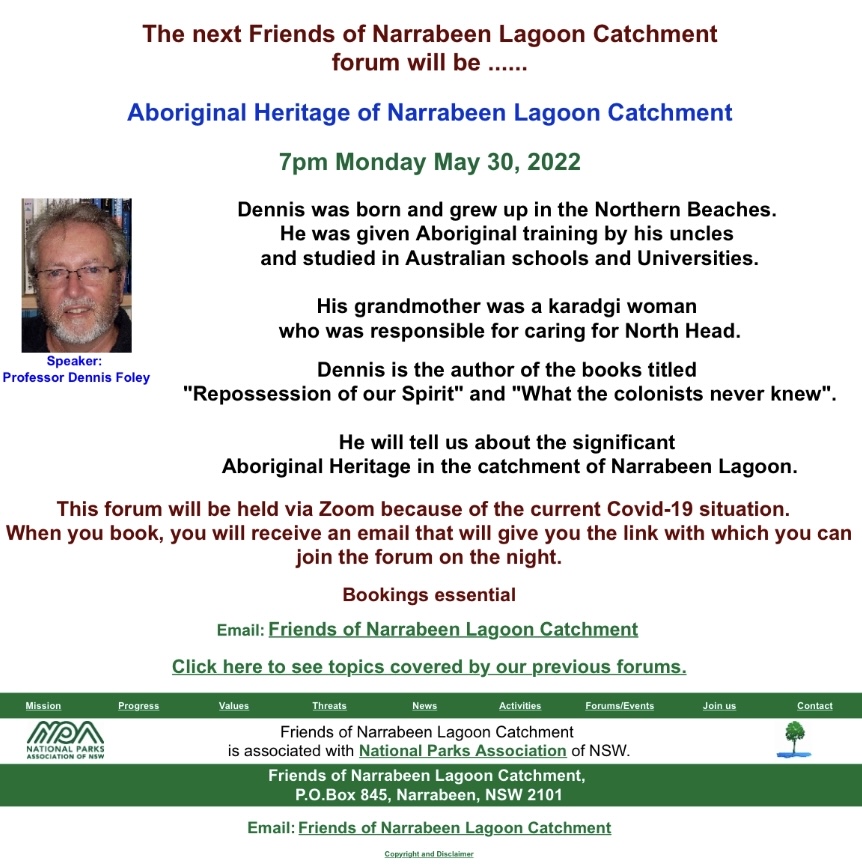
Sydney Wildlife Rescue And Care Course: June 2022
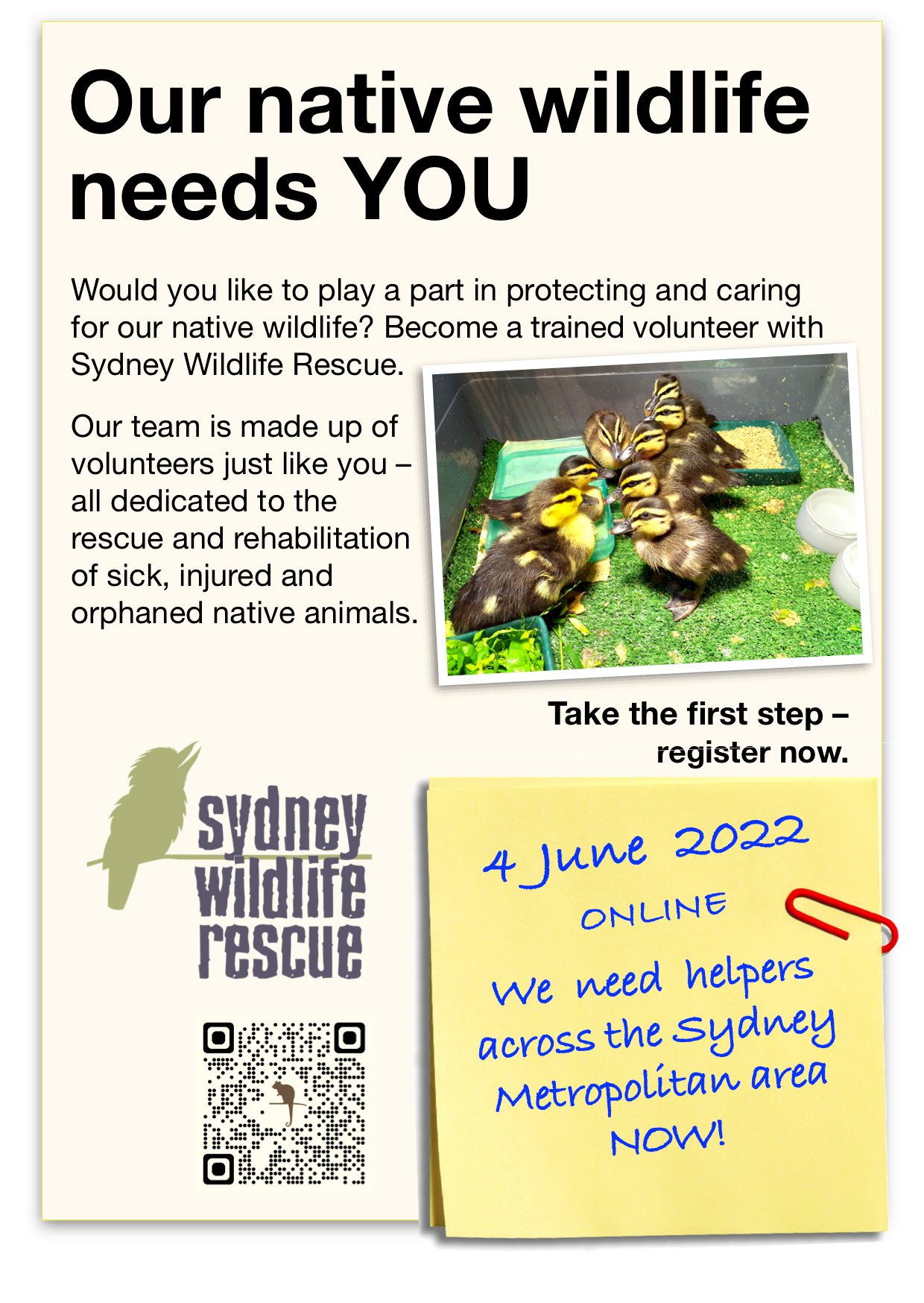
Local Wildlife Rescuers And Carers State That Ongoing Heavy Rains Are Tough For Us But Can Be Tougher For Our Wildlife:
- Birds and possums can be washed out of trees, or the tree comes down, nests can disintegrate or hollows fill with water
- Ground dwelling animals can be flooded out of their burrows or hiding places and they need to seek higher ground
- They are at risk crossing roads as people can't see them and sudden braking causes accidents
- The food may disappear - insects, seeds and pollens are washed away, nectar is diluted and animals can be starving
- They are vulnerable in open areas to predators, including our pets
- They can't dry out and may get hypothermia or pneumonia
- Animals may seek shelter in your home or garage.
You can help by:
- Keeping your pets indoors
- Assessing for wounds or parasites
- Putting out towels or shelters like boxes to provide a place to hide
- Drive to conditions and call a rescue group if you see an animal hit (or do a pouch check or get to a vet if you can stop)
- If you are concerned take a photo and talk to a rescue group or wildlife carer
There are 2 rescue groups in the Northern Beaches:
Sydney Wildlife: 9413 4300
WIRES: 1300 094 737
Please be patient as there could be a few enquiries regarding the wildlife.
Generally Sydney Wildlife do not recommend offering food but it may help in some cases. Please ensure you know what they generally eat and any offerings will not make them sick. You can read more on feeding wildlife here
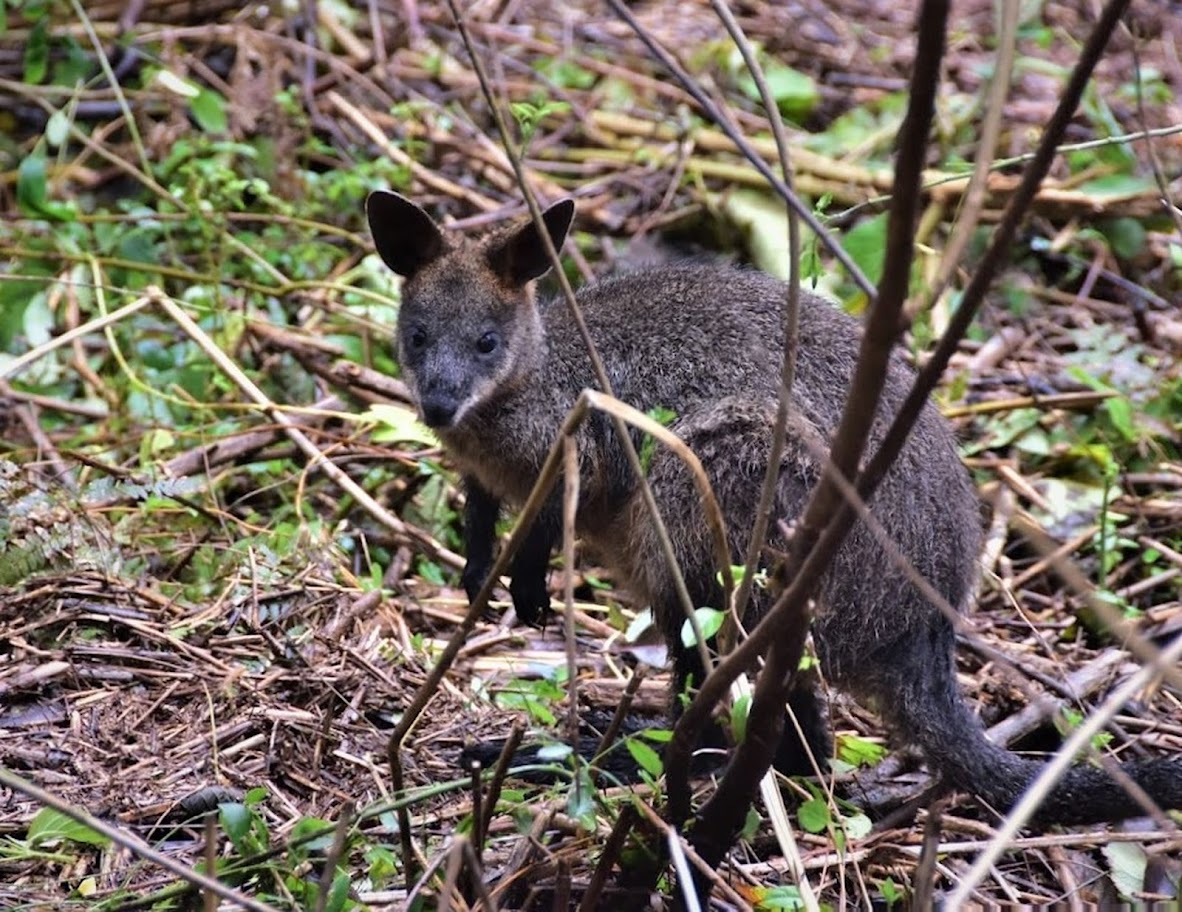
Information courtesy Ed Laginestra, Sydney Wildlife volunteer. Photo: Warriewood Wetlands Wallaby by Kevin Murray, March 2022.
Pittwater Natural Heritage Association (PNHA) Autumn 2022 Newsletter
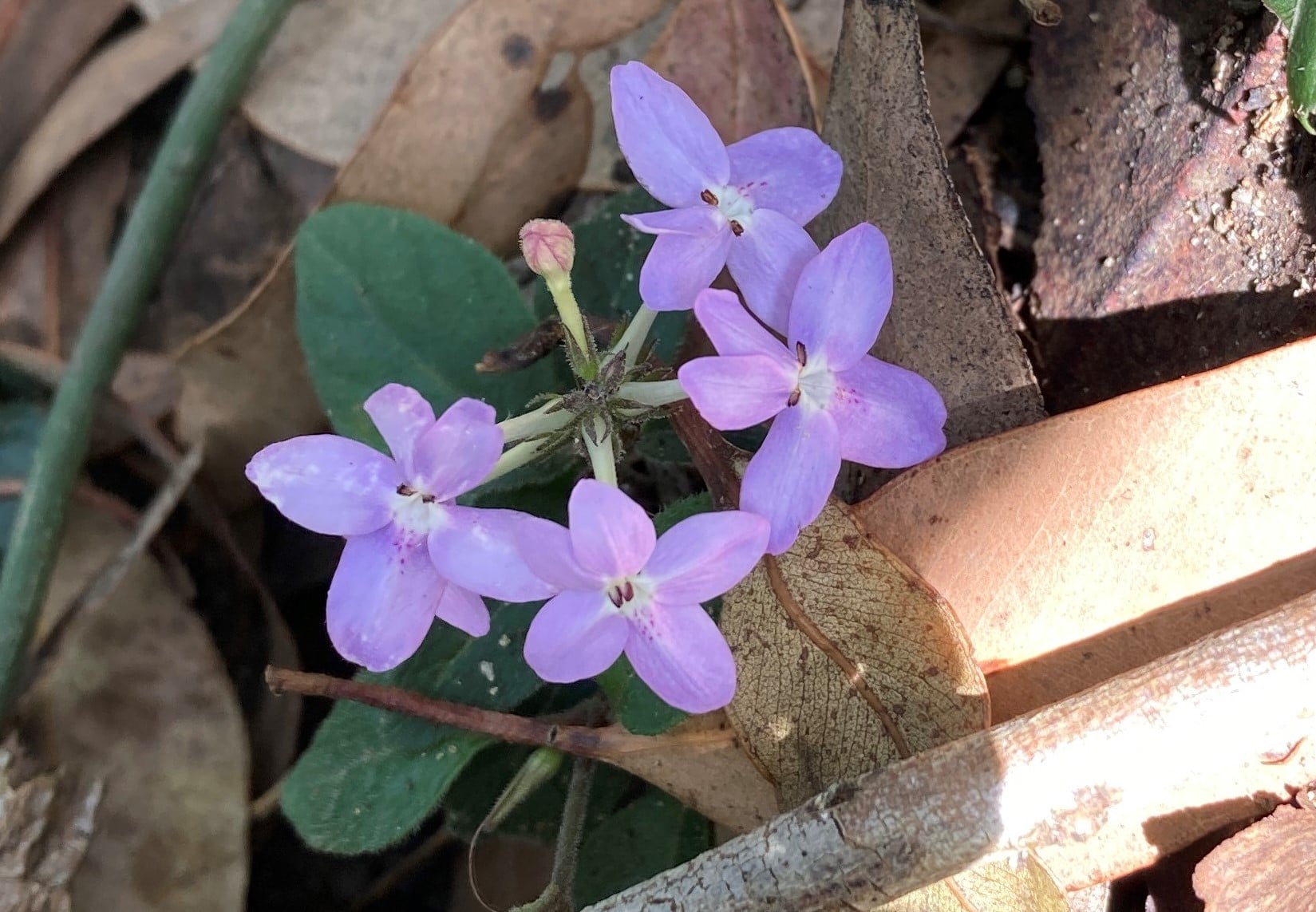
Cassia Flowering Now: Dispose Of This Weed To Stop The Spread
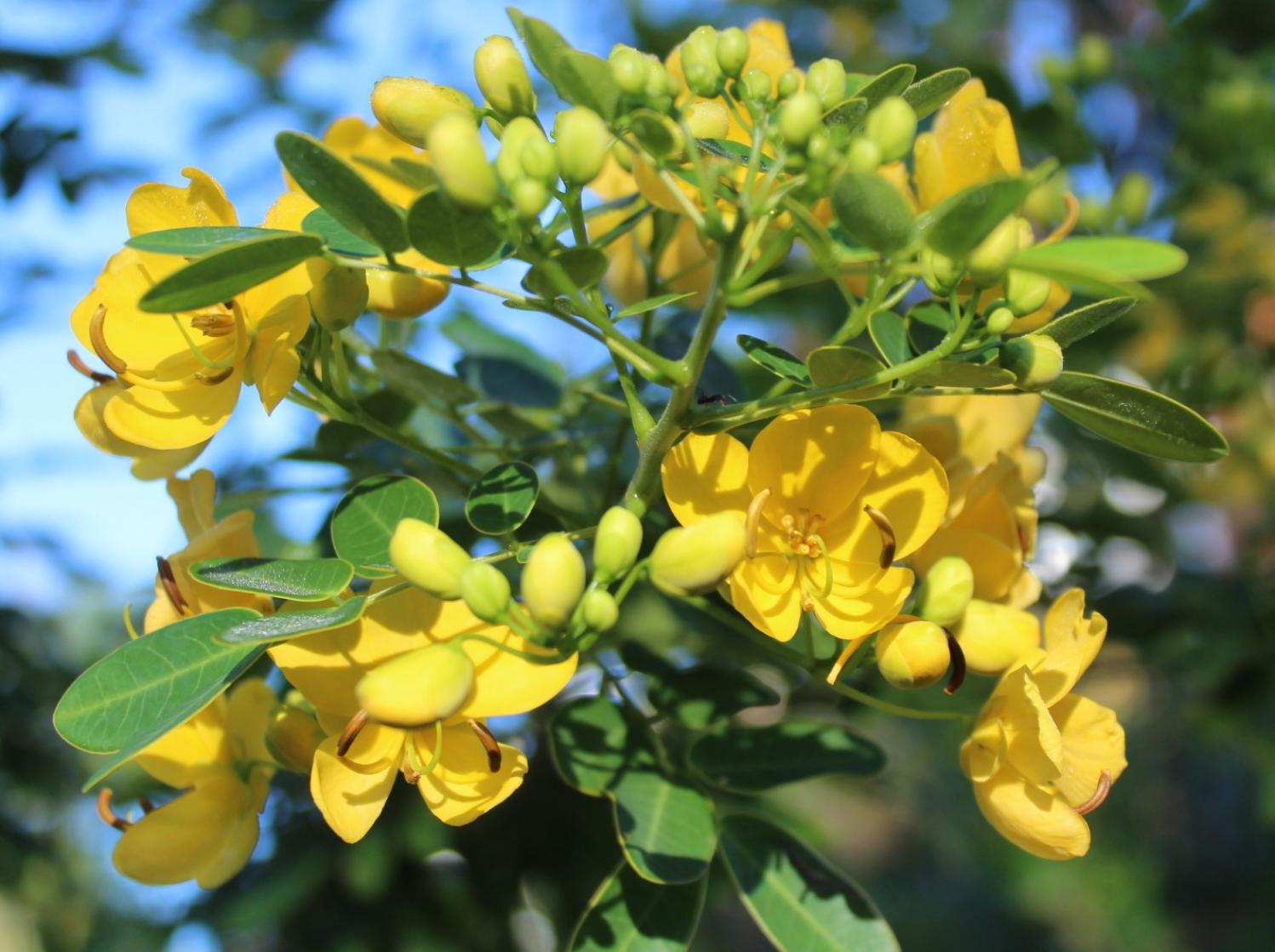
Darkinjung Plans For 600 Homes On Central Coast's Lake Munmorah Now On Exhibition: Closes May 24
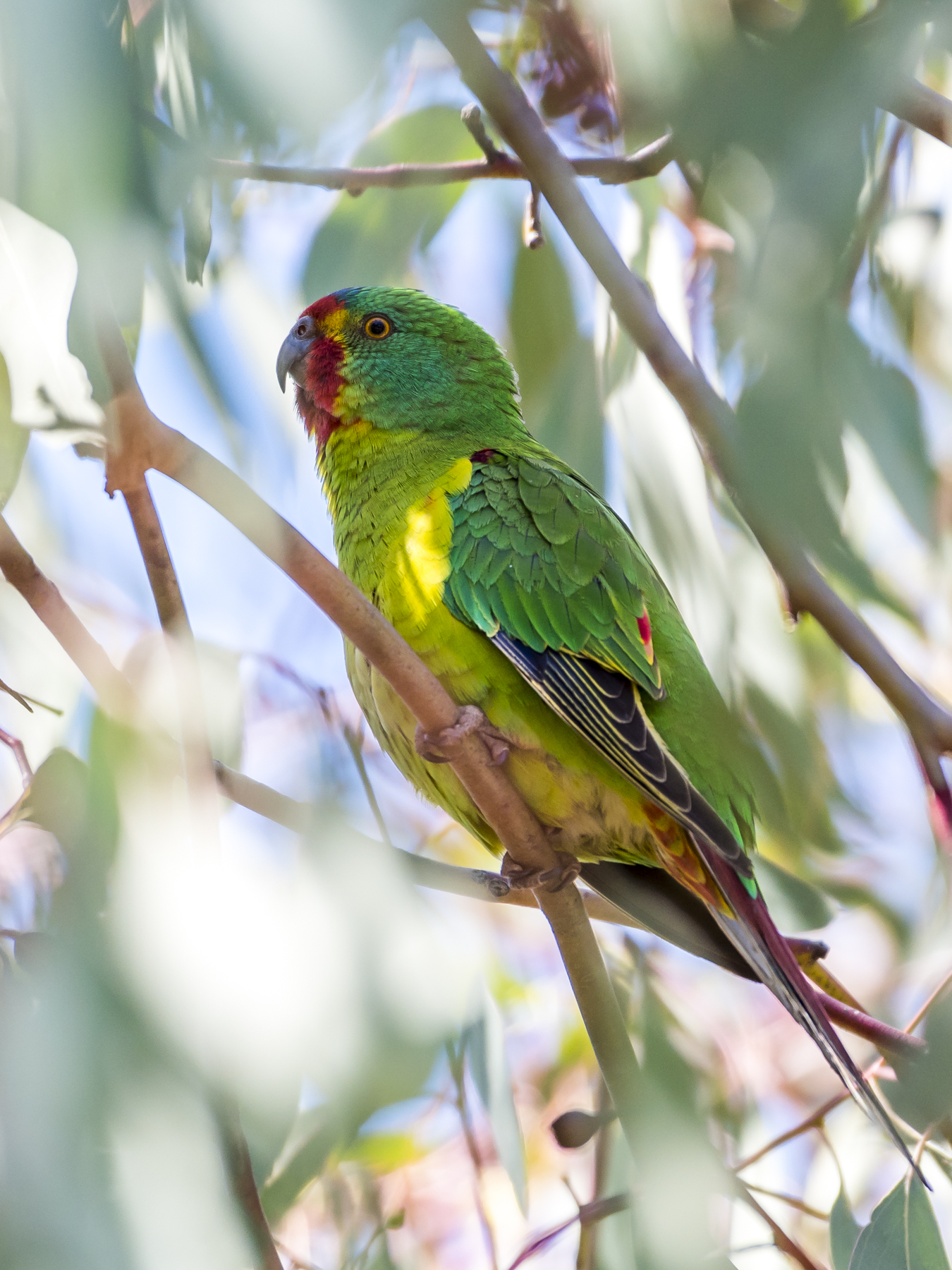
Dendrobium Mine Extension Project: Have Your Say (Again)
Political Stitch Up Over Dendrobium Abandons Community, Climate, And Water, Favours Coal Mining Company Residents State
Aviaries + Possum Release Sites Needed

Sydney Wildlife Rescue: Helpers Needed
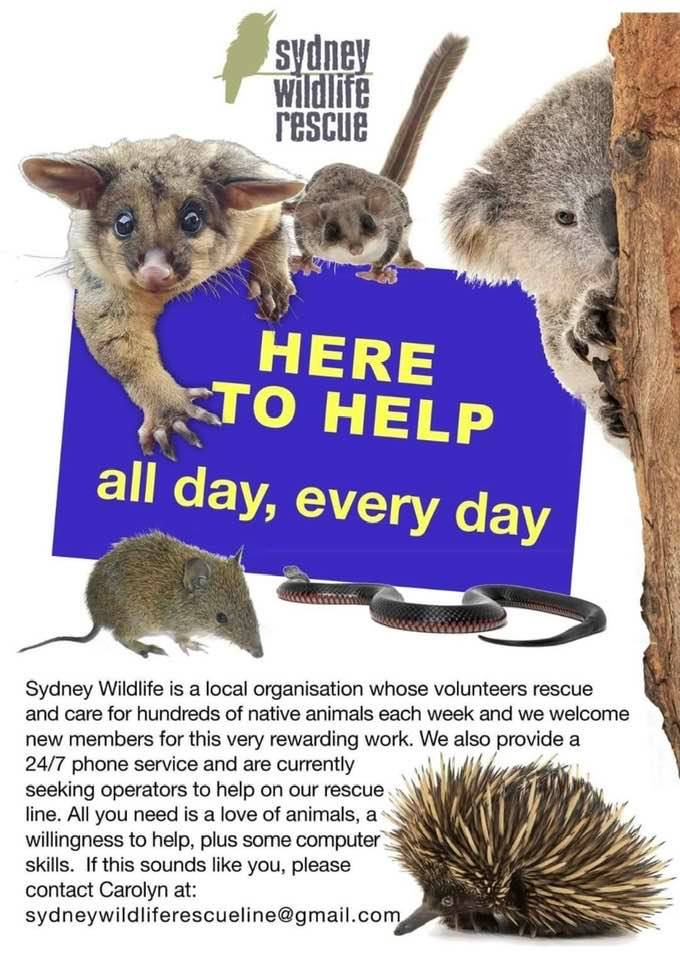
Avalon Golf Course Bushcare Needs You
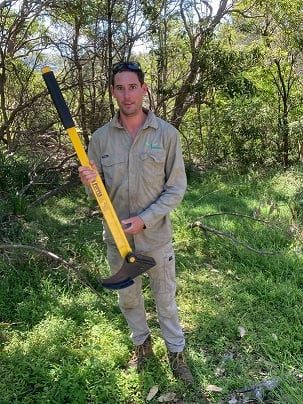
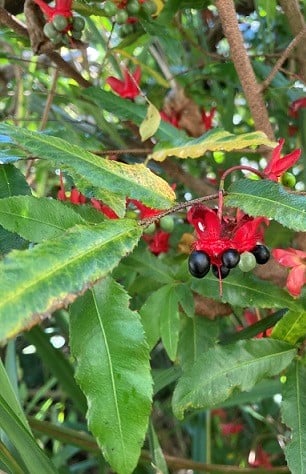
Bushcare In Pittwater
Where we work Which day What time
Avalon
Angophora Reserve 3rd Sunday 8:30 - 11:30am
Avalon Dunes 1st Sunday 8:30 - 11:30am
Avalon Golf Course 2nd Wednesday 3 - 5:30pm
Careel Creek 4th Saturday 8:30 - 11:30am
Toongari Reserve 3rd Saturday 9 - 12noon (8 - 11am in summer)
Bangalley Headland 2nd Sunday 9 to 12noon
Bayview
Winnererremy Bay 4th Sunday 9 to 12noon
Bilgola
North Bilgola Beach 3rd Monday 9 - 12noon
Algona Reserve 1st Saturday 9 - 12noon
Plateau Park 1st Friday 8:30 - 11:30am
Church Point
Browns Bay Reserve 1st Tuesday 9 - 12noon
McCarrs Creek Reserve Contact Bushcare Officer To be confirmed
Clareville
Old Wharf Reserve 3rd Saturday 8 - 11am
Elanora
Kundibah Reserve 4th Sunday 8:30 - 11:30am
 Mona Vale
Mona Vale Mona Vale Beach Basin 1st Saturday 8 - 11am
Mona Vale Dunes 2nd Saturday +3rd Thursday 8:30 - 11:30am
Newport
Bungan Beach 4th Sunday 9 - 12noon
Crescent Reserve 3rd Sunday 9 - 12noon
North Newport Beach 4th Saturday 8:30 - 11:30am
Porter Reserve 2nd Saturday 8 - 11am
North Narrabeen
Irrawong Reserve 2nd Saturday 2 - 5pm
Palm Beach
North Palm Beach Dunes 3rd Saturday 9 - 12noon
Scotland Island
Catherine Park 2nd Sunday 10 - 12:30pm
Elizabeth Park 1st Saturday 9 - 12noon
Pathilda Reserve 3rd Saturday 9 - 12noon
Warriewood
Warriewood Wetlands 1st Sunday 8:30 - 11:30am
Whale Beach
Norma Park 1st Friday 9 - 12noon
Western Foreshores
Coopers Point, Elvina Bay 2nd Sunday 10 - 1pm
Rocky Point, Elvina Bay 1st Monday 9 - 12noon
Gardens And Environment Groups And Organisations In Pittwater
Great Barrier Reef Snapshot Of Summer 2021-22 Released: Over 90% Of Coral Reefs Impacted By Bleaching Event; 4th Mass Bleaching Event Since 2016 - New Coal Mine Proposed For 10k From Reef - UAP>LNP Preferences In 2022 Election
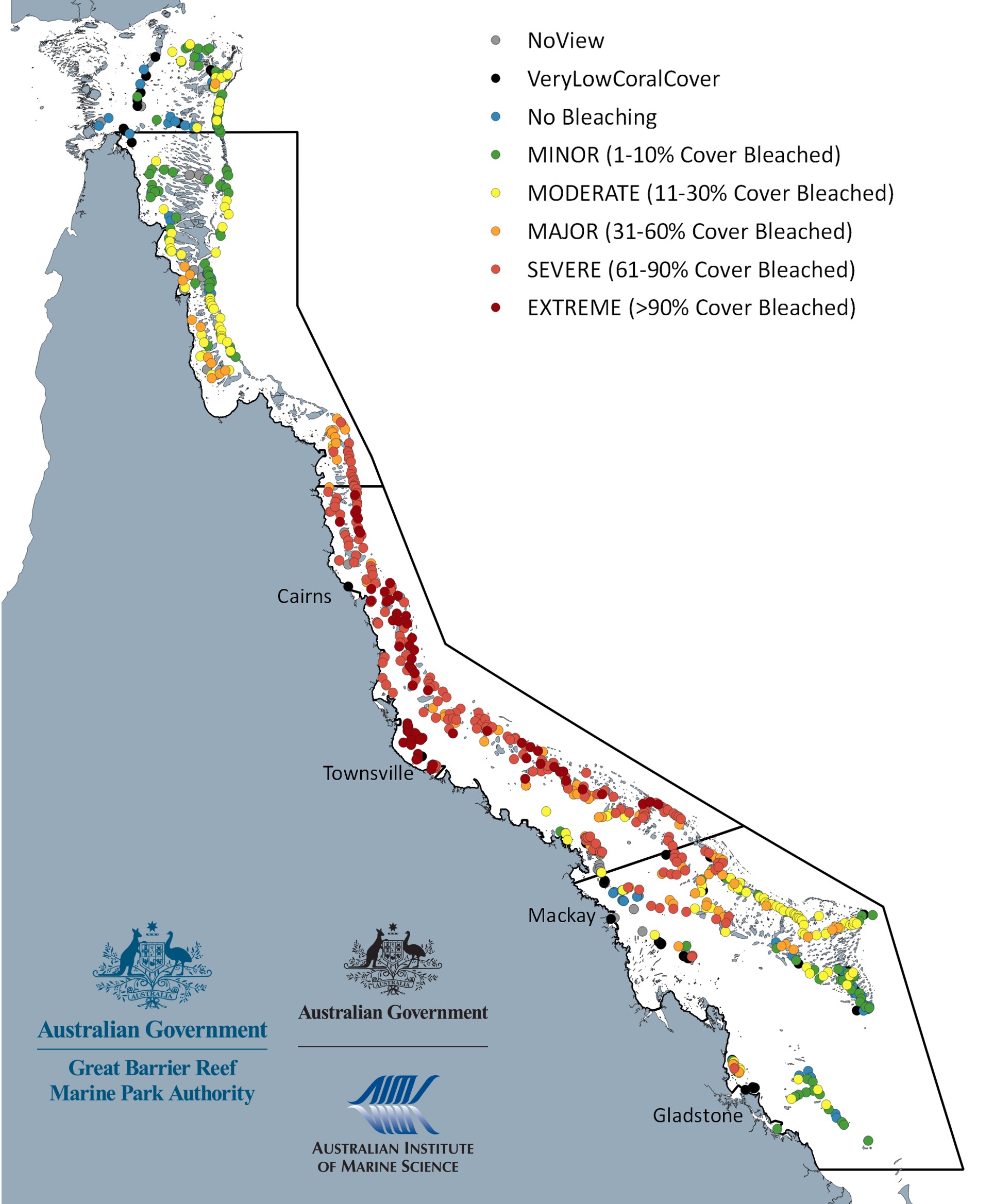
- A total of 719 reefs were surveyed from the air between the Torres Strait and the Capricorn Bunker Group in the Great Barrier Reef Marine Park.
- Of these, 654 reefs (91 per cent) exhibited some bleaching. Coral bleaching observed from the air was largely consistent with the spatial distribution of heat stress accumulation, with a greater proportion of coral cover bleached on reefs that were exposed to the highest accumulated heat stress this summer.
- The 2022 Aerial Survey Map illustrates the variation in bleaching observed across the Reef in the latter half of March.
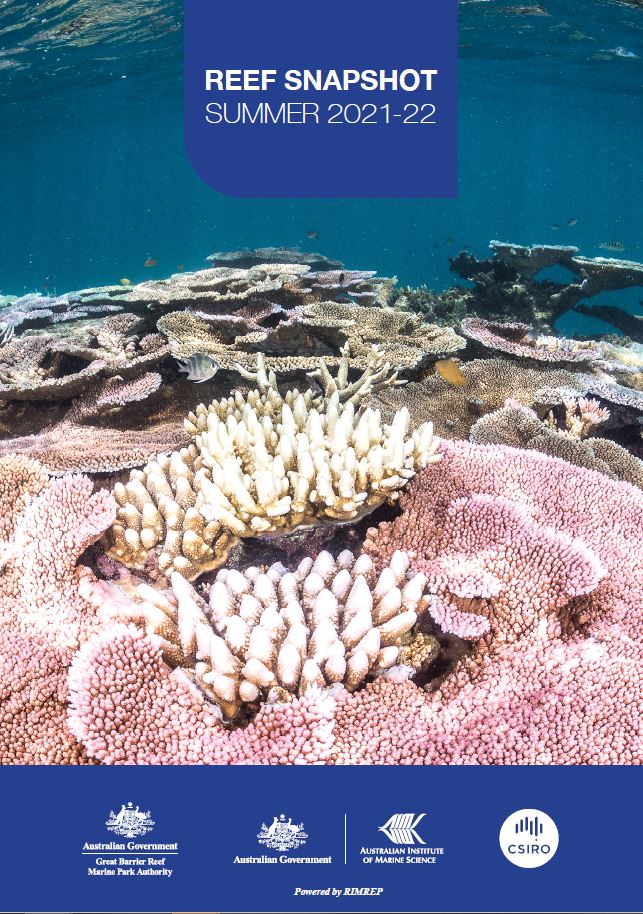 Northern region - includes coral reefs from the tip of Cape York down to Lizard Island and Cape Tribulation:
Northern region - includes coral reefs from the tip of Cape York down to Lizard Island and Cape Tribulation: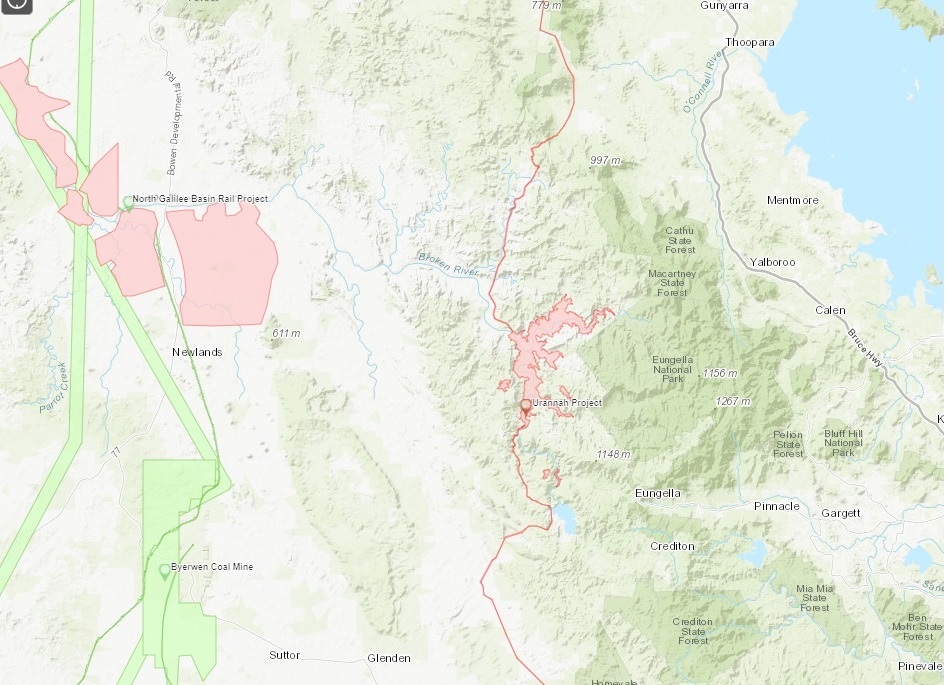
What the next Australian government must do to save the Great Barrier Reef
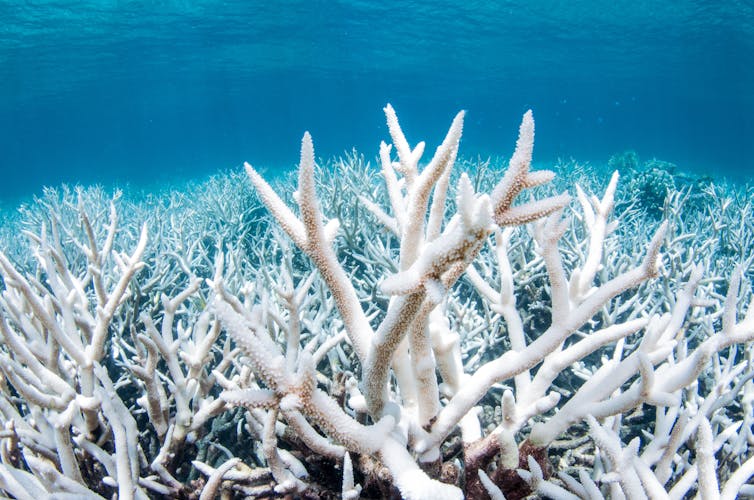
Widespread coral bleaching has now occurred on the Great Barrier Reef for the fourth time in seven years. As the world has heated up more and more, there’s less and less chance for corals to recover.
This year, the Morrison government announced a A$1 billion plan to help the reef. This plan tackles some of the problems the reef faces – like poor water quality from floods as well as agricultural and industrial runoff. But it makes no mention of the elephant in the room. The world’s largest living assemblage of organisms is facing collapse because of one major threat: climate change.
Our window of opportunity to act is narrowing. We and other scientists have warned about this for decades. Australia has doubled down on coal and gas exports with subsidies of $20 billion in the past two years. When these fossil fuels are burned, they produce carbon dioxide and other greenhouse gases that trap more heat in the atmosphere that also warms the ocean.
If our next federal government wants to save the reef, it must tackle the main reason it is in trouble by phasing out fossil fuel use and exports as quickly as possible. Otherwise it’s like putting bandaids on an arterial wound. But to help the reef get through the next decades of warming we’ve already locked in, we will still need that $1 billion to help reduce other stressors.
Why Is This New Bleaching Event Such Bad News?
Past bleaching events have been linked to El Niño events. Stable atmospheric conditions can bring calm, cloud-free periods that heat up the water around the reef. That can bring extreme summer temperatures – and that is when corals bleach.
This year is a La Niña, which can bring warmer-than-usual temperatures but also tends to bring more clouds, rain, and storms that mix up the waters. These usually spread the heat to the deeper parts of the ocean and mean lower temperature for corals. Not this time.
Global warming means corals are already close to their bleaching threshold, and it doesn’t take much heat to tip the balance. Water temperatures across the reef have been several degrees hotter than the long-term average. And the corals are feeling the heat.
Four times in seven years means that bleaching events are accelerating. Predictions have suggested that bleaching will become an annual event in a little over two decades. It may not be that long.
You always remember the first time you see bleaching in real life. For co-author Jodie, that was in 2016, off Lizard Island, a previously pristine part of the reef far from human impacts or water quality issues. The water was shockingly warm. Looking at our dive computers, we saw that the temperatures we had been simulating in our laboratories for 2050 were already here.
For a week, the marine heatwave pushed the corals to their limits. When corals experience heat stress, some initially turn fluorescent while others go stark white. Then the water goes murky – that’s death in the water. It’s heartbreaking to see. Grief is common among marine scientists right now.
Corals can recover from bleaching if they get a recovery period. But annual bleaching means there is not enough time for proper recovery. Even the most robust corals can’t survive this year after year.
Some people hope the reef can adapt to hotter conditions – but there is little evidence it can happen fast enough to outpace warming. While some fish can move to cooler waters further south, corals face ocean acidification, yet another problem caused by carbon dioxide emissions. As CO₂ is absorbed by the ocean, the changed chemistry makes it harder for corals to build their skeleton (and for other marine organisms to form a shell). There’s no safe place for corals to go.

What Does The Next Government Need To Do?
The evidence is clear. We see it with our own eyes. We’re barrelling towards catastrophic levels of warming, and there’s not enough action.
As it stands, policies on offer by our two major parties will not save the reef, according to new research by Climate Analytics. Current Coalition emissions reduction targets of 26-28% by 2030 would lead to a 3℃ warmer world, which would be devastating for the Great Barrier Reef.
Labor’s policies of a 43% reduction by 2030 still lead to 2℃ of warming. The teal independents and the Greens have policies compatible with keeping warming to 1.5℃, though how to achieve those goals is unclear. What is clear is that every tenth of a degree matters.
We need leaders who are serious about climate action. Who can acknowledge the truth that the problem is real, that we’re causing it, and that it’s hurting us right now.
There are still a few people sceptical that humans can change the climate. But today the changes are apparent.
The words “unprecedented” and “record-breaking” are starting to lose relevance for natural disasters because they are used more and more. Australians faced the 2019/20 Black Summer of megafires. This year we’ve had major flooding. Marine heatwaves have killed off almost all of Tasmania’s giant kelp.
But climate impacts are also being seen around the world – extraordinary drought gripping California, fires in melting Siberia and events scientists consider to be “virtually impossible without the influence of human-caused climate change”. That includes the accelerating impacts on coral reefs worldwide.
We need government policies matching the scale and urgency of the threat. That means getting to net zero as soon as possible. It isn’t only about the reef – it’s about all land and sea natural systems vulnerable to climate change, and the people who rely on them.
No developed country has more to lose from inaction on climate than Australia. But no country has more to gain by shifting to clean energy, through new economic opportunities, new jobs, and better protection for our natural treasures.![]()
Jodie L. Rummer, Associate Professor & Principal Research Fellow, James Cook University and Scott F. Heron, Associate Professor in Physics, James Cook University
This article is republished from The Conversation under a Creative Commons license. Read the original article.
Scorched dystopia or liveable planet? Here’s where the climate policies of our political hopefuls will take us
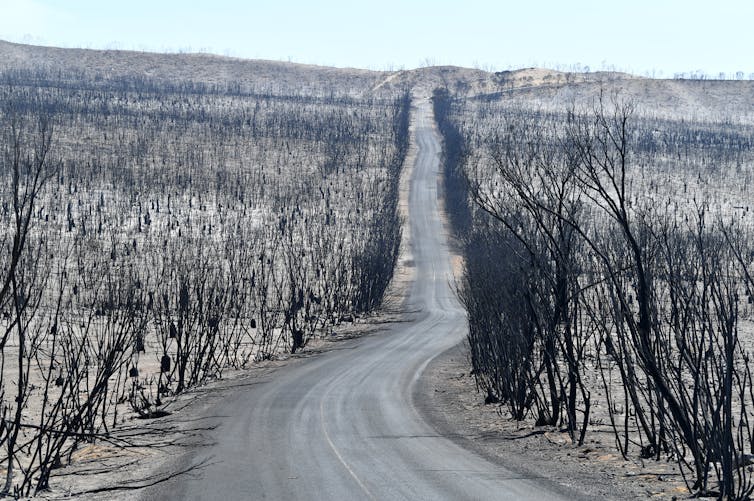
The federal election campaign takes place against a background of flooding on Australia’s east coast, where some residents remain in temporary accommodation a month after the disaster. It’s just the latest reminder Australia is set to become a poster child for climate change harms.
Australia has warmed about 1.4℃ since 1910. With it has come extreme heat, bushfires, floods, drought and now, a sixth huge bleaching event on the Great Barrier Reef.
Yet meaningful climate policy debate has largely been absent from this election campaign. So Climate Analytics, a research organisation I lead, has weighed up the policies of the Coalition, Labor, the Greens and the “teal” independents.
We analysed the global warming implications of each party’s or candidate’s target for 2030.
As the Intergovernmental Panel on Climate Change (IPCC) warns, this timeframe is crucial if the world is to stay below the Paris Agreement’s goal of limiting warming to 1.5℃ above pre-industrial levels. Dramatic action by 2030 is also vital to reaching net-zero emissions by 2050 or earlier.
Alarmingly, the Coalition’s climate policy is consistent with a very dangerous 3℃ of global warming. Labor’s policy is slightly better, but only policies by the Greens and the “teals” are consistent with keeping global warming at or below 1.5℃.
The Coalition
The Morrison government is pursing 26-28% emissions reduction by 2030, based on 2005 levels. If all other national governments took a similar level of action, Earth would reach at least 3℃ of warming, bordering on 4℃, our analysis shows.
That would mean the total destruction of all tropical reefs including Ningaloo and the Great Barrier Reef. And intense heatwaves over land that currently occur about once a decade could happen almost every other year.
At the United Nations climate conference in Glasgow last year, the Morrison government famously refused to increase its 2030 commitments. But the final pact from the meeting, which Australia signed, requires that by November this year, governments will strengthen their 2030 targets to align with the 1.5℃ goal.
Australia is under strong international pressure to meet this obligation, or face further global condemnation.
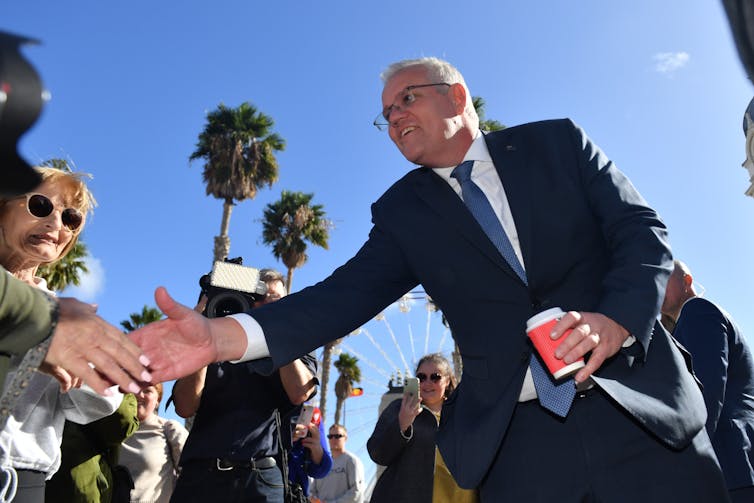
Labor
Labor’s target of a 43% emissions cut by 2030, from 2005 levels, is in line with 2℃ of global warming. That means it’s not consistent with the Paris Agreement.
Under 2℃ of warming, extreme heat events that currently happen once a decade could occur about every three to four years. And they would reach maximum temperatures about 1.7℃ hotter than heatwaves in recent decades.
Should Earth overshoot 1.5℃ warming and perhaps reach 2℃, some suggest this may be temporary and temperatures could be brought back down. This would require technologies that remove carbon dioxide from the atmosphere. But such technologies are uncertain and come with risks.
And the IPCC’s recent report warned even if 1.5℃ warming is exceeded temporarily, severe and potentially irreversible damage would result. The total loss of the Great Barrier Reef is just one example.
Under 2℃ of warming the most extreme heat events that occurred once in a decade in recent times could occur about every three to four years. The heatwaves would also reach a maximum temperature 1.7℃ hotter than those in recent decades.
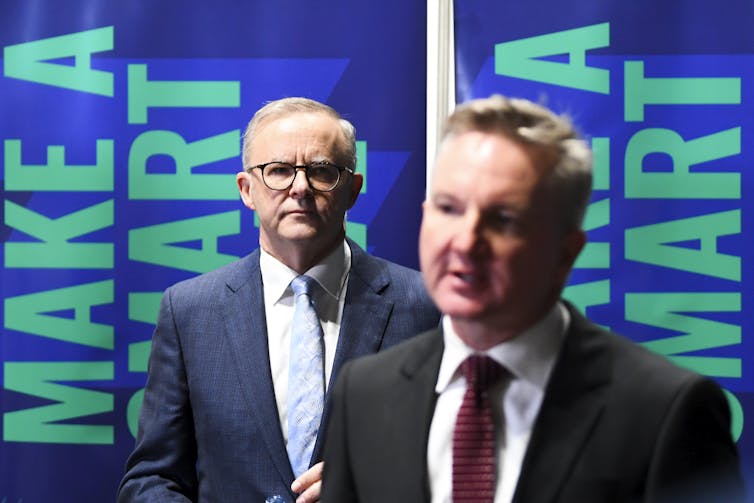
‘Teal’ Independents
The “teals” are a group of pro-climate independent candidates.
Most prominent is Warringah MP Zali Steggall, whose climate change bill proposes a 2030 target of 60% below 2005 levels. Most climate policies of the “teals” are generally in line with the Steggall bill.
The target is also supported by industry.
We find this target consistent with 1.5℃ of warming, and so compatible with the Paris Agreement. However, it’s at the upper end of the emission levels consistent with the 1.5℃ pathway.
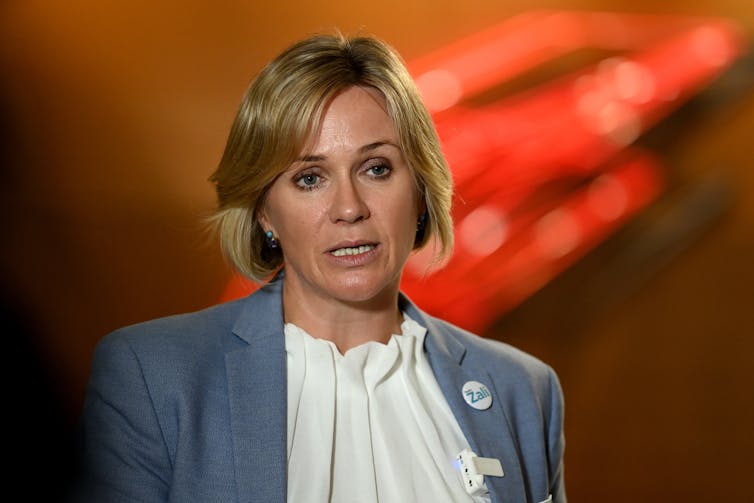
The Greens
Of all the climate policies on the table this election, the Greens target of a 74% cut by 2030, based on 2005 levels, is most comfortably consistent with keeping warming below 1.5℃.
That level of warming would still cause damage to Earth’s natural systems and our way of life. But it would avert significant devastation – for example, allowing parts of the Ningaloo and Great Barrier reefs to survive.
Under 1.5℃ global warming, the most extreme heat events that presently occur once a decade could be limited to about every five to six years.
The Land Sector Problem
Our calculations above do not paint a rosy picture. But they are, in fact, optimistic.
That’s because they include emission reductions from the land and forestry sector through such activities as tree planting and maintaining native vegetation. These so-called carbon sinks were recently described by a key insider as a “fraud”.
If the land and forest sector is excluded from the analysis, the various emissions reduction targets fall considerably: to between 11% and 13% for the Coalition, 31% for Labor, 50% for the teals and 67% for the Greens.
What’s more, even warming limited to 1.5℃ will reduce the capacity of the land sector to remove and store carbon.
Over To You
The scientific consensus is clear. Greenhouse gas emissions must peak by 2025 at the latest and plummet thereafter, to limit global warming to 1.5℃.
Unless policies are substantially strengthened, Earth is set to hit 1.5℃ warming in the 2030s, and a future of at least 3℃ warming awaits.
The onus is on the next parliament to protect Australians from climate catastrophe. On May 21, Australian voters have a chance to send a clear message about the kind of world we want to leave for future generations.![]()
Bill Hare, Adjunct Professor, Murdoch University
This article is republished from The Conversation under a Creative Commons license. Read the original article.
Young voters will inherit a hotter, more dangerous world – but their climate interests are being ignored this election
Hannah R. Feldman, Australian National UniversityWhile there was plenty of heat in Sunday’s night’s debate between Labor and Coalition leaders, one issue was barely mentioned: climate change. This raises a large red flag for Australia’s young voters.
In an election term marred by extreme bushfires, floods and heat waves, there was a conspicuous lack of climate change questioning during the debate. And when prompted on how young people will fare this election, both leaders quickly pivoted to housing reform and job security for all Australians.
For a generation that will face an extreme increase in environmental disasters in their lifetime, research consistently shows climate change represents one of the top challenges on the minds of young people. Students have recently been taking this message across the country, demanding greater climate action by political leaders ahead of the federal election on May 21.
So which party really has young interests at heart – and which doesn’t? Let’s look at where the major players stand on youth and climate change policy.
How Does Labor Rate?
According to vote compass data, more Australians have rated climate change as their top concern this election than any other issue. Climate change was also overwhelmingly rated as the top issue in The Conversation’s #SetTheAgenda poll.
But despite the long-term vision of voters, Opposition Leader Anthony Albanese was keen to focus squarely on immediate returns in Sunday’s debate, especially on issues related to “right now” – a phrase repeated nine times in his closing remarks.
Albanese took the campaign to classrooms this week, and pivoted to housing reform when directly asked about the future of youth lives in Australia.
Not only was this a missed opportunity to mention the newly announced funding for high-achievers to study teaching, but also to draw attention to the fact Labor also has an engagement plan to reconnect with young people in politics.
Youth voters often feel shut out of policy engagement exercises, finding consultation processes disingenuous and serving the agendas of people in power, rather than through genuine youth representation.
Labor policy looks to overcome some of these challenges by connecting government with youth voices in decision making. While this is still a very top-down approach, it could be a promising step towards meaningful integration of young people in politics.
With these foundations, it’s unfortunate that climate change and youth issues have not been openly championed by Albanese. Young people will have to go searching through buried policy to see whether they’ll be heard after May 21, but not before.
What About The Coalition?
Likewise, the Liberal National Party has been generally shying away from climate change discourse.
We saw this clearly in March, for example, when the federal court found Environment Minister Sussan Ley holds no duty of care towards young people facing the climate crisis. Ley had successfully appealed a previous ruling in a landmark case brought by eight students, setting a disappointing stage for the Coalition’s campaign trail.
The Liberal Party, however, do have policy support for communities and structures that surround young Australians, including funding for schools, parents, and getting young people into jobs, as Prime Minister Scott Morrison repeatedly highlighted in Sunday’s debate.
But Liberal Party youth policy also comes with a great irony: if elected, they promise large investments in youth mental health, despite climate change (and a lack of action) being a key source of anxiety and worry for young people.
Much research, including my own, has shown climate change presents an extreme burden on the mental health of young people, particularly teenagers. But while anxiety can be a source of disengagement from politics entirely, other young people can use it as motivation to engage with politics in ways they haven’t before.
This will likely be a driving force in School Strike 4 Climate events in the lead up to May 21 (and beyond), including planned action at Treasurer Josh Frydenberg’s Kooyong electorate offices.
Overall, the Coalition’s hopes for an employed youth sector are not without merit, but failing to link the need for youth reform with the climate emergency seriously tarnishes any credibility they may have had on youth issues.
The Greens And Independents?
At the last election in 2019, Australian youth were overwhelmingly left-leaning, with the lowest Liberal vote on record for voters under 35. Indeed, 37% of 18-24 year olds were primarily voting for the Greens, and that number is likely to remain high on May 21.
The Greens are the only major player in the upcoming election to specifically mention youth and climate change together in their policies. They acknowledge the long term consequences of current climate action on future Australians, and also align strongly with the demands of the School Strike 4 Climate movement.
Much of the Greens climate policy is mirrored in some way by “teal” Independents. But the crossbench hopefuls are decidedly targeting different demographics in their contested seats: those trending Green are generally younger and on lower incomes than those in seats turning teal.
In key electorates such as Wentworth in New South Wales or Goldstein and Macnamara in Victoria, young people represent 16-18% of registered voters. Climate-aligned platforms may well be the deciding factor in seats moving away from the major parties.
The Verdict
While the near-sighted campaign trail might not care too much about youth voters, the long term consequences of their treatment will come with very real returns as they age.
Late teens and early-20s are critical ages for formulating political personas that only grow stronger into adulthood. Issues that matter to youth such as climate change are not going to diminish in their lifetimes.
Albanese may have won Sunday night’s debate by a hair according to The Conversation’s expert panel, but it was clear that Australia’s young people were not winners in the political shouting match.
The future of youth engagement and climate change may take a positive turn with a Labor government or a powerful crossbench, but the major parties are still too narrowly focused on the short term.![]()
Hannah R. Feldman, Research Fellow, Institute for Water Futures, Australian National University
This article is republished from The Conversation under a Creative Commons license. Read the original article.
4 reasons why the Morrison government’s forestry cash splash is bad policy
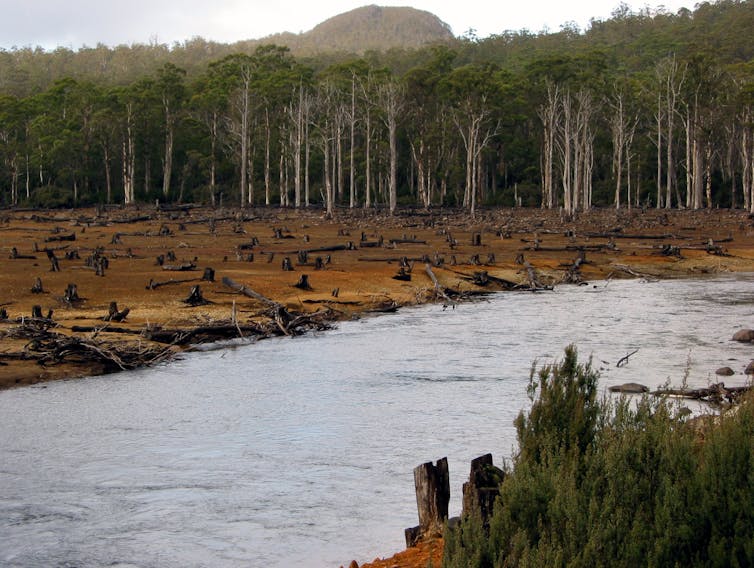
This federal election campaign has involved very little discussion of environmental or natural resource policies, other than mining. An exception is a A$220 million Morrison government pledge for the forestry industry.
The money will be invested in new wood-processing technology and forest product research, and used to extend 11 so-called “regional forestry hubs”. Some $86 million will aid the establishment of new plantations.
Prime Minister Scott Morrison said he would not support “any shutdown of native forestry” and claimed the funding would secure 73,000 existing forestry jobs. The spending on native forests, however, is problematic. In 2019-20, 87% of logs harvested in Australia came from plantations, and more investment is needed to bring this to 100%.
Here, we show how directing public funds to native forest logging is bad for the economy, the climate and biodiversity, and will increase bushfire risk.
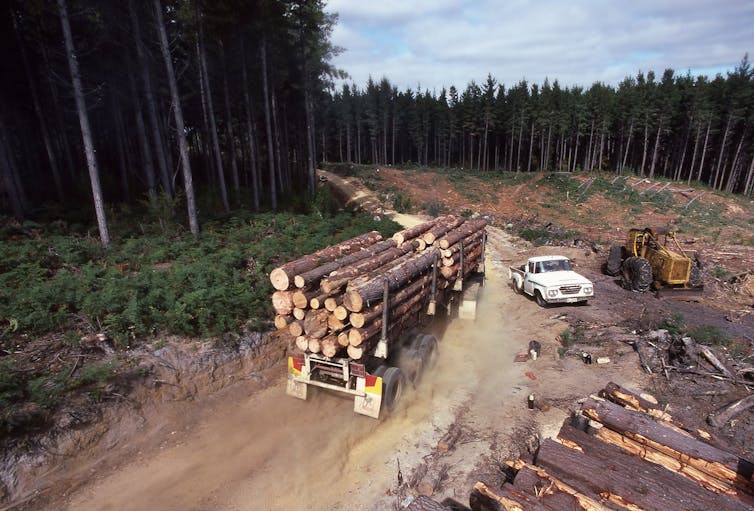
1. Economics
Native forest logging has long been a marginal economic prospect. The Western Australian government has recognised this, electing to halt the practice by the end of 2023. It will instead create sustainable forestry jobs by spending $350 million expanding softwood timber plantations.
The move followed Victoria’s promised end to native forest logging in 2030.
In Victoria, native forest logging has repeatedly incurred substantial losses across large parts of the state. Data from the state’s Parliamentary Budget Office in 2020 show Victoria would be more than $190 million better off without its native forest logging sector.
Native forest logging sustains far fewer jobs than the plantation sector, and does not produce substantial employment opportunities in any mainland Australian state.
For example, only about 300 direct and indirect jobs are sustained by native forest logging in southern NSW.
A recent economic analysis showed ceasing native forest harvesting in that region would bring $62 million in economic benefits – a result likely to be repeated in native forestry areas across Australia.
About 87% of sawn timber used in home construction is derived from plantations. The vast majority of native forest logged in Victoria and southern NSW goes into woodchips and paper pulp.
Victoria exports 75% of plantation-derived eucalypt pulp logs. A small percentage of this diverted for domestic use would readily replace native forest wood at Victoria’s biggest paper mill at Maryvale. The feasibility of this has been known for years.
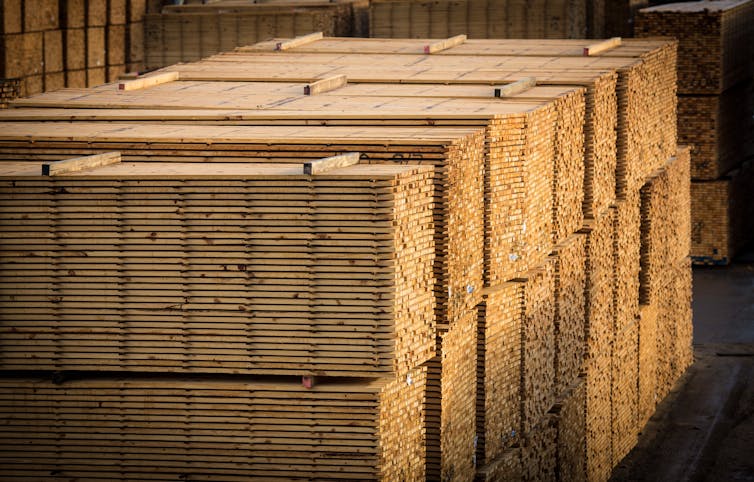
2. Climate Change
Native forest logging in Australia generates around 38 million tonnes of carbon dioxide (CO₂) a year.
Victoria’s phase-out of native forest logging by 2030 will reduce emissions by 1.7 million tonnes of CO₂-equivalent gases each year for 25 years, equivalent to taking 730,000 motor vehicles off the road annually.
Ending native forest logging in southern NSW would likely be the biggest carbon abatement project in that state.
These benefits also bring economic value. Even under relatively low market prices for carbon, the value of not logging, in terms of reducing greenhouse gases, far exceeds the economic benefits of native forest logging.
3. Bushfire Risk
There’s now unequivocal evidence that logging native trees makes forests prone to more severe bushfires. Analysis of the 2019-20 Black Summer fires showed logged forests always burn more severely than intact ones.
Under moderate fire weather conditions during Black Summer, logged forests burned at higher severity than intact forests burning under extreme fire weather.
These logging-generated risks were particularly pronounced in southern and northern NSW. Importantly, they were also evident in Victoria’s 2009 Black Saturday fires in Victoria.
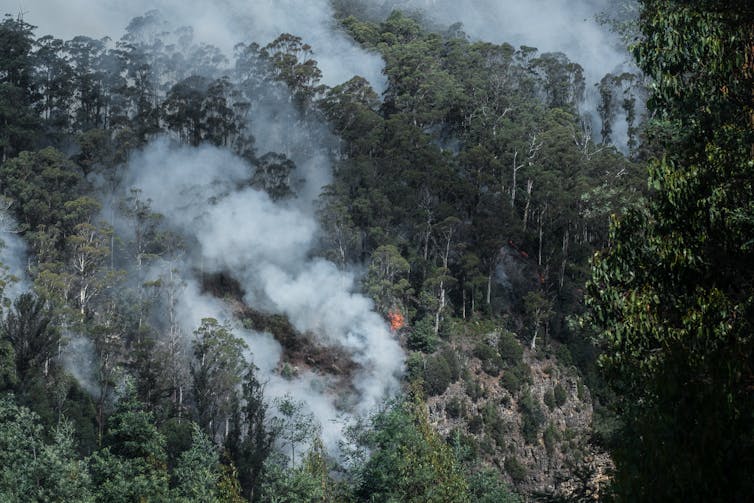
4. Biodiversity Conservation
Numerous studies have demonstrated the damage native forest logging causes to biodiversity. In Victoria, for example, a 2019 analysis of areas proposed for logging showed it would negatively affect 70 threatened forest-dependent species, such as the Leadbeater’s possum.
The bottom line is that ongoing logging will drive yet further declines of Australia’s threatened species and add to the nation’s sad record on biodiversity loss.
The Upshot
The empirical evidence points in one direction: ending native forest logging in Australia would bring substantial and multiple benefits to society and nature.
We welcome the Morrison government’s spending on supporting new plantations. To create the most positive return on taxpayer investment, however, the bulk of other industry funding should be directed to enhancing manufacturing and markets for high-value wood products from plantation timber.![]()
David Lindenmayer, Professor, The Fenner School of Environment and Society, Australian National University; Brendan Mackey, Director, Griffith Climate Action Beacon, Griffith University, and Heather Keith, Senior Research Fellow in Ecology, Griffith University
This article is republished from The Conversation under a Creative Commons license. Read the original article.
Climate change hits low-income earners harder – and poor housing in hotter cities is a disastrous combination
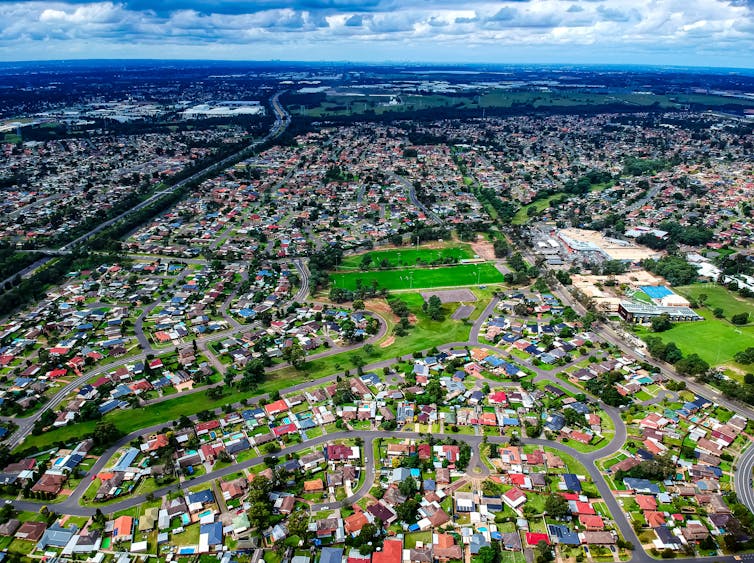
Cost of living is a major focus in this election campaign, and yet political leaders have been unacceptably silent on the disproportionate impact of climate change on Australians with low incomes. This is particularly true for Western Sydney, home to around 2.5 million people.
Over the last half century, the balance of Sydney’s social housing has been pushed to the west, where it can be up to 10℃ hotter than the breeze-cooled coast. Meanwhile, rapid housing development reduces existing tree canopy daily, further intensifying heat.
This situation locks in cycles of disadvantage for decades and generations to come. Even if we limit global warming to 1.5℃ this century, Western Sydney will still experience fewer than 17 days of 35℃ per year by 2090.
Australia needs a more holistic, forward-thinking approach to the design of hot cities, one that’s up to the task of changing with the climate.
Living With Urban Heat Now
Low-income communities are more likely to live in poorly constructed, heat-affected rental accommodation and least able to afford air conditioning. What’s more, those living in community housing may be restricted from installing air conditioning units.
Our research from 2016 found residents expend a lot of mental and physical energy during summer just to keep their homes bearable, while worrying about how much cooling might be costing.
After interviewing vulnerable groups of people in Western Sydney – such as elderly citizens, disability carers and young mothers in social housing – we found people turn to lessons from their parents to find relief from heat.
This includes soaking sheets in water, directing fans to blow air over them and create cool pockets in the house, confine themselves to cooler rooms, and cover west-facing windows with blankets or aluminium foil.

This summer’s La Niña weather pattern may have spared Western Sydney from scorching daytime highs, but residents had to contend with hotter and more humid nights. Wet conditions and cloud cover inhibit the capacity of poorly designed houses to shed the heat, leading to sleeplessness.
Many Western Sydneysiders work from home, too. Community organisation Better Renting recently produced a report detailing the impact of poor housing on worker productivity during the pandemic. It found those working from home without the means or capacity to improve their environments said they were stressed, couldn’t focus, and needed to finish work early during summer.
Air-conditioning can provide relief and is critical for some residents, such as some people living with a disability who depend on cool homes and cars for survival. But air-conditioning displaces the indoor heat to the outside, contributing to a more hostile outdoor environment.
So while air-conditioning offers a short-term solution, it does nothing to address long-term disadvantage.
‘Solutions’ Don’t Go Far Enough
Social disadvantage underscores the limitations of well-meaning technical solutions, such as the New South Wales government’s program to plant five million trees by 2030, or City of Sydney’s project of committing to renewable-powered air conditioning.
These solutions don’t go anywhere near far enough to address the fundamental short-sightedness in how we design and plan our cities.
For example, young trees need far more care to reach maturity through extreme weather, unlike older trees, of which many have been cut down to make way for development. And solar-powered air conditioning will not undo the compounding impacts of urban heat, which research shows make us sedentary, passive and lonely and insecure because it keeps us indoors and isolated from each other.

Indeed, Western Sydney’s current trajectory of urban growth will see urban heat and its impacts worsen, particularly as the state government resists mandating lighter-coloured roof tiles as a perceived impediment to development. Lighter-coloured roof tiles are better at reflecting rather than absorbing heat, and are a low-hanging fruit for cooling homes.
This trajectory will subject future generations of Western Sydney residents to a city that may become ultimately uninhabitable for months at a time. These predictions may seem dire, but we cannot afford to ignore them.
One stark prospect is that even newer and more expensive homes being built in Western Sydney’s growth areas may become stranded assets in a future, when 50℃ summer days are a norm and the area is subject to regular flooding.
So What Do We Do?
Researchers and policy makers are turning their attention to making Australian cities more “climate-ready”.
While catastrophic for communities, the recent floods, fires and other disasters carry valuable lessons about design failures and community-led solutions that have ultimately kept people safe.
We’ve learnt “climate-readiness” cannot be done in a piecemeal way or achieved in the background of everyday life, like set-and-forget technologies. Instead, it means noticing how the natural and built environments interact, and the social practices that contribute to cooler, more liveable futures.
This might include enrolling communities in the care of young trees around their homes, maintaining breeze ways or shade through neighbourhoods, outdoor cooking during summer to reduce heat inside, or shifting the rhythms of social life to cooler night time hours.
This is encompassed in a process called “transition design”, which takes holistic, long-term view of urban planning to forge a sustainable future. This means starting with what residents want and know works – whether its creating cool pockets in the home or reaching out to neighbours when heat is on its way.
Planners, designers and policymakers should practically link these social solutions to designs that make these more accessible, manageable, engaging and safe.
Parts of everyday life will look very different in future as we grapple with managing energy and adapting homes to changing climates. But we must also recognise and hold on to what’s important, including reclaiming what we’ve lost to rampant development.
Long-term residents of Western Sydney may recall a more liveable city, with shaded pedestrian links between homes and shops, seating and facilities in parks and better access to public transport.
These basic amenities are a commonwealth that allow us to remain at home in an increasingly less hospitable world.![]()
Stephen Healy, Senior Research Fellow, Institute for Culture and Society, Western Sydney University and Abby Mellick Lopes, Associate Professor, Design Studies, Faculty of Design, Architecture and Building, University of Technology Sydney
This article is republished from The Conversation under a Creative Commons license. Read the original article.
The world doesn’t care about swings in marginal seats. Climate action must spearhead a new Australian foreign policy

Late last year, more than 100 former diplomats and officials called for a new Australian foreign policy — with climate action at the centre — to help cement Australia’s future in a world rapidly shifting to net-zero emissions.
Failure to act on climate change, they argued, would erode our national interests and international influence. Australia’s allies, partners and competitors would penalise us for not pulling our weight. Regardless of who wins the federal election, Australia’s next government must heed this advice.
There’s a saying that “all politics is local”. But Australian climate politics is dictated as much by the realities of a warming planet, and seismic shifts in global energy markets, as by marginal electorates in Queensland.
Managing the transition to a net-zero emissions economy must be a priority task for the next government. Our strategic and economic success depends on it.
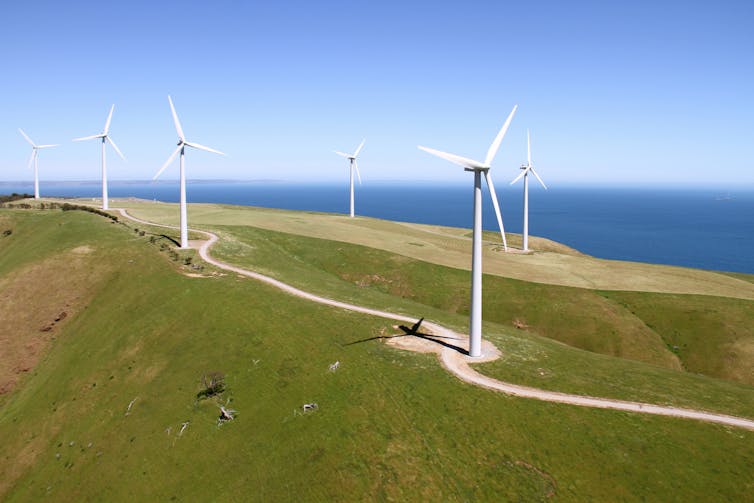
How Did We Get Here?
In recent times, Australian foreign policy has promoted the nation as an energy superpower – a major supplier of coal and gas to Asia. Reducing emissions has been a secondary focus, as Australia’s diplomatic machinery is tasked with promoting fossil fuel exports.
This wasn’t always the case. When a scientific consensus on global warming emerged in the late 1980s, the Hawke Labor government appointed an ambassador for the environment to promote climate action, and supported ambitious national targets to cut emissions.
By the mid 1990s however — under the influence of a powerful fossil fuel lobby and following a national recession — the Keating government was increasingly concerned about potential economic costs of climate action. The subsequent Howard government decided taking serious climate action was not in Australia’s interests
The argument then, as it is now, was that Australia’s economy depends on fossil fuels, and cutting emissions would cost us relatively more than it would other countries.
So ever since, rather than act on climate change, Australia has sought to minimise obligations to cut emissions while expanding coal and gas exports.
Today, Australia has one of the weakest 2030 emissions targets in the developed world. At last year’s global climate talks in Glasgow, Australia refused to join other developed nations in strengthening its ambition.
United Nations Secretary-General Antonio Guterres describes Australia as a holdout on climate action. He is right. Australia is among a small, isolated group of countries — including Russia and Saudi Arabia — resisting global efforts to cut emissions.
Not by coincidence Australia is also the world’s third-largest fossil fuel exporter, behind only Russia and Saudi Arabia.
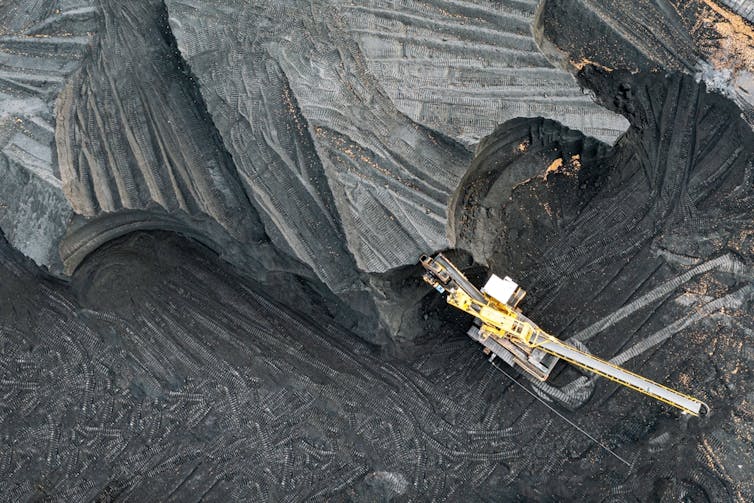
The World Is Changing Around Us
When Prime Minister Scott Morrison last year sought support from his Nationals colleagues for a net-zero by 2050 target, he urged them to accept economic reality. The world is transitioning to net-zero. And climate action is now a key pillar of the Western alliance, and so key to Australia for national security reasons.
Morrison’s arguments show how the world has changed since he came to power in August 2018.
Australia’s most recent foreign policy white paper, released in 2017, forecast strong global growth in demand for fossil fuels. Those forecasts have proved wrong.
Instead, Australia’s key destination markets, such as Japan, China and South Korea, are phasing out fossil fuels. In the past two years alone, more than 100 countries, representing around 90% of the global economy, have committed to net-zero emissions.
This mega-trend has fundamentally altered Australia’s economic prospects.
Climate has also moved to the centre of global geopolitics. Major powers are integrating climate into defence and strategic planning, foreign policy, diplomacy and statecraft.
The European Union will next year start imposing border costs on imports from countries not doing enough to cut emissions, a move which could eventually shave A$12.5 billion from the Australian economy annually. G7 countries are planning a “climate club” to impose costs on countries that don’t meet shared standards for climate policy.
In the US, a new Indo-Pacific strategy signals an intention to pressure countries such as Australia to set a stronger 2030 target. This is partly so the US and allies might work together to press China to cut emissions.
Security Mismatch In The Pacific
The recent security deal between the Solomon Islands and China may demonstrate how Australia has yet to integrate climate action into its own statecraft.
For decades, Pacific island countries — including the Solomon Islands — have argued climate change is their first-order security threat, particularly for atoll island states who face inundation from rising seas.
But those concerns are not reflected in Australia’s current efforts to engage more closely with the Pacific. The recent Pacific Step Up strategy is largely driven by concern that China could leverage infrastructure lending to establish a military base in the region.
A former Australian intelligence chief, Nick Warner, says Australia’s position on climate has “undermined our standing in the Pacific” — a view echoed by former Australian High Commissioner to the Solomon Islands, Peter Hooton.
The lesson is clear. In a warming world climate policy is foreign policy.
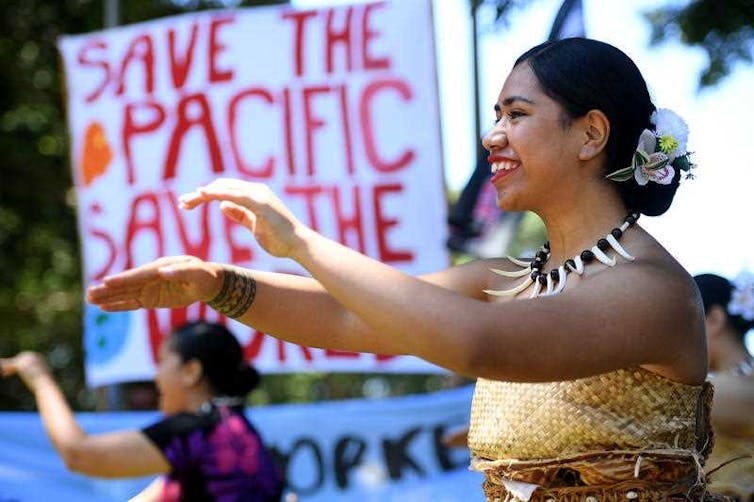
Australia As A Clean Energy Superpower
Our foreign policy must be retooled to reposition Australia as a clean energy superpower, and to seize the economic opportunities that will flow.
As the sunniest and windiest inhabited continent on the planet, Australia has world-class renewable energy resources and enviable reserves of minerals needed for the electric vehicles, batteries and wind turbines of the future.
Australia is well-placed to export zero-emissions electricity to growing economies in Asia. Our renewable energy advantage also means we can competitively produce zero-carbon versions of the commodities the world urgently needs – steel, aluminium, hydrogen and fertilisers.
The Business Council of Australia estimates clean export opportunities could generate 395,000 jobs by 2040. With the right policy framework, Australia could grow a new clean energy export mix worth A$333 billion each year, almost triple the value of existing fossil fuel exports.
A Big Task For The Next Government
Whichever party wins the election on May 21 should reposition Australia as a global climate leader. This will require negotiation between domestic constituencies resisting change and an international context that’s changing regardless.
The Department of Foreign Affairs and Trade, and Australia’s diplomatic network, should be tasked with promoting climate action. And a climate change ambassador should be appointed - separate from the existing ambassador for the environment.
Australia should also bid to host the annual UN climate summit and co-host the UN talks with Pacific island states.
Above all, the next government must strengthen Australia’s 2030 emissions reduction target before global climate talks in Egypt in November. We should at least match our key allies and commit to halving emissions this decade. Failure to do so will only bring increasing diplomatic and economic costs.![]()
Wesley Morgan, Research Fellow, Griffith Asia Institute, Griffith University
This article is republished from The Conversation under a Creative Commons license. Read the original article.
Australia’s next government must start talking about a ‘just transition’ from coal. Here’s where to begin
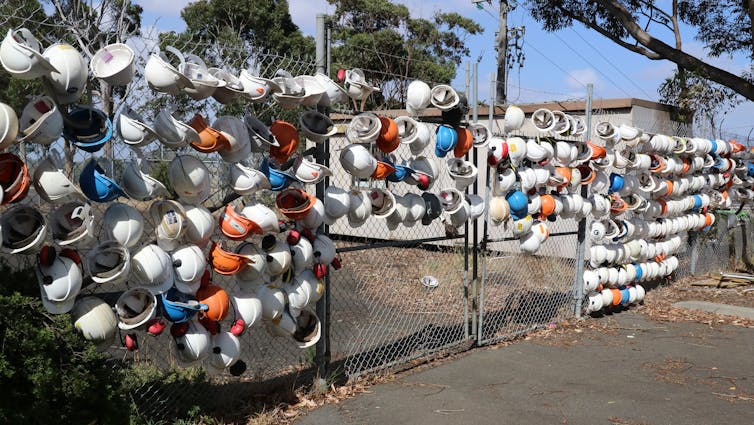
At last year’s Glasgow climate conference, countries lined up to increase their ambition to cut greenhouse gas emissions. Even Australia brought a new target of net-zero emissions by 2050, and signed the final agreement which called for a global “phase down” of coal.
That leaves Australia with two particularly important tasks. First, our power grid – reliant on coal for about half our electricity – must shift to renewable energy. Second, we must dramatically reduce coal exports, which produce about 3% of global CO₂ emissions when burned overseas.
Clearly, Australia needs to have a serious conversation about what the move away from coal means, and how to make it fair. This shift is often called a “just transition”. In our recent study we examined how the idea is understood in Australia.
We found several barriers to a productive conversation about the just transition – not least, an almost complete absence of the federal government in talking about or planning for it. This is a failing the next government must not repeat.
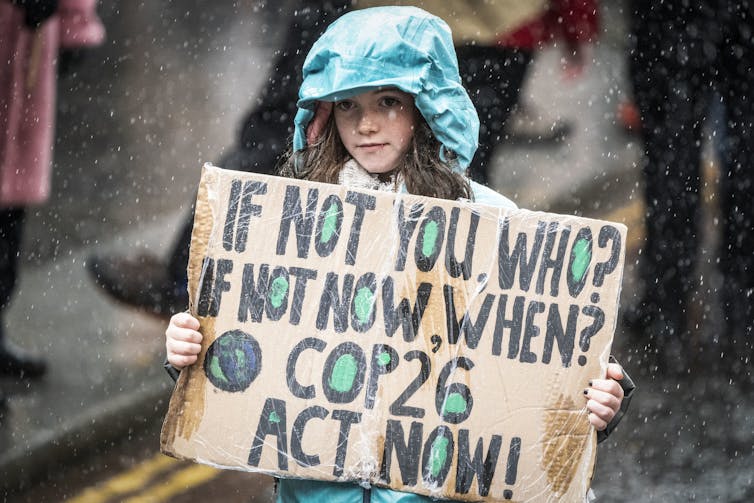
A Tale Of Two Coal Industries
First, it’s important to define “just transition”. Many different definitions are used, but include as a key feature that no-one is left behind when making necessary changes to energy and economic systems.
That means sharing the costs and benefits of the changes fairly, supporting workers with new jobs or retraining, and supporting communities through broader economic changes.
Our research into the just transition in Australia involved reviewing academic research and other literature; interviews with key people from civil society, government and industry; and analysis of hundreds of media articles.
Interviewees reported that the limited discussion in Australia about a just transition has focused on the electricity sector, particularly after the sudden, high-profile closure of Victoria’s Hazelwood Power Station in 2017. Discussion about winding back coal exports was considered too difficult.
Australia’s electricity sector is on the road to decarbonising, and coal-fired power stations are closing faster than expected. In February, for example, Origin Energy announced it would close its massive Eraring Power Station in three years – the soonest timeframe allowed under national rules.
But Australia’s coal mining industry dwarfs the power industry. Some 90% of Australia’s black coal is exported. Most ends up in Asia, either in power stations producing electricity or blast furnaces producing steel. Australian coal contributes more to CO₂ emissions overseas than at home.
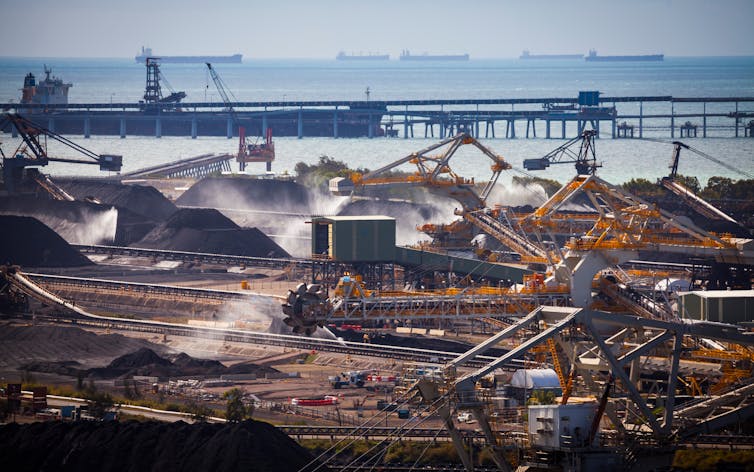
Just Transition Is A Toxic Term
Our study revealed how “just transition” is a problematic term in Australia. This is largely driven by parts of the media and some politicians who equate the transition with job losses.
This “jobs versus environment” narrative has been cultivated throughout the so-called “climate wars” plaguing federal politics over the past 15 or so years.
The narrative was exemplified by Nationals leader Barnaby Joyce late last month. Asked if the government planned move away from coal, he said “we’re not going to be saying to people the word ‘transition’ because that equals unemployment”.
The argument resonates in regional communities for two main reasons, according to our interviewees. First, most people calling for a “just transition” are not locals and there is a perception they don’t understand the needs and aspirations of coal towns. And second, many communities have had bad past experiences of economic restructuring programs.
Many interviewees said it’s important to discuss the just transition, but they avoid using the term explicitly because of the negative connotations.
Government Leadership Is Sorely Needed
A just transition is not just something environmental or union campaigners are calling for. Our research revealed almost all key stakeholders are willing to plan for it – from industry to community groups, investors and some state and local governments – even if their motivations differ.
These groups also agreed a lack of government leadership was the biggest barrier to action. In particular, the federal government has been almost completely absent from discussions.
Whichever side wins the May 21 election needs to start talking about, and actively planning, a just transition. That means introducing policies to encourage coal power generation and coal exports to wind down, supporting new industries and helping communities manage the change.
Federal government support is crucial because the transition away from coal affects all of society. Governments can set up the stable, long-term institutions and policy mechanisms to support state and local transition efforts.
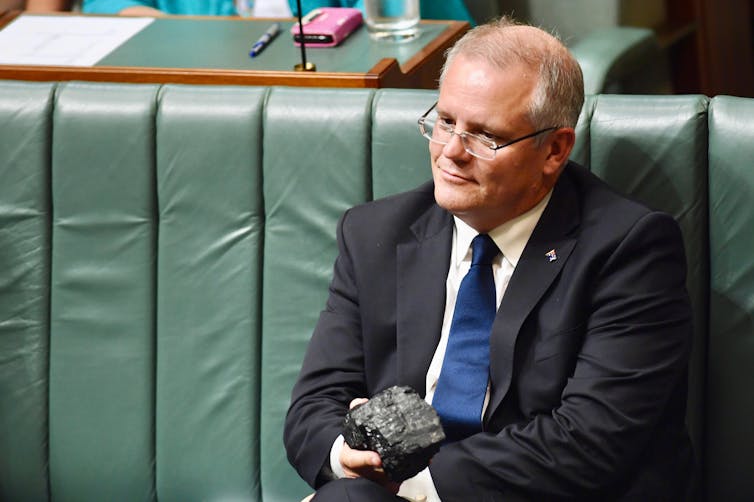
How To Have Productive Conversations
Our research highlighted ways the federal government and others can have productive conversations about the just transition away from coal.
Outsiders going to regional communities should listen to people to understand their aspirations and fears.
Explain that the transition away from coal is already underway, and be explicit about what a just transition means: reducing coal production, but increasing other energy sources and diversifying regional economies.
Make clear that the transition is an opportunity for regional people with skills that society needs as our energy systems change. And explain the practical actions available to help communities undergoing major change.
Finally, centre conversations on livelihoods and communities, rather than wages and workers. The transition will only be just if it involves everyone.
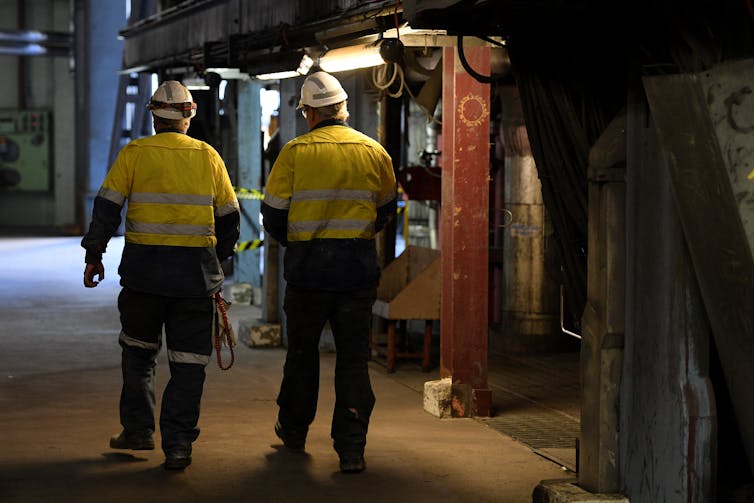
Which Way Now?
In the absence of strong government policy, progress towards a just transition has been challenging. Notwithstanding this, we are seeing change.
Australia’s power generation industry is already transitioning away from coal. And Australia’s two largest export-oriented coal miners, Glencore and BHP, also see clear limits on ongoing coal exports.
The shift away from coal is now inevitable. But if not managed effectively, the transition will be disorderly rather than just. This will damage not just coal communities, but Australia’s economy and international standing. ![]()
Gareth Edwards, Associate Professor, University of East Anglia; Robert MacNeil, Lecturer in Environmental Politics, University of Sydney, and Susan M Park, Professor of Global Governance, University of Sydney
This article is republished from The Conversation under a Creative Commons license. Read the original article.
How do the major parties rate on climate policies? We asked 5 experts
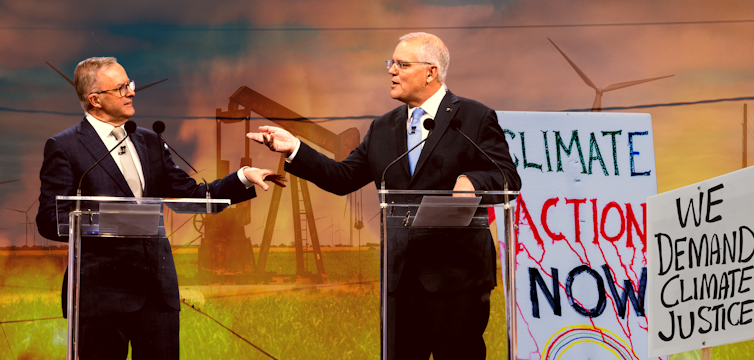
Poll after poll suggests climate change is one of the most pressing issues for Australian voters. Of the 10,000 people who responded to The Conversation’s #SetTheAgenda poll, more than 60% picked climate change as the issue most impacting their lives.
And yet, climate change has barely been discussed by either major party in this election campaign so far.
Since the last federal election, we’ve watched record-smashing floods, bushfires and heatwaves take lives and destroy livelihoods, corroding our national spirit. Disasters such as these will worsen with every fraction of a degree of global warming. Which town will be hit next? Who will be trapped by rising floodwater, or encroaching flames?
Strong national policies on climate change will help us be better prepared, bring global emissions down, and provide strong leadership in this time of crisis. So how did the major parties’ climate policies stack up? We asked five experts to analyse and grade different aspects of this enormous portfolio.
Here Are Their Detailed Responses:
Coalition
Labor
![]()
Jake Whitehead, E-Mobility Research Fellow, The University of Queensland; Ian Lowe, Emeritus Professor, School of Science, Griffith University; Johanna Nalau, Research Fellow, Climate Adaptation, Griffith University; Matt McDonald, Associate Professor of International Relations, The University of Queensland, and Samantha Hepburn, Professor, Deakin Law School, Deakin University
This article is republished from The Conversation under a Creative Commons license. Read the original article.
Australia could rapidly shift to clean transport – if we had a strategy. So we put this plan together

Australia has no clear strategy to decarbonise transport. That’s a problem, because without a plan, our take-up of clean technologies like electric cars, trucks and buses is slow. It’s stopping us from meeting our climate commitments. And it leaves us paying exorbitant prices for imported oil at the fuel pump, as well as in the cost of groceries and services.
The good news? Over the last year, 18 transport and energy experts have created this independent, science-based summary of what is now possible in cleaning up land, sea and air transport as well as what will become possible in coming decades.
Our plan gives all levels of Australian government a list of priority policies. Together, these policies would make possible the delivery of a net zero transport system by or before 2050, and see Australia gain major economic, social and environmental benefits from the transition.
The pandemic has shown us how governments and experts can work together to take on wicked challenges. We can do the same here. We can draw on the knowledge of transport and energy experts, engineers, planners, and economists to develop the science-based net zero transport strategy Australia urgently needs.
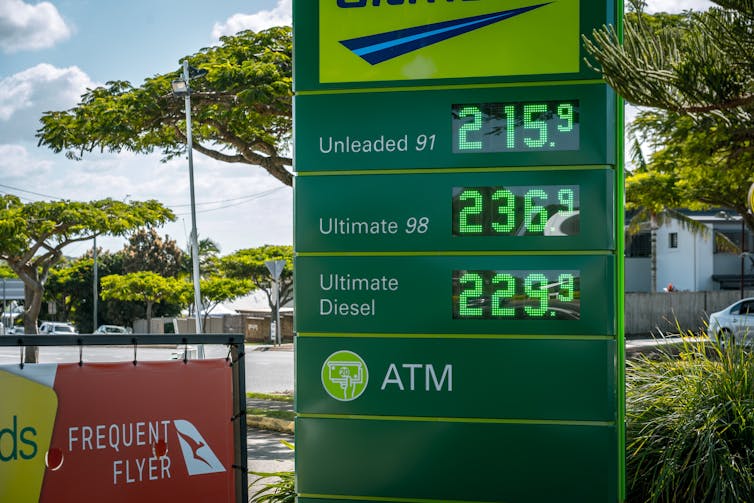
Why We Must Rapidly Reduce Transport Emissions
Today most of our transport relies on fossil fuels. That makes it one of Australia’s most emission intensive sectors. Worse, transport emissions are forecast keep increasing until at least 2030, during the most critical decade in the fight to slow climate change.
By 2030, transport emissions could grow to a quarter of the country’s domestic emissions. Australia has a high-polluting, inefficient vehicle fleet 90% reliant on imported fuel. These two factors mean many Australians have been hit hard by unprecedented fuel prices.
Shifting to clean transport is a win-win-win – we can slash emissions, cut costs to commuters and boost Australia’s fuel security in a very uncertain geopolitical time.
How Can Australia Reduce Transport Emissions?
To begin this shift, we must have a clear vision for rapid decarbonisation of transport. Our framework has three steps:
avoid: where possible, avoid transport trips and shorten travel distances such as through working from home
shift: for the majority of trips that are unavoidable, shift as many as possible to more efficient transport modes such as e-bikes, public transport and walking
improve: boost Australia’s transport energy efficiency by adopting low and zero emission vehicles, such as electric cars, electric buses and electric trucks.
We must invest in transformative technologies to speed the transition, such as electric vehicles for land transport, and electric, hydrogen, ammonia, sustainable biofuel and synthetic fuel options for shipping and aviation.
This approach is in line with the world’s current best practice. The peak global body for clean transport says the electrification of transport is the single most important technology to decarbonise the sector.
The latest Intergovernmental Panel on Climate Change report states electric vehicles offer the largest decarbonisation potential for land transport on a lifecycle basis. The harder challenges will be finding ways to make shipping and planes run without fossil fuels. To do this, we’ll need to invest in finding the solutions.
As if saving the world from the worst of climate change isn’t enough, the economics have shifted enormously. Far from being a long-term cost to Australia, a rapid switch to clean transport could save us nearly half a trillion Australian dollars by 2035. Of this, almost $300 billion is the amount we save the health system by getting killer pollutants out of the air. Australians could also save around $2,000 every year in lower fuel and maintenance costs for electric cars. If all cars in Australia were electric, this would equate to more than $30 billion saved every year.
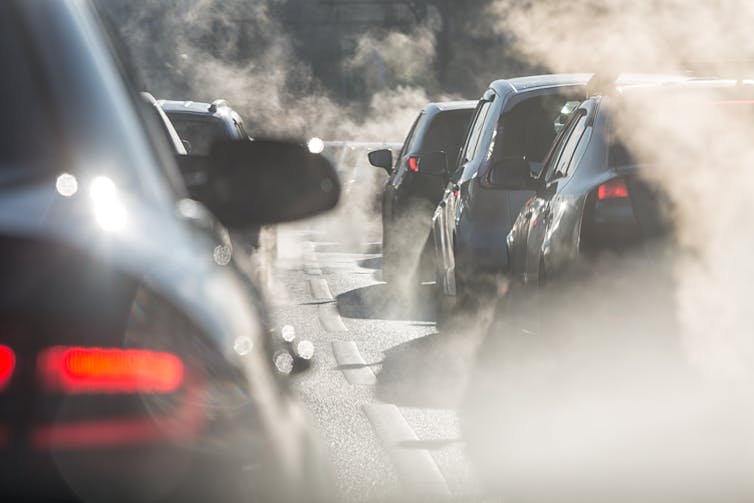
This may not surprise you to hear, but Australia is woefully behind the rest of the world on this transition. For example, we’re one of the few countries without mandatory fuel efficiency standards, which has given us a dirty and inefficient vehicle fleet.
To date, neither the Coalition or Labor’s current policies go far enough to achieve net zero transport emissions. Our next government must commit to ambitious policy to support the rapid decarbonisation of transport.
Where To From Here? The Road Map To Hit Net Zero Transport By 2050
To reach net zero for land transport by 2045 and all transport by 2050, we need evidence-based strategies.
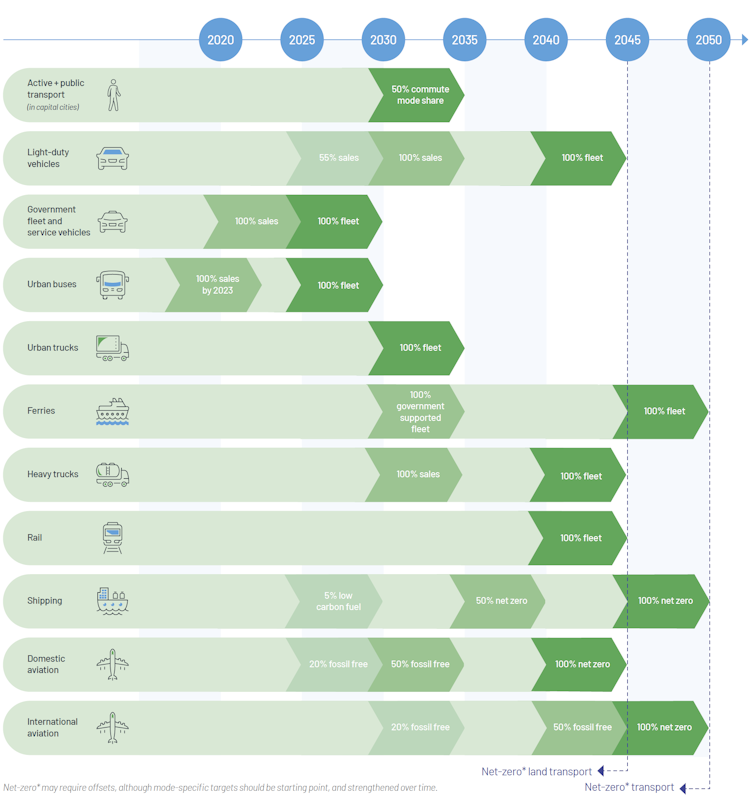
Given we’re almost starting from scratch, we can only make this shift through ambitious transport policies. These would include:
- clear targets for each transport sector to achieve net zero transport by or before 2050
- new financial incentives to help households and businesses switch to zero emission transport
- new sales mandates and fuel efficiency targets to stimulate innovation and increase the supply of zero emission vehicles
- investing in clean transport manufacturing and recycling industries to allow us to build batteries, produce renewable fuels and build electric vehicles locally by 2030
- infrastructure and policies to support active transport, low emission zones and road pricing reform.
To tackle the harder-to-decarbonise sectors of shipping and aviation, we need:
- research, development and investment into low and zero emission options, coupled with mandates for use of zero emission fuels
- renewable hydrogen clusters to support broader economy decarbonisation and the low and zero emission shipping and aviation.
Luckily for us, we have many resources to draw on to create this better system. We have a natural resource base able to support clean transport not only locally but globally. We will be able to access enormous amounts of cheap, renewable energy, which we can harness to power mining and refining of critical resources, turn water into green hydrogen, manufacture batteries, and build our own zero emission vehicles.
Pipe dream? Hardly. Australia already has one of the world’s top EV charger companies, and we already have companies turning out electric buses.
This is all possible. But time is short. We must move to grasp this opportunity to clean our transport sector while securing new jobs, improving our national security, and cleaning the air we all breathe.
A full list of the 18 co-authors of the FACTS report can be found here, and the FACTS report is available for download here.![]()
Jake Whitehead, E-Mobility Research Fellow, The University of Queensland; Bjorn Sturmberg, Research Leader, Battery Storage & Grid Integration Program, Australian National University; Donna Green, Associate Professor, Investigator for UNSW Digital Grid Futures Institute; Affiliated Investigator NHMRC Centre for Air Pollution, Energy and Health Research, Associate Investigator the ARC Centre of Excellence for Climate Extremes, UNSW Sydney; Emma Rachel Whittlesea, Program Manager - Climate Ready Initiative, Griffith University, and Liz Hanna, Honorary Associate Professor, Australian National University
This article is republished from The Conversation under a Creative Commons license. Read the original article.
Australia has rich deposits of critical minerals for green technology. But we are not making the most of them … yet
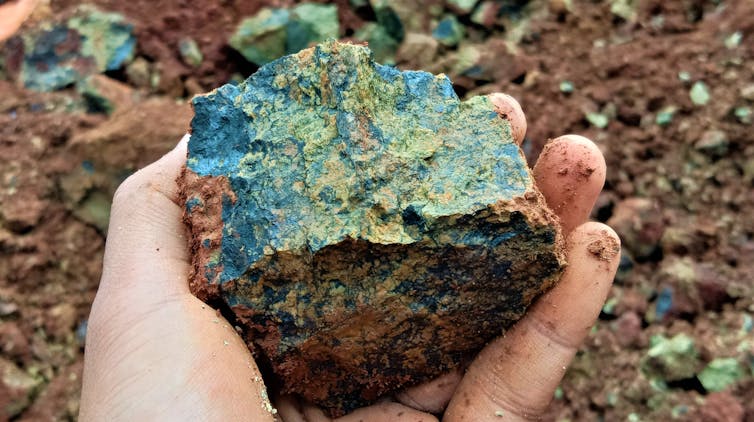
As the transition to clean energy accelerates, we will need huge quantities of critical minerals – the minerals needed to electrify transport, build batteries, manufacture solar panels, wind turbines, consumer electronics and defence technologies.
That’s where Australia can help. We have the world’s largest supply of four critical minerals: nickel, rutile, tantalum and zircon. We’re also in the top five for cobalt, lithium, copper, antimony, niobium and vanadium. Even better, many of these minerals can be produced as a side benefit of mining copper, aluminium-containing bauxite, zinc and iron ores.
But to date, we are not making the most of this opportunity. Many of these vital minerals end up on the pile of discarded tailings. The question is, why are we not mining them? Compared to other major critical mineral suppliers such as China, we are lagging behind.
While the federal government’s new strategy for the sector is a step in the right direction, small-scale miners will need sustained support to help our critical mineral sector grow.
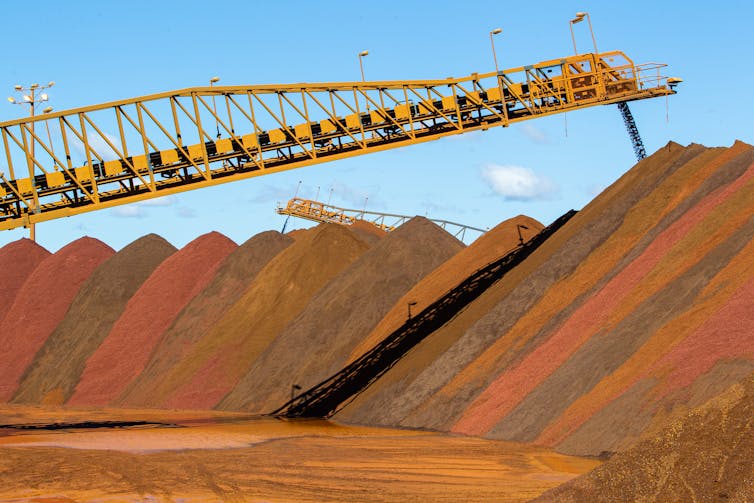
Why Are These Minerals So Important?
Critical minerals are well-named. Lithium, nickel, cobalt and rare earth elements are critical for modern life as well as the industries of the future. But critical also refers to the fact that supply can be hard to secure.
In a time of huge geopolitical uncertainty, securing these minerals has become an ever more critical issue. Soaring demand for these minerals has led to price volatility, commercial risks, geopolitical manoeuvring and disruptions to supply.
As geopolitical tensions grow, many countries are urgently seeking reliable and secure supplies of critical minerals. When China cut off exports of rare earth elements to Japan in 2010 during a dispute, it threatened many of Japan’s high tech companies.
While cobalt, nickel and copper are perhaps the best known, there are dozens of lesser known minerals vital to the modern world.
Different countries and regions require different minerals, with a total of 73 minerals considered critical across 25 separate assessments as of 2020. Some countries are almost entirely dependent on imports of their critical minerals.
Australia Could Be A World Leader In This Area. Why Aren’t We?
Critical minerals represent an enormous opportunity for Australia, given our wealth of these minerals and the soaring demand for green technology minerals like cobalt, lithium and nickel.
To date, however, our production of many critical minerals is well behind other countries when compared to our resources base.
Our large resources of the minerals coupled with high environmental, social and governance standards mean the sector is well placed to respond to demand, especially where we could replace supplies from areas where mining is more destructive or dangerous. Think of the “blood cobalt” often mined by children in the Democratic Republic of the Congo.
In March, the federal government released its plan to grow the sector through boosting onshore processing to create high-wage, high-skill jobs and to offer our trading partners secure supplies of these sought-after minerals. This is a worthwhile goal, particularly the aim to make Australia the “major powerhouse of the world in critical minerals by 2030”.
A plan, however, is one thing and delivery is another. We will need to tackle some key challenges for the mining sector to make us a powerhouse.
Bottlenecks, Tailings And Major Miners
While the demand for critical minerals is growing, there are challenges in production.
Around the world, critical minerals such as cobalt, gallium, molybdenum and germanium are produced as by-products of major commodities such as bauxite, zinc, copper and iron ore.
So why are we discarding most of these critical minerals by dumping them in tailings storage? We can, of course, recover these minerals later, but only if the value exceeds the costs of extraction and processing.
If we were smart about this, we would encourage the extraction of these minerals as a way to add value to existing commodities.
One issue is that while the demand is rising, the overall market size for many of these minerals is small relative to our export giants, iron ore and coal. That’s one reason our major miners have not shown much interest in these minerals.
If the majors aren’t interested, that leaves the door open for small and mid-tier mining and exploration companies such as Cobalt Blue, Iluka, VHM, Australian Vanadium, Australian Strategic Minerals and Critical Minerals Group which have seen the opportunity.
For many smaller miners, however, it can be very difficult to raise capital. That’s where the government’s A$2 billion fund should help, by allowing small and medium miners access to capital to scale up domestic production.
What Else Do We Need To Do?
If we get this right, Australia could play a major role in stabilising the markets for several critical mineral supply chains such as rare earth elements, lithium and cobalt.
For us to create this future-focussed industry, we have to plan ahead. The government should look to policies and programs such as:
● stronger domestic processing and refining sectors for metals like cobalt where our high environmental, social and governance reputation would give us an edge
● introducing incentive schemes to encourage mining companies and smelters to retrofit their facilities so they can produce critical minerals as well as process their main ores
● expand the sector’s proposed $50 million research and development centre and regional hubs to include universities, especially the critical mineral research groups.
Acknowledgements: David Whittle contributed to the research base, and Stuart Walsh, Sue Smethurst and Lilian Khaw reviewed the article.![]()
Mohan Yellishetty, Associate Professor, Resources Engineering, Monash University
This article is republished from The Conversation under a Creative Commons license. Read the original article.
Analysis of 5,500 apartment developments reveals your new home may not be as energy efficient as you think
Michael Ambrose, CSIROApartment living is booming in Australia. Many people choose apartments for their good energy efficiency, which reduces the need for heating and cooling and leads to lower power bills. But not every apartment is as energy efficient as the development advertises.
All proposed new dwellings, including apartments, require an energy rating certificate. Generally, apartments achieve a higher average energy star rating than houses in the same area.
However, the method used to assess and report the energy efficiency of new developments – averaged across the entire development – could lead some purchasers to believe their new apartment is more energy efficient than it is.
My colleagues and I collected energy rating profiles for more than 5,500 apartment developments across Australia to explore what’s really going on. In many cases, we found clusters of apartments far below the energy star rating for the complex as a whole.
Averages Can Be Misleading
Australia’s home energy star ratings are formally known as the Nationwide House Energy Rating Scheme (NatHERS). The scheme measures the “thermal performance” of a new home – or how well it remains at a comfortable temperature without artificial heating or cooling.
Last year in New South Wales, 58% of all energy rating certificates issued were for new apartments, reflecting the popularity of this type of dwelling.
In some areas, demand for apartments is skyrocketing. In the ACT, for example, 33% of certificates issued last year were for apartments, up from 7% four years earlier.
For a residential development to comply with the National Construction Code, the average rating across all apartments must be at least 6 stars. The maximum rating is 10 stars. Across Australia last year, the average rating of new apartments was 6.6 stars, compared to an average of 6.2 stars for houses.
This averaging process means some apartments may be above the average and some below. It may also mean some individual apartments don’t meet the minimum 6 star requirement.
In fact, there may be a significant cluster of apartments that rate below 6 stars – for example, west-facing apartments exposed to the afternoon sun that require a lot of cooling.
Conversely, a small number of apartments may rate well above 6 stars. These may be north-facing apartments that are also well insulated by other apartments above, below and on either side. These apartments will pull up the average star rating of the development.
This is a legitimate approach to energy ratings of apartment blocks. But it does raise an important question: do buyers know the energy rating of their individual apartment – especially those apartments with a below-average rating?

Crunching The Numbers
We collected data from NatHERS certificates for more than 5,500 apartment developments across Australia comprising both the certificates for individual apartments and the rating of developments as a whole.
Generally, ratings for individual apartments were close to the average of the entire complex. But in about 19% of apartment developments, at least 10% of apartments rated 5 stars or lower.
The chart below shows the star rating distribution for a development in Melbourne with about 150 apartments. The average star rating for the development was 6.2 stars. However, 47% of apartments rated below 6 stars while 23% rated above 7 stars.
We also examined a large development in Sydney with more than 400 apartments. The development has an average rating of 7 stars. However, as illustrated below, 16% of apartments rate below 6 stars and 1% (five apartments) are below 5 stars.
Those five apartment owners will likely have much higher energy costs than most of their neighbours. But they may not have realised that at the time of purchase, and the sale price may not have reflected this poorer energy performance.
Know What You’re Buying
Energy ratings are mandatory for all new individual dwellings in Australia. However, providing the result to consumers is not.
Recent research has shown most real estate advertisements do not promote a home’s energy rating, and real agents often don’t know what the rating is.
Energy rating certificates could be included as standard in the information provided to someone looking to buy an apartment.
But in the meantime, if you’re planning on buying a new apartment, ask for a copy of the energy rating certificate. Only then will you know what you’re paying for.![]()
Michael Ambrose, Research Team Leader, CSIRO
This article is republished from The Conversation under a Creative Commons license. Read the original article.
Could we learn to love slugs and snails in our gardens?
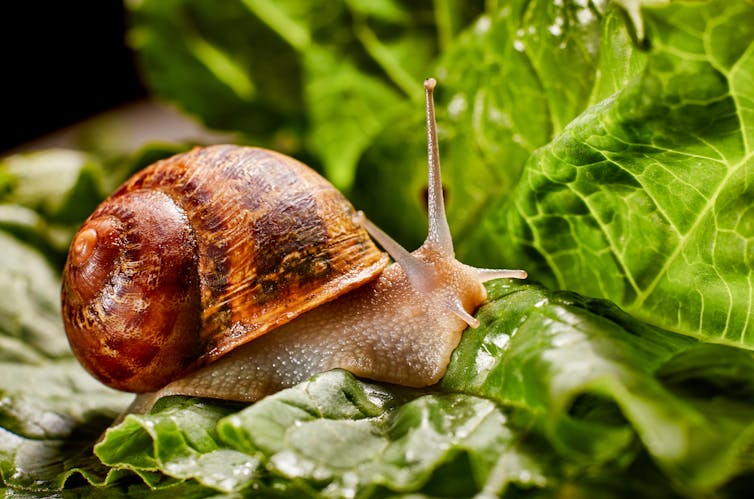
Before you squash or poison the next slug or snail you see in your garden, consider this: The British Royal Horticultural Society no longer classifies these gastropods as pests. Why on earth would a leading gardening organisation do that, you might wonder. After all, slugs and snails are usually seen as a problem, given their eagerness to devour the plants you’ve lovingly nurtured.
The issue is that they are part of nature. Slugs and snails play a key role in healthy ecosystems, acting to break down organic material as well as providing a source of food for blue-tongued lizards, frogs and kookaburras.
So can we learn to live with slugs and snails? Yes, if we reframe how we see these invertebrates. After all, the definition of “pest” is based on our perception and can change over time. By rejecting the “pest” status of many invertebrates and advocating planet friendly gardening, the horticultural society directly connects the local actions of gardeners to our global biodiversity crisis.
Their principal entomologist, Andrew Salisbury, has argued that “now is the time to gracefully accept, even actively encourage, more of this life into our gardens”.
This doesn’t have to mean letting them destroy your lettuces. Nature can help. Enticing lizards, frogs and birds to your garden can help control slugs and snails and boost biodiversity.
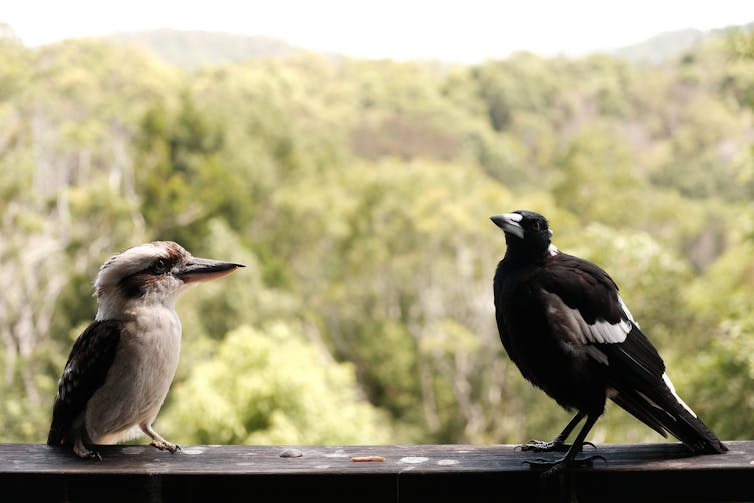
Are These ‘Pests’ Actually Legitimate Garden Inhabitants?
Gardening increased in popularity during the pandemic. With widespread rainy weather across Australia’s east coast, gardeners are more likely to see – and potentially be annoyed by – slugs and snails.
So should Australian gardeners follow the UK’s example? Should we try to welcome all species into the garden? Responses to these questions typically describe slugs and snails as “pests”, invoke the idea of a native/non-native species divide or describe the perceived damage done by invasive species.
Let’s tackle the pest argument first. We define pests based on perception. That means what we think of as a pest can change. The garden snail is a good example. Many gardeners consider them a pest, but they are cherished by snail farmers who breed them for human consumption.
By contrast, many scientists consider the concept of an invasive species to be less subjective. Australia’s environment department defines them as species outside their normal distribution (often representing them as non-native) which “threaten valued environmental, agricultural or other social resources by the damage it causes”. Even this definition, however, is a little rubbery.
In recent decades, researchers in the humanities, social sciences and some natural sciences have shown our ideas of nativeness and invasiveness also undergo change. Is the dingo a native animal, for instance, after being introduced thousands of years ago? Would it still be considered a native if it was introduced to Tasmania where it does not occur?
Despite these questions over their worth, the ideas of “pest” and “invasive species” have proven remarkably persistent in ecological management.
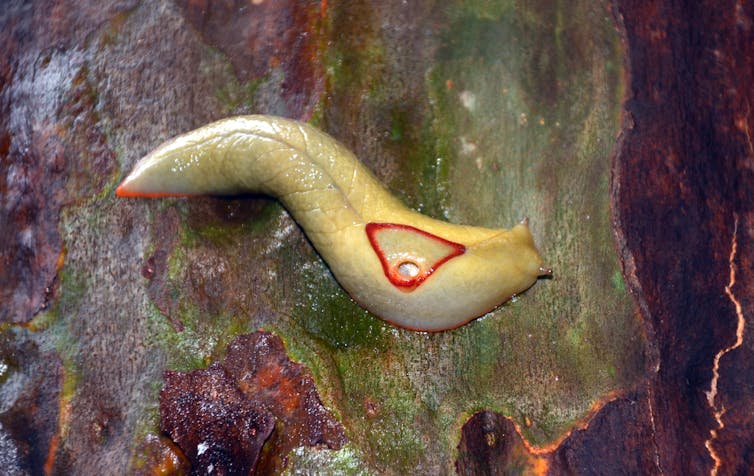
What Exactly Are The Slugs And Snails We Find In Our Gardens?
Australia has a huge diversity of land snails, with many species yet to be described. Many species are in decline, however, due to introduced predators and loss of habitat, and now require conservation efforts.
Does that include our gardens? Well, most snails and slugs found in gardens are considered non-native species which were introduced accidentally. The ability of snails to spread far and wide means these humble gastropods are listed on Australia’s official list of priority pests. We already have biosecurity measures in place to avoid unwanted introduction of new snail species.
The common garden snail, which hails from the Mediterranean, has now spread to every state and territory. But other species are still spreading, such as the Asian tramp snail on the east coast or the green snail, which is currently limited to Western Australia. So if we accept the existence of all kinds of snails and slugs in the garden, we could be undermining efforts to detect and control some of these species.
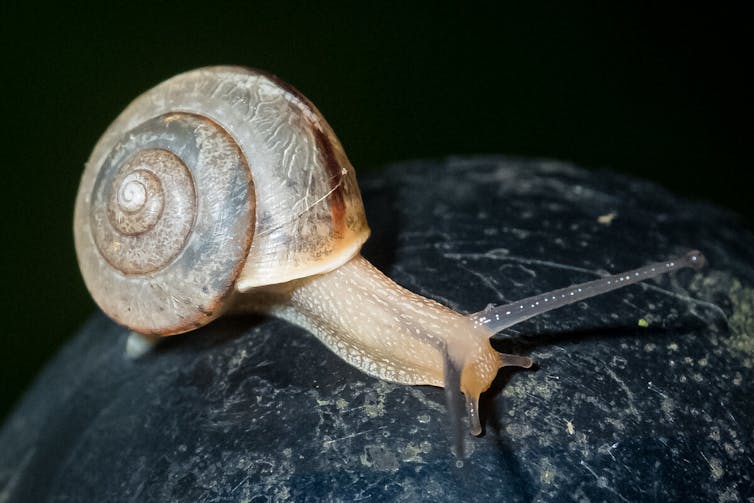
While slugs and snails don’t usually seriously threaten our home gardens, some species are known agricultural pests. The common garden snail can cause major damage to citrus fruit and young trees, while slugs such as the leopard slug or the grey field slug can devastate fields of seedlings. The damage they can do means farmers and their peak bodies would feel uneasy about changing how we think of these land molluscs.
Some snails can also carry dangerous parasites like the rat lungworm or the trematode worm Brachylaima cribbi. These can hurt us, particularly if a snail is accidentally eaten, or if vegetables in the garden are contaminated. If we let snails move around unhindered, we could increase the number of infections. Pets and children are the most at risk.
So Should We Follow The UK’s Example?
It is not straightforward to rethink how we view and respond to creatures typically considered pests in the garden. But it is worthwhile thinking this through, as it requires appreciating how humans and nonhumans are interdependent. And we can gain a better understanding of how our simple actions in our gardens can scale up to affect human and planetary health and well-being.
The world’s ongoing loss of biodiversity and the steadily changing climate must inform how we relate to and care for the nonhuman life – from mycelium in the soil to gastropods – that enliven our gardens.
This does not mean everything must have an equal opportunity to flourish. But it does require us to pay attention. To observe, to wonder and to be curious about our entangled lives. This kind of attention could help us take a more ethical approach to the everyday life and death decisions we make in our patch.
What does that look like? By understanding gardens as interconnected natural and cultural spaces, we can work to limit our resident slug and snail population and promote biodiversity. A perfect way to start is to design a lizard, frog and bird friendly site.![]()
Bethaney Turner, Associate Professor, Centre for Creative and Cultural Research, Faculty of Arts and Design, University of Canberra and Valerie Caron, Research Scientist, CSIRO
This article is republished from The Conversation under a Creative Commons license. Read the original article.
Smaller Female North Atlantic Right Whales Have Fewer Calves: Declining Body Size May Contribute To Low Birth Rates
- Prey availability
- Climate impacts on the main feeding grounds
- Maternal health
Pittwater Reserves: Histories + Notes + Pictorial Walks
A History Of The Campaign For Preservation Of The Warriewood Escarpment by David Palmer OAM and Angus Gordon OAM
Angophora Reserve - Angophora Reserve Flowers
Annie Wyatt Reserve - A Pictorial
Avalon's Village Green: Avalon Park Becomes Dunbar Park - Some History + Toongari Reserve and Catalpa Reserve
Bairne Walking Track Ku-Ring-Gai Chase NP by Kevin Murray
Bangalley Headland Bangalley Mid Winter
Banksias of Pittwater
Barrenjoey Boathouse In Governor Phillip Park Part Of Our Community For 75 Years: Photos From The Collection Of Russell Walton, Son Of Victor Walton
Barrenjoey Headland: Spring flowers
Barrenjoey Headland after fire
Bayview Baths
Bayview Wetlands
Beeby Park
Bilgola Beach
Botham Beach by Barbara Davies
Bungan Beach Bush Care
Careel Bay Saltmarsh plants
Careel Bay Birds
Careel Bay Clean Up day
Careel Bay Playing Fields History and Current
Careel Creek
Careel Creek - If you rebuild it they will come
Centre trail in Ku-ring-gai Chase National Park
Chiltern Track- Ingleside by Marita Macrae
Clareville Beach
Clareville/Long Beach Reserve + some History
Coastal Stability Series: Cabbage Tree Bay To Barrenjoey To Observation Point by John Illingsworth, Pittwater Pathways, and Dr. Peter Mitchell OAM
Cowan Track by Kevin Murray
Curl Curl To Freshwater Walk: October 2021 by Kevin Murray and Joe Mills
Currawong and Palm Beach Views - Winter 2018
Currawong-Mackerel-The Basin A Stroll In Early November 2021 - photos by Selena Griffith
Currawong State Park Currawong Beach + Currawong Creek
Deep Creek To Warriewood Walk photos by Joe Mills
Drone Gives A New View On Coastal Stability; Bungan: Bungan Headland To Newport Beach + Bilgola: North Newport Beach To Avalon + Bangalley: Avalon Headland To Palm Beach
Duck Holes: McCarrs Creek by Joe Mills
Dunbar Park - Some History + Toongari Reserve and Catalpa Reserve
Dundundra Falls Reserve: August 2020 photos by Selena Griffith - Listed in 1935
Elsie Track, Scotland Island
Elvina Track in Late Winter 2019 by Penny Gleen
Elvina Bay Walking Track: Spring 2020 photos by Joe Mills
Elvina Bay-Lovett Bay Loop Spring 2020 by Kevin Murray and Joe Mills
Fern Creek - Ingleside Escarpment To Warriewood Walk + Some History photos by Joe Mills
Iluka Park, Woorak Park, Pittwater Park, Sand Point Reserve, Snapperman Beach Reserve - Palm Beach: Some History
Ingleside
Ingleside Wildflowers August 2013
Irrawong - Ingleside Escarpment Trail Walk Spring 2020 photos by Joe Mills
Irrawong - Mullet Creek Restoration
Katandra Bushland Sanctuary - Ingleside
Lucinda Park, Palm Beach: Some History + 2022 Pictures
McCarrs Creek
McCarr's Creek to Church Point to Bayview Waterfront Path
McKay Reserve
Mona Vale Beach - A Stroll Along, Spring 2021 by Kevin Murray
Mona Vale Headland, Basin and Beach Restoration
Mount Murray Anderson Walking Track by Kevin Murray and Joe Mills
Mullet Creek
Narrabeen Creek
Narrabeen Lagoon Catchment: Past Notes Present Photos by Margaret Woods
Narrabeen Lagoon State Park
Narrabeen Lagoon State Park Expansion
Narrabeen Rockshelf Aquatic Reserve
Nerang Track, Terrey Hills by Bea Pierce
Newport Bushlink - the Crown of the Hill Linked Reserves
Newport Community Garden - Woolcott Reserve
Newport to Bilgola Bushlink 'From The Crown To The Sea' Paths: Founded In 1956 - A Tip and Quarry Becomes Green Space For People and Wildlife
Pittwater spring: waterbirds return to Wetlands
Pittwater's Lone Rangers - 120 Years of Ku-Ring-Gai Chase and the Men of Flowers Inspired by Eccleston Du Faur
Pittwater's Parallel Estuary - The Cowan 'Creek
Resolute Track at West Head by Kevin Murray
Resolute Track Stroll by Joe Mills
Riddle Reserve, Bayview
Salvation Loop Trail, Ku-Ring-Gai Chase National Park- Spring 2020 - by Selena Griffith
Stapleton Reserve
Stapleton Park Reserve In Spring 2020: An Urban Ark Of Plants Found Nowhere Else
The Chiltern Track
The Resolute Beach Loop Track At West Head In Ku-Ring-Gai Chase National Park by Kevin Murray
Towlers Bay Walking Track by Joe Mills
Trafalgar Square, Newport: A 'Commons' Park Dedicated By Private Landholders - The Green Heart Of This Community
Tranquil Turimetta Beach, April 2022 by Joe Mills
Turimetta Beach Reserve by Joe Mills, Bea Pierce and Lesley
Turimetta Beach Reserve: Old & New Images (by Kevin Murray) + Some History
Turimetta Headland
Warriewood Wetlands and Irrawong Reserve
Whale Beach Ocean Reserve: 'The Strand' - Some History On Another Great Protected Pittwater Reserve
Wilshire Park Palm Beach: Some History + Photos From May 2022
Winji Jimmi - Water Maze

New Shorebirds WingThing For Youngsters Available To Download
A Shorebirds WingThing educational brochure for kids (A5) helps children learn about shorebirds, their life and journey. The 2021 revised brochure version was published in February 2021 and is available now. You can download a file copy here.
If you would like a free print copy of this brochure, please send a self-addressed envelope with A$1.10 postage (or larger if you would like it unfolded) affixed to: BirdLife Australia, Shorebird WingThing Request, 2-05Shorebird WingThing/60 Leicester St, Carlton VIC 3053.

 Shorebird Identification Booklet
Shorebird Identification Booklet
The Migratory Shorebird Program has just released the third edition of its hugely popular Shorebird Identification Booklet. The team has thoroughly revised and updated this pocket-sized companion for all shorebird counters and interested birders, with lots of useful information on our most common shorebirds, key identification features, sighting distribution maps and short articles on some of BirdLife’s shorebird activities.
The booklet can be downloaded here in PDF file format: http://www.birdlife.org.au/documents/Shorebird_ID_Booklet_V3.pdf
Paper copies can be ordered as well, see http://www.birdlife.org.au/projects/shorebirds-2020/counter-resources for details.
Download BirdLife Australia's children’s education kit to help them learn more about our wading birdlife
Shorebirds are a group of wading birds that can be found feeding on swamps, tidal mudflats, estuaries, beaches and open country. For many people, shorebirds are just those brown birds feeding a long way out on the mud but they are actually a remarkably diverse collection of birds including stilts, sandpipers, snipe, curlews, godwits, plovers and oystercatchers. Each species is superbly adapted to suit its preferred habitat. The Red-necked Stint is as small as a sparrow, with relatively short legs and bill that it pecks food from the surface of the mud with, whereas the Eastern Curlew is over two feet long with a exceptionally long legs and a massively curved beak that it thrusts deep down into the mud to pull out crabs, worms and other creatures hidden below the surface.
Some shorebirds are fairly drab in plumage, especially when they are visiting Australia in their non-breeding season, but when they migrate to their Arctic nesting grounds, they develop a vibrant flush of bright colours to attract a mate. We have 37 types of shorebirds that annually migrate to Australia on some of the most lengthy and arduous journeys in the animal kingdom, but there are also 18 shorebirds that call Australia home all year round.
What all our shorebirds have in common—be they large or small, seasoned traveller or homebody, brightly coloured or in muted tones—is that each species needs adequate safe areas where they can successfully feed and breed.
The National Shorebird Monitoring Program is managed and supported by BirdLife Australia.
This project is supported by Glenelg Hopkins Catchment Management Authority and Hunter Local Land Services through funding from the Australian Government’s National Landcare Program. Funding from Helen Macpherson Smith Trust and Port Phillip Bay Fund is acknowledged.
The National Shorebird Monitoring Program is made possible with the help of over 1,600 volunteers working in coastal and inland habitats all over Australia.
The National Shorebird Monitoring program (started as the Shorebirds 2020 project initiated to re-invigorate monitoring around Australia) is raising awareness of how incredible shorebirds are, and actively engaging the community to participate in gathering information needed to conserve shorebirds.
In the short term, the destruction of tidal ecosystems will need to be stopped, and our program is designed to strengthen the case for protecting these important habitats.
In the long term, there will be a need to mitigate against the likely effects of climate change on a species that travels across the entire range of latitudes where impacts are likely.
The identification and protection of critical areas for shorebirds will need to continue in order to guard against the potential threats associated with habitats in close proximity to nearly half the human population.
Here in Australia, the place where these birds grow up and spend most of their lives, continued monitoring is necessary to inform the best management practice to maintain shorebird populations.
BirdLife Australia believe that we can help secure a brighter future for these remarkable birds by educating stakeholders, gathering information on how and why shorebird populations are changing, and working to grow the community of people who care about shorebirds.
To find out more visit: http://www.birdlife.org.au/projects/shorebirds-2020/shorebirds-2020-program
Aussie Bread Tags Collection Points

Sporting Identities Team Up With Police And Youth To Lead The Way: Coming To PCYC At Dee Why May 30th
Sporting personalities and ambassadors from the National Rugby League, NSW Rugby League and Netball NSW will join forces with police to steer young people into programs that develop confidence, life skills and positive influences.
The Sporting Partnership Industry program was launched on Tuesday May 10th at Accor Stadium. The program involves state sporting clubs partnering with PCYC clubs across the state to engage young people who are at risk of anti-social behaviour or criminal offending.
Specifically, ambassadors and pathway players from the Canberra Raiders, Manly Sea Eagles, Penrith Panthers, Parramatta Eels, Sydney Swans, A-Leagues – Macarthur Bulls and Sydney FC, GWS Giants, Netball NSW and Cricket NSW will attend existing ‘Fit for Life’ programs that are delivered across the state year-round.
Deputy Premier and Minister for Police Paul Toole said the initiative would form part of a number of strategies to tackle the causes of youth crime.
“We know how important sport can be to engage with at-risk young people, instil a sense of responsibility and accountability and guide them towards making good decisions,” Mr Toole said.
“Getting to spar with Sonny Bill, or shoot some hoops with the state’s top netballers, can be a life changing opportunity for our young people and no matter what else is going on in their lives, they can’t help but walk away feeling inspired.”
Thousands of young people regularly attend Fit for Life sessions across NSW with numbers expected to grow through the rollout of the program.
Commissioner of Police Karen Webb said the partnership is an intervention strategy that allows police the opportunity to engage with youth in a neutral, relaxed and friendly environment.
“Diversion and early intervention have proven to be extremely effective in keeping young people out of the justice system,” Commissioner Webb said.
“Once a young person is identified as being at risk – either through committing a criminal offence or being disengaged from school – police can refer them into a PCYC program. It gives that young person an opportunity to be involved in something more meaningful and constructive, as well as be surrounded by positive influences from outside of their direct networks.”
PCYC Chief Executive Officer Dominic Teakle said the new partnership with sporting codes would strengthen Fit for Life programs and help put a stop to young people from making poor choices.
“Through physical fitness, nutrition and social engagement, Fit For Life aims to improve overall wellbeing as well as prevent and divert youth from offending behaviours,” Mr Teakle said.
“Having a role model to look up to is one of the most important things that can shape a young person’s future. These sporting ambassadors will help to illustrate that hard work and commitment to a positive cause is worthwhile.”
The Sporting Partnership Industry program will commence on 30 May 2022 at four locations across the state including Queanbeyan PCYC, Northern Beaches PCYC, Penrith PCYC and Auburn PCYC.
The program is intended to be broadened to include other sporting codes and has gained commitment from the AFL, Cricket NSW, A-Leagues (Soccer Australia) at metropolitan, regional and remote PCYC locations in NSW.
Dorothea Mackellar Poetry Awards 2022: Entries Close June 30th
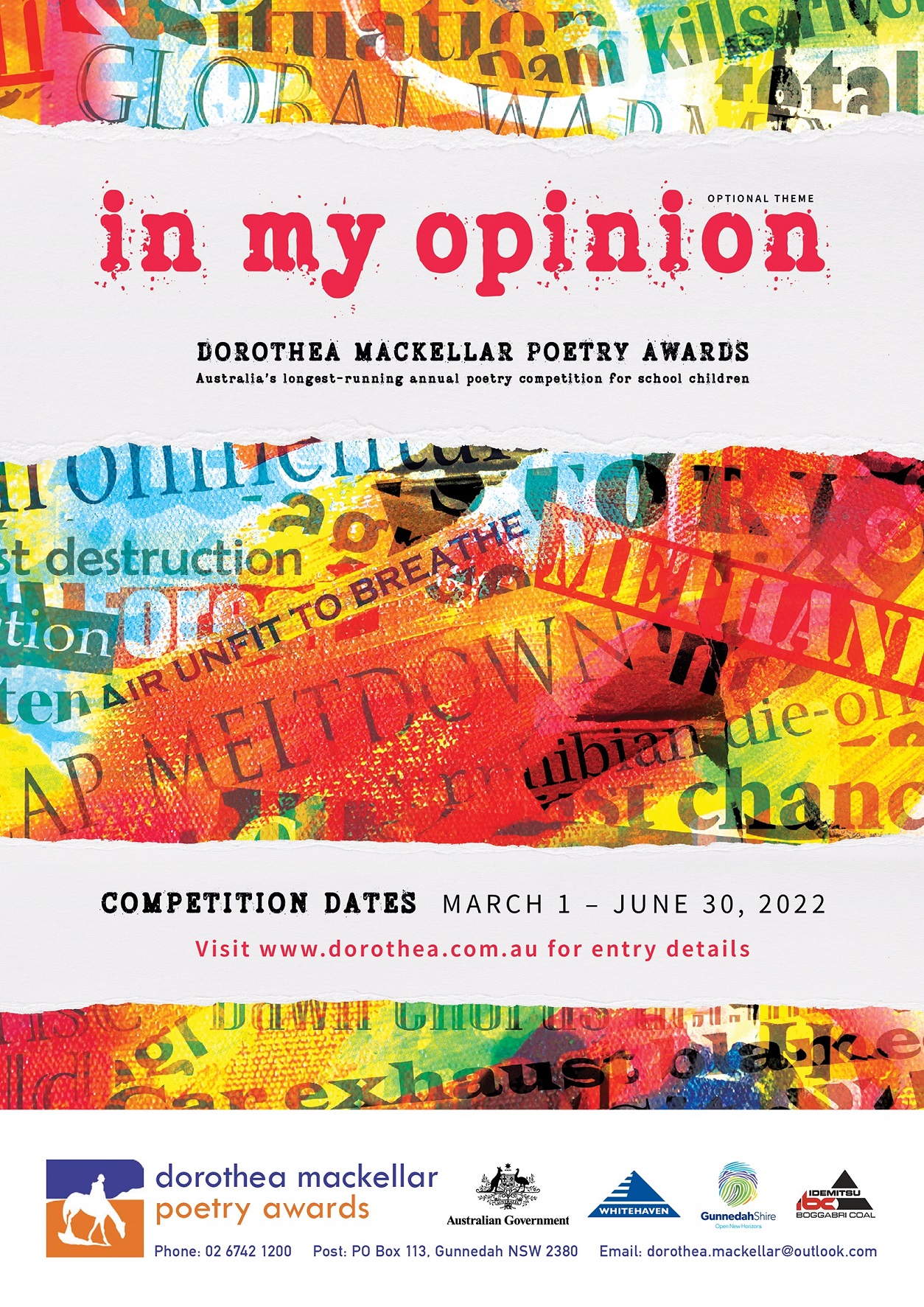
There's also a special History page running this Issue for you - the Australian poet Dorothea Mackellar, after whom the Electorate of Mackellar is named, had a house here in Pittwater at Lovett Bay.
“Our poets are encouraged to take inspiration from wherever they may find it, however if they are looking for some direction, competition participants are invited to use this year’s optional theme to inspire their entries.”
In 2022, the Dorothea Mackellar Memorial Society has chosen the theme “In My Opinion.”
As always, it is an optional theme. The Society encourages students to write about topics and experiences that spark their poetic genius (in whatever form they choose.)
HOW TO ENTER
PLEASE SEE HERE FOR A DETAILED PDF ON ENTRY INSTRUCTIONS FOR TEACHERS AND PARENTS.
ONLINE SUBMISSION
Primary school and secondary school entries can be submitted anytime during the competition period. Visit: https://dorothea.com.au/how-to-enter/
Local Women Named In Australian Gridiron Squad

Young Writers’ Competition 2022
Young people across the Northern Beaches are encouraged to enter this year’s Young Writers’ Competition for their chance to be published.
Now in its 13th year, the annual competition is open to students from kindergarten to grade 12 who live or go to school on the Northern Beaches. The theme of this year’s competition is ‘rise’.
“The Northern Beaches is home to some very talented young writers, and I continue to be blown away by the creativity and skill of entrants in our annual Young Writers’ Competition,” Mayor Michael Regan said.
“It’s time for young writers to once again rise and shine and show us what they’ve got. More than 500 stories were submitted in last year’s competition, and we suspect this year will be just as competitive.”
Entrants can write on any topic or theme but must include a derivation of the word ‘rise’. Entries will be grouped by age and judged according to characterisation, originality, plot, and language.
Four finalists will be chosen in each age category and invited to a presentation night on Wednesday 10 August, where a winner, runner-up, and two highly commended prizes are awarded.
Finalists from each category will have their stories published in an eBook which is added to the Northern Beaches Council Library collection.
Entries close Tuesday 31 May 2022. Entrants must be members of the Northern Beaches Council Library Service.
Complete the online entry form and attach your story as a Word document. If your story is hand-written, then a clear, readable photo or scanned PDF can be submitted.
Not a member of the library? Don't worry, Council will use this form to create a membership for you. Just mark 'no' under the library member field in the online form. If you are a member and unsure of your library card number, just mark 'yes' in the library member field in the online form and Council will find your library membership number.
Entries are judged according to characterisation, originality, plot and use of language and arranged into six different age group categories.
Four finalists are chosen in each age category and invited to a presentation night where a winner, runner-up and two highly commended prizes are awarded. Finalists from each category will have their stories published in an eBook that will be added to Council's collection.
For more information visit Council's library.
A Better Diet Helps Beat Depression In Young Men
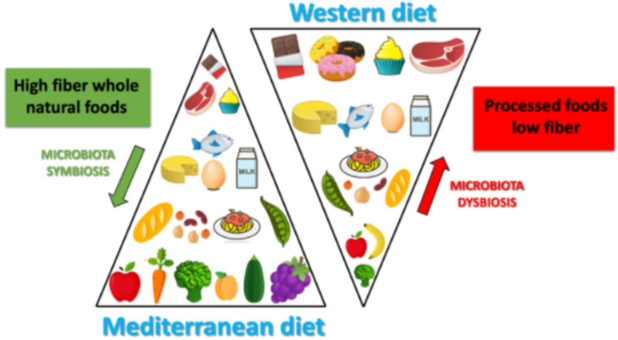 Depression is a common mental health condition that affects approximately 1 million Australians each year. It is a significant risk factor for suicide, the leading cause of death in young adults.
Depression is a common mental health condition that affects approximately 1 million Australians each year. It is a significant risk factor for suicide, the leading cause of death in young adults.Fashion Faux Pas: Fashion Trends Are Costing The Environment
 From balaclavas to cowgirl hats - and even the return of low-rise jeans - whatever the latest trends, they’re sure to fly from catwalks to consumers the moment that models leave the stage at the Australian Fashion Week this week. But before fashionistas spend up big, University of South Australia researchers are encouraging buyers to reconsider flighty purchases and take a moment to better understand trending of ‘fast’ fashion and its impact on the environment.
From balaclavas to cowgirl hats - and even the return of low-rise jeans - whatever the latest trends, they’re sure to fly from catwalks to consumers the moment that models leave the stage at the Australian Fashion Week this week. But before fashionistas spend up big, University of South Australia researchers are encouraging buyers to reconsider flighty purchases and take a moment to better understand trending of ‘fast’ fashion and its impact on the environment.- Step off the ‘trend-mill’; spend some time considering your personal style so you aren’t tempted by every influencer micro-trend.
- Shop your wardrobe! The most sustainable garment is the one you already have - wear it.
- Remember: loved clothes last. No matter where you shop from, treat your clothes with kindness so they last as long as possible.
Word Of The Week: Codswallop
Completely Unrelated To The Word 'Codswallop' Songs This Week: Let's Dance!
Plan For Living
From gum trees to cities to sweeping deserts: how 125 years of the Wynne Prize traces Australia’s shifting relationship to our landscape
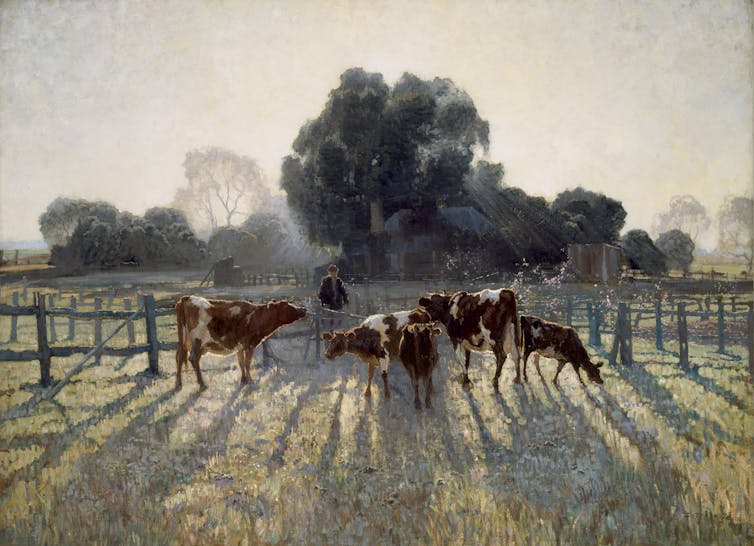
It is fair to say that Richard Wynne, who died in 1895, would not recognise many recent entries in the art prize that he endowed with £1,000 to reward a “landscape painting of Australian scenery”.
Since 1999, when Gloria Tamerre Petyarre was awarded the Wynne Prize for her magical sequence of Leaves, the Wynne has been dominated by works by Indigenous artists living in communities in central and northern Australia.
Rather than inhibiting artists from different traditions, the presence of such superb art appears to have inspired non-Indigenous artists to also be their best. It is therefore well worth a visit to see the full range of entries in the Art Gallery of NSW’s annual festival of prizes.
Not all appreciate this liberation of landscape. In 2017, the veteran Australian artist John Olsen attacked the awarding of the Wynne Prize to Betty Kuntiwa Pumani for Antara, a painting of her mother’s Country.
He claimed the “real” Australian landscape tradition was represented by artists such as Elioth Gruner and Brett Whiteley, while Pumani’s painting was of “a cloud cuckoo land”.
From memory this may have been the year that the gallery changed the design of the exhibition spaces so that the most exciting Wynne entries – almost all by Indigenous artists – filled the large central court.
As a young man in the 1950s, Olsen had demonstrated against the reactionary conservatism of the Trustees of the Art Gallery of NSW; in his old age he objected to their openness to new ideas.
Both Olsen’s pomposity and the dreariness of an Australian landscape tradition that colonises the land was mocked by Abdul Abdullah in his painting A Terrible Burden, a Wynne finalist in 2019.
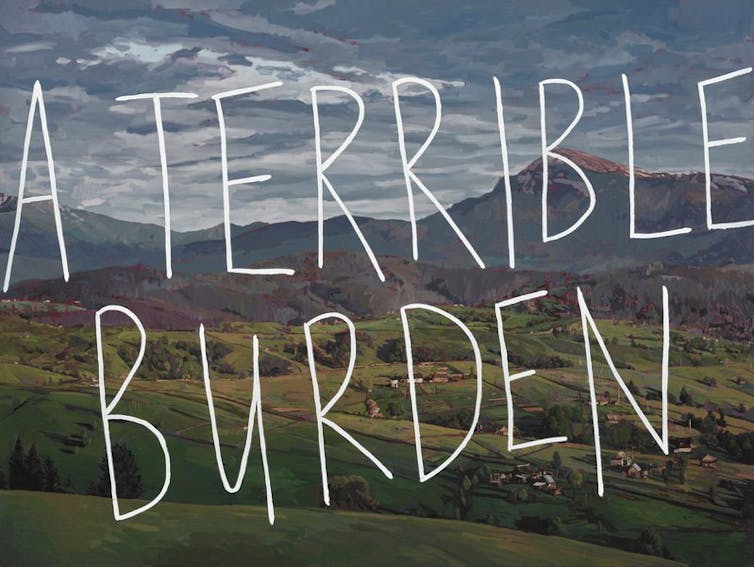
Abdullah has expressed surprise at Olsen’s strident defence of the conservative tradition of Australian landscape as his own paintings are so abstract, although he tells me “his cultural contribution doesn’t hold a flame to Ken Done, who is very good at painting ‘place’.”
Origins Of The Prize
As with its more famous partner competition, the Archibald Prize, the Wynne is not quite what its benefactor envisaged.
Richard Wynne’s will originally designated the Art Society of NSW as the body to administer the prize, not the Art Gallery of NSW. In 1895, shortly after Wynne’s death, the Art Society experienced an acrimonious split when a number of artists led by Tom Roberts and Julian Ashton established a rival body, The Society of Artists.
By the time the prize was first awarded in 1897 the executors, Perpetual Trustees, decided it was more prudent to have it administered by the Art Gallery than a group of squabbling artists.
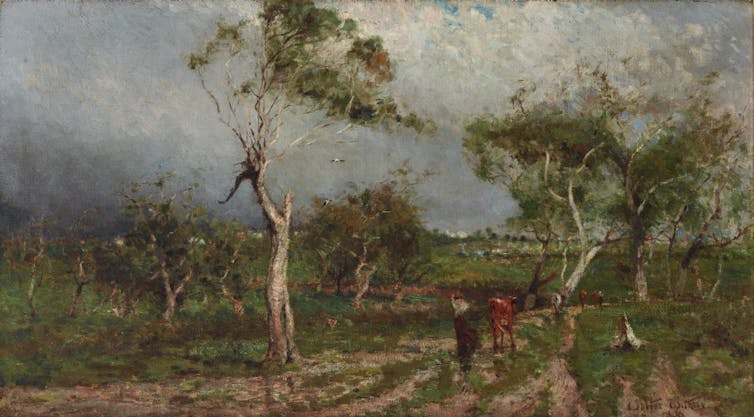
The tensions between artists is perhaps one reason why for many years there was no formal exhibition of entries. Walter Withers was awarded the first prize in 1897 for a painting that had already been bought by the Art Gallery. As he wrote to the Argus:
I was unaware that such a prize existed until I read the telegram in your issue of November 24, announcing the honour that had been done to my work.
A search through both the National Library’s Trove and the Art Gallery of NSW’s digital archive shows that, as with all art prizes judged by a committee, on many occasions considerations other than merit influenced the judges’ decisions.
In 1898 the Trustees began the practice of both visiting Art Society exhibitions and inviting interested artists to deposit their offerings for consideration. This was also the first year the prize was awarded to William Lister Lister, a stalwart of the Art Society (later renamed the Royal Art Society of NSW). He was awarded the prize a total of seven times.
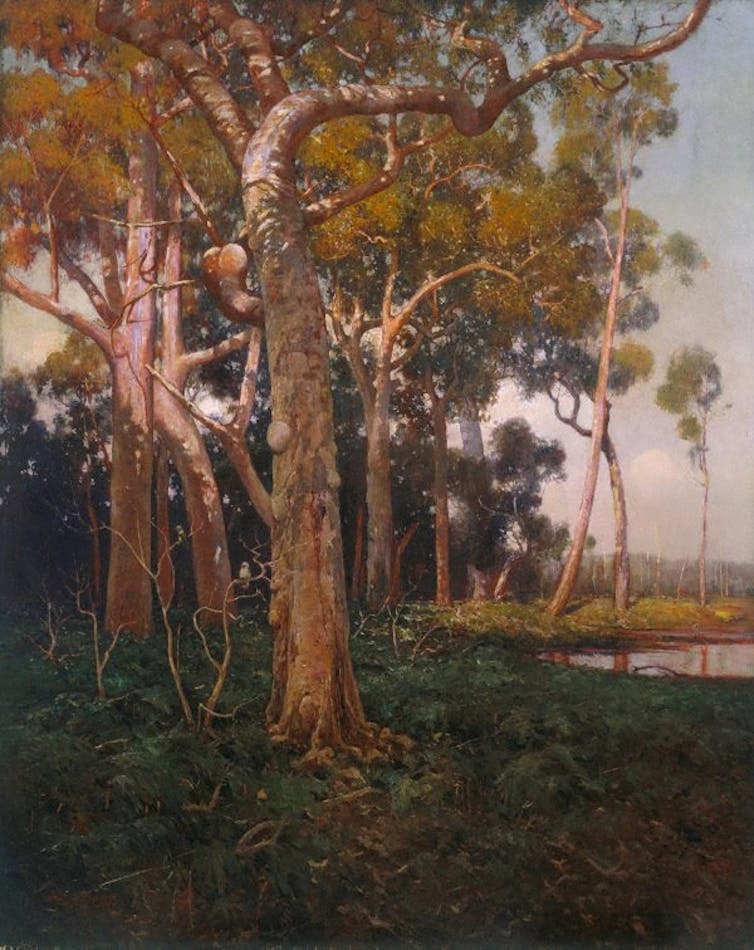
With the exception of the 1898 award, Lister Lister was a trustee and therefore a judge on each of the other six times he won. He was not alone in this.
Sydney Long, a fellow trustee and fellow member of the Royal Art Society, was awarded the Wynne in 1938 and 1940. The only artist to be awarded the Wynne more often than Lister Lister was the South Australian, Hans Heysen, who was awarded the prize eight times. Heysen, from South Australia, exhibited with the Society of Artists.
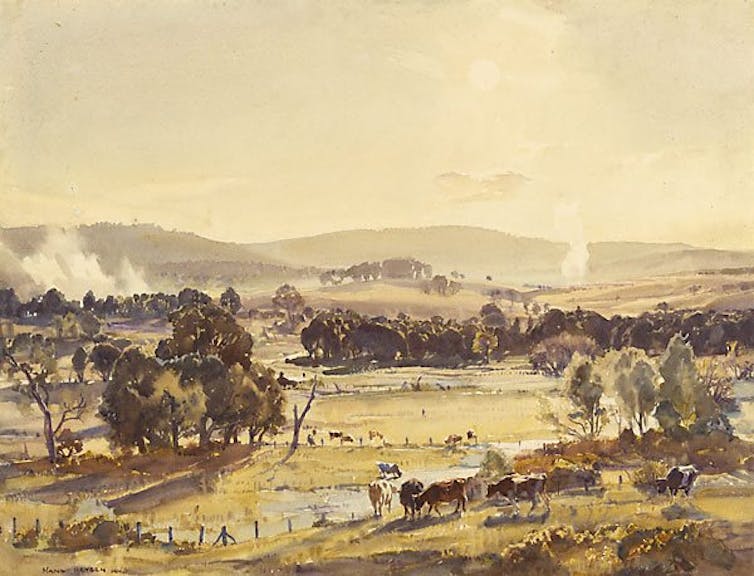
For many years, it is fair to say many of the decisions governing the Art Gallery of NSW were a fine balance between two competing factions, with each taking it in turn to award the various prizes to their members and supporters.
In 1899, the young George Lambert, associated with the Society of Artists, was awarded the Wynne for his heroic painting of horses ploughing through mud, Across the Black Soil Plains. He was also awarded the NSW Government’s newly established Travelling Art Scholarship, a recognition of his precocious talent.
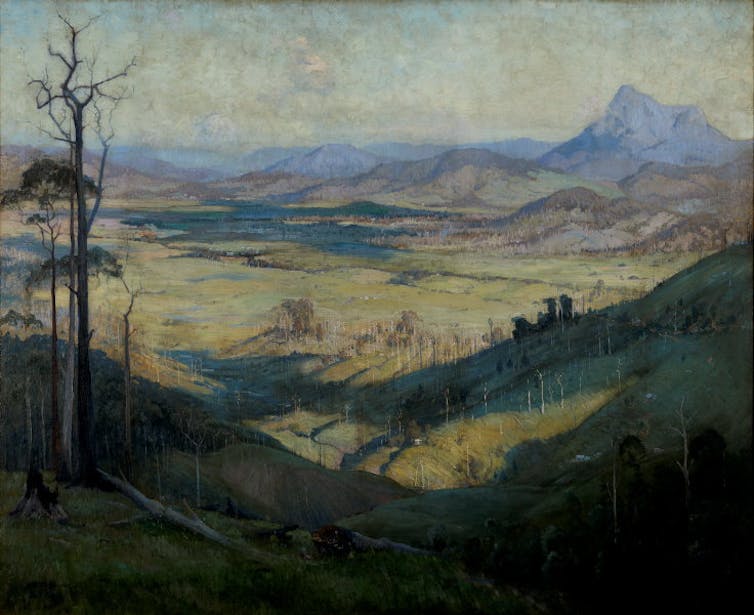
The eccentric nature of the management of the prize led to the situation in 1921 when the Trustees commissioned Elioth Gruner to paint The Valley of the Tweed, with the prize as a part of the commission.
The cosy duopoly of the art societies was challenged in 1943 after William Lister Lister’s sudden death.
Instead of replacing him with another representative of the Royal Art Society, the minister for education, Clive Evatt, appointed his sister-in-law, the collector and painter of modern art, Mary Alice Evatt, to be the first woman trustee in the gallery’s history.
In January 1944, Evatt advocated for William Dobell’s portrait of Joshua Smith to win the Archibald Prize. The following year she voted for the Wynne to go to Sali Herman’s urban landscape, McElhone Stairs, a painting with a complete absence of gum trees, painted by a Jewish immigrant who exhibited with the Contemporary Art Society.
The Wynne continued to reward interesting paintings when Russell Drysdale won with Sofala (1947), and Lloyd Rees for The Harbour from McMahon’s Point(1950).
A Changeable Landscape
By the early 1960s, the old exhibiting societies were less relevant to artists trying to establish a career. But the new dealer galleries understood the value of prizes to their artists’ profiles.
The new superstars of Australian art, John Olsen, Fred Williams and Brett Whiteley, began to be listed as prize winners.
The Wynne was still very much a “boy’s club”, as if the Australian landscape could only be captured by one gender. Lorna Nimmo had won in 1941, but her watercolours did not appeal to the Trustees.
It took until 1971 for Margaret Woodward to be the next woman winner, with her painting, Karri Country.
She was followed in 1994 with Suzanne Archer’s Waratah Wedderburn.
(While the prize is most well known for its landscapes, figurative sculptures can also enter, and Rosemary Madigan had won with her classic stone torso in 1986.)

Ann Thomson was awarded the 1998 prize with her abstract painting, Yellow Sound, which may have encouraged the Trustees to cast their net wider. For the following year the Wynne Prize was awarded to Gloria Tamerre Petyarre.
This bastion of the Australian landscape tradition was never the same again.
Easily the most memorable painting to be awarded the Wynne in recent years was in 2016, when the Ken family collaborative painted Seven Sisters, the grand narrative of protecting country.
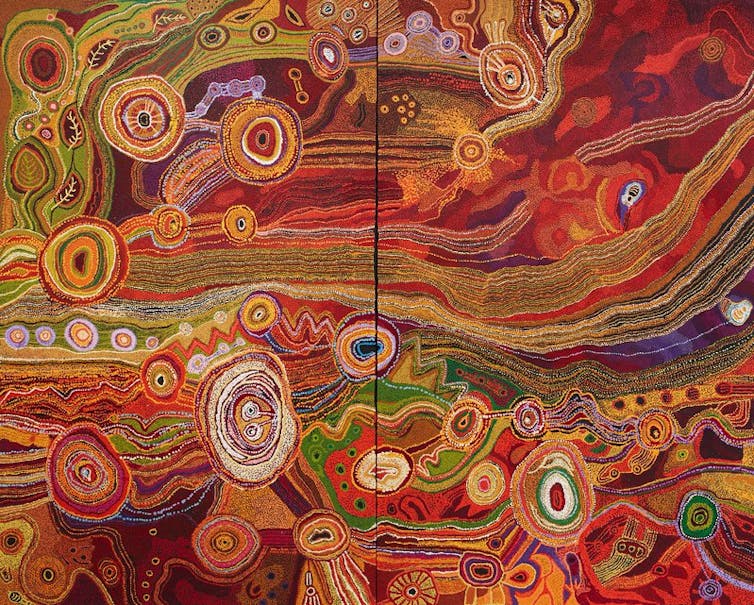
Although some non-Aboriginal artists have won this century, Aboriginal art continues to dominate. The gallery now also hosts the Roberts Family prize, specifically for work by Indigenous artists.
What we are seeing here in this oldest, and potentially crustiest of art prizes, is concrete evidence of a whole new tradition of Australian art – or rather evidence that the oldest tradition is using art as a means to reclaim the land.![]()
Joanna Mendelssohn, Principal Fellow (Hon), Victorian College of the Arts, University of Melbourne. Editor in Chief, Design and Art of Australia Online, The University of Melbourne
This article is republished from The Conversation under a Creative Commons license. Read the original article.
Beyond angry protesters and inked arms, there’s this First Nations story of the Southern Cross – one of unity and belonging
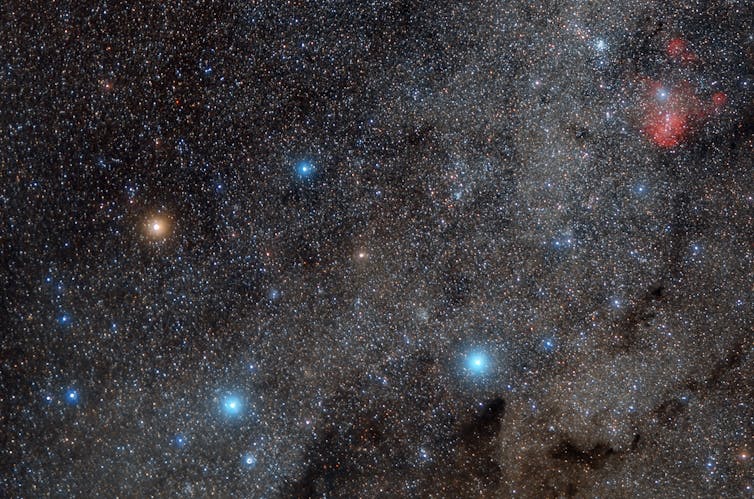
Can the Southern Cross represent Australian identity? Waved by a proud athlete or an angry protester, inked into skin or stuck to a car window, these five stars condense different aspirations, identities and histories into a recognisable symbol.
Yet such symbolism is inherently contested: from the Eureka Stockade to protests over COVID-19 vaccine mandates, or from the coat of arms to the eponymous Sydney train station, Australians have projected differing values and narratives of belonging to this constellation.
Warwick Thornton’s 2017 film We Don’t Need a Map wrestles with racist usage of the Southern Cross, playing on a growing disquiet among many Australians who have come to associate the Southern Cross with bigotry. But Thornton also explores Indigenous narratives about the Southern Cross, suggesting the symbol can never be contained within a single defining narrative.
It is important to appreciate the diversity of identities under the Southern Cross. But we want to go further and ask: what role can the Southern Cross play in shaping an Australian identity, in which diversity coheres in a unique and life-giving way?
Reading The Stars, Finding Our Home
Through his teaching and artistic direction, Warlpiri Elder Wanta Jampijinpa Pawu asks these questions with anyone willing to hunt with him. Jampijinpa explores the meaning of the Southern Cross: a law emblazoned on the night skies since creation and read by countless generations of Aboriginal and Torres Strait Islander peoples.
Wanta has spent decades educating young Warlpiri, especially through his innovative work as artistic director of the biennial Milpirri festival in Lajamanu, in the northern Tanami desert.
Through the Milpirri festival, Wanta and his father Jerry Jangala have drawn from rich wells of cultural identity to expound the concept of ngurru-kurlu, (Warlpiri for “home within”). Wanta understands Ngurru-kurlu to be a way of navigating identity for all who seek to live alongside one another under the Southern Cross.
Ngurra-kurlu is the essence of a people. You might call it their home. But it is more than just the ground we sleep on: we become our own home. The first three letters, ngu, mean “inner” and rra means flowing or being in motion. So ngurra is “inner flow”. By adding kurlu, which means “home,” or “with home,” you get ngurra-kurlu.
The Southern Cross can show us how to discover our ngurra-kurlu. This is more than identity: it’s also about belonging and purpose. The stars of the Southern Cross show us how our own ngurra-kurlu is bound together with the ngurra-kurlu of others.
For Warlpiri, each star of the Southern Cross represents the different skin groups that make up Warlpiri society, mapping respective stories, language, law and country.
These skin groups are:
- Nampijinpa/Jampijinpa and Nangala/Jangala (north group – emu)
- Napaljarri/Japaljarri and Nungarrayi/Jungarrayi (west group – wedge-tailed eagle)
- Napurrula/Jupurrula and Nakamarra/Jakamarra (south group – kangaroo)
- Napanangka/Japanangka and Napangardi/Japangardi (east group – goanna).
The Southern Cross is like a map that shows us how to live alongside different people, country and ecosystems; these weave together to make our homes and sustain our identities. When we see birds, animals, plants, places, we see our families, so it reminds us of these relationships with people, the land and sky.
The little star in the Southern Cross is the wulyu-wulyu (Western chestnut mouse). That this star is off-centre is a reminder to keep learning about this country and its inhabitants, to nourish one another and grow together, so that we also do not drift away.
A Gift For All
The Southern Cross has deeper meanings than non-Indigenous people might realise. It is more than a symbol: for Warlpiri, it is a law that has existed since the beginning, which means we cannot claim the Southern Cross as our own but need to be reclaimed by it. By exploring its diverse meanings, we can discover those connections that sustain life in all its vibrant diversity and unity.
Sitting above us all, the Southern Cross calls us to become wantarri (a gift to one another), to become wungu-warnu (companions who are the same but different), a relationship that is a cross between family and friend. Through generous acts such as the Uluru Statement from the Heart, First Nations people have invited the rest of the nation to discover shared belonging and purpose. This has been done against Australia’s backdrop of painful and violent dispossession and disrespect against First Nations people.
This invitation will continue to be shared because it is always there, written in country. Wanta teaches us there are other stories in the Southern Cross, like Jardiwarnpa, the “real” Australia Day. Jardiwarnpa takes place in the cool season after the great storms of the wet, when the Southern Cross rises from below the horizon. This is a time for reconciliation and atonement, bringing our wrongdoings and discarding them in the open, so that all might see and we might become one body of people again.
Wanta’s teaching leads to the challenging yet hope-filled assertion: in all of our differences, we are called to become Australia. As we digest the knowledge from this continent, we are learning to belong to it. To learn about our respective relationships and responsibilities to one another is to become our home, which is a kind of freedom.
It is no good trying to define Australian identity through two-dimensional symbols: we must allow this country to teach us how to sit, feed and camp together under one sky.![]()
Samuel Curkpatrick, Researcher and adjunct lecturer; Sarah Bacaller, Assistant researcher, and Wanta Jampijinpa Pawu, Artistic director, Milpirri Festival, Lajamanu, Indigenous Knowledge
This article is republished from The Conversation under a Creative Commons license. Read the original article.
Meet the territorial females and matriarchs in Australia’s backyard
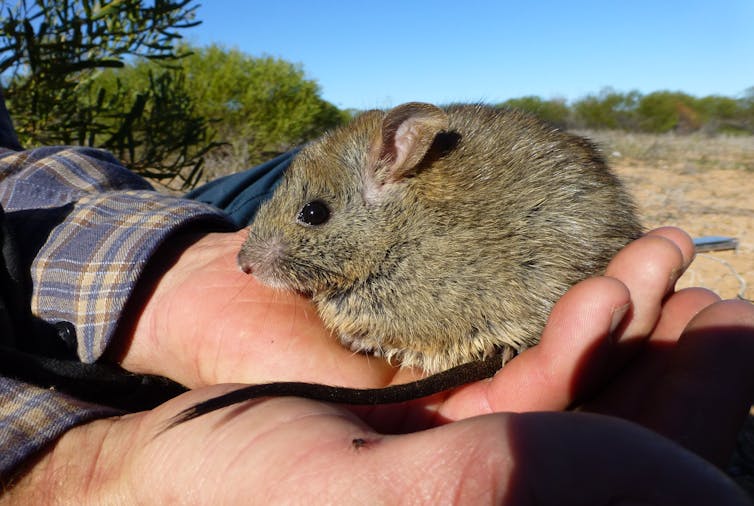
Social structure is an important aspect of species’ biology. Having a pecking order and male or female territoriality can help species thrive.
For instance, this can prevent inbreeding, by ensuring males or females leave their family territory to reproduce. It can also help with passing important knowledge and resources down through family lines.
Many Australian species, such as the kangaroo, have a male-dominated social structure. However, recent research into lesser-known native animals has found it’s actually girls who run these worlds.
The Houseproud Greater Stick-Nest Rat
The greater stick-nest rat (Leporillus conditor) is a native rodent about the size of a guinea pig. It was once widespread across the southern half of mainland Australia. But by the 1930s, grazing, changes in land use and introduced predators reduced its range down to a single island off the coast of South Australia.
Now, thanks to some fantastic conservation efforts, it persists in multiple safe havens across the country.
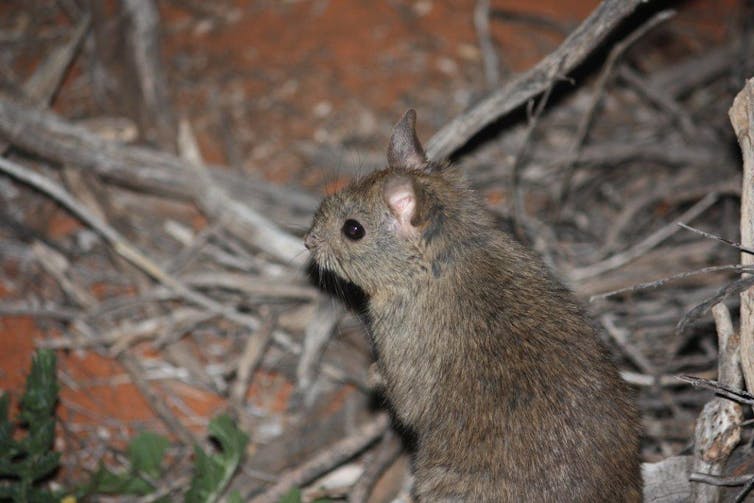
This species builds nests out of sticks and dry grass, bonded together with special sticky urine. The nests can reach huge sizes and are surprisingly complex – with multiple burrows, chambers and even levels that keep the inhabitants safe from predators and extreme heat and cold.
The construction is so advanced that nests can last for thousands of years, when protected from the elements by caves or rock overhangs.
These stick nests are communal and used over many generations. For a long time, however, there was little understanding of how the nests are passed down. A study published last year by myself and my colleagues used trapping data and genetic samples taken over many years to investigate this.
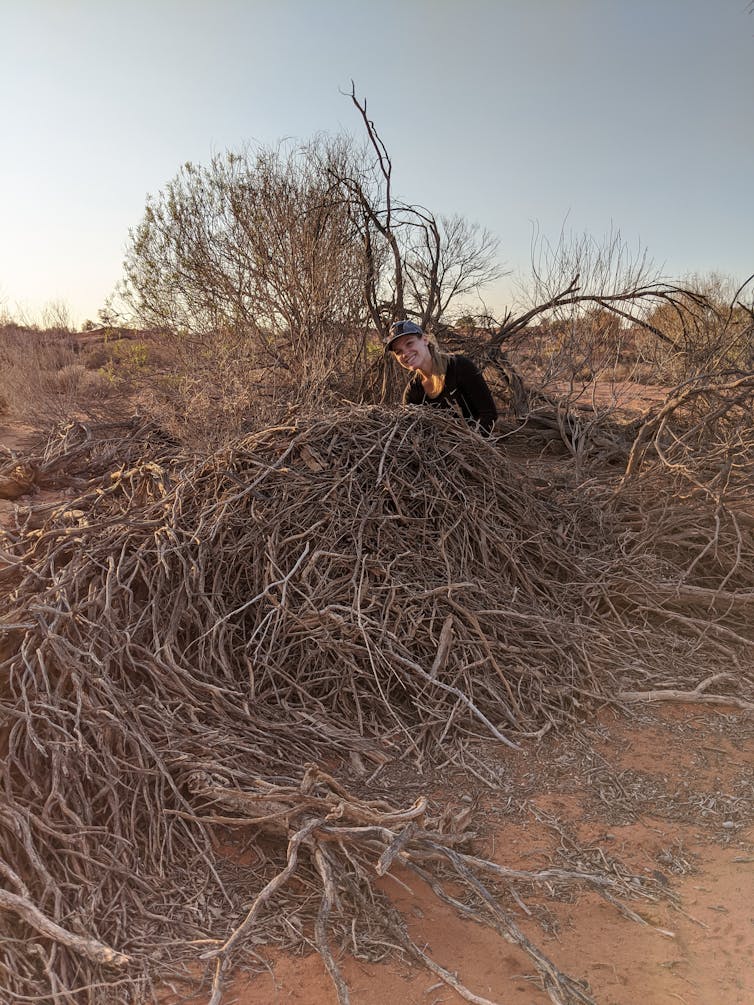
We found females were more closely related to each other over shorter distances, while males were not. Also, females that were caught in consecutive months and years were typically found in the same nest (or one next door), while males were not.
The evidence pointed to one thing: female greater stick-nest rats typically remain in, or near, the nest they were born in – while males leave and disperse across the landscape.
This strategy has two major benefits. First, it helps prevent inbreeding within populations.
Second, since the nests are a huge energy investment for a little rat, passing them down through the female line improves the likelihood of breeding success for future generations, by giving descendants protection from predators and extreme temperatures.
Researchers of greater stick-nest rats have also observed dominant behaviour in females and, occasionally, aggression towards males that come near their nest. Males have even been seen presenting flowers to a resident female, as if attempting courtship!
Female Dominance In Australian Species
The greater stick-nest rat isn’t the only Australian rodent with females that rule the roost.
The broad-toothed rat, a sub-alpine species found in south-eastern Australia, demonstrates female territoriality in the summer months while the males roam across larger home ranges. But when the cold winters set in, and snow covers the landscape, males and females can be found huddling together in shared nests.
Meanwhile, the ash grey mouse, a native rodent from the biodiversity hotspot of southwest Western Australia, forms groups of multiple females that share a burrow and raise their young together.
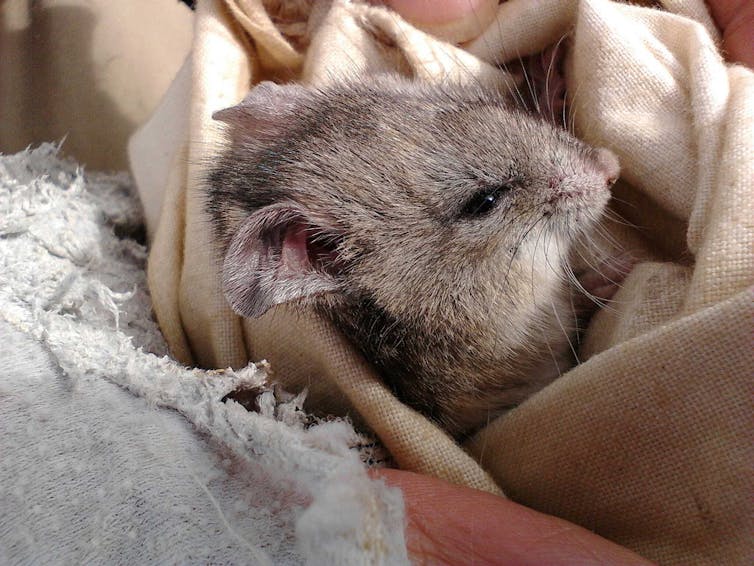
Female social dominance can also be found in marsupials, such as the thumb-sized honey possum, which is also native to southwest Western Australia. Females of this species are larger than males and are sexually promiscuous. They mate with multiple males to produce tiny babies, no bigger than a grain of rice.
The brush-tailed phascogale, another small marsupial species, has females which settle and occupy territories that are sometimes surrendered in part to their daughters when they reach adulthood.
The males, meanwhile, move more freely over large home ranges that overlap with other individuals. A key factor in the marking of brush-tailed phascogale territories is believed to be a kind of scent marking, by way of faeces left in prominent positions around the home range boundaries and nesting sites.
Other native species exhibit similarly variable and complex social structures. But with so many of our fauna threatened, endangered or difficult to find and study in the wild, we have much to learn about how they interact.
The Science Of Sociality
While the complexities of these social hierarchies are fascinating, they’re often hard to determine. Previously, such knowledge could only be gained through long-term studies in the field or in captivity. This is difficult when the species is shy, or tiny like the honey possum.
Thankfully, advances in genetic and animal tracking technology are providing experts deeper insight into the dynamics of these species, with much less cost and effort. With tracking devices becoming more lightweight, powerful and durable, researchers can now remotely monitor the movement and dispersal of species across their home ranges.
In addition, DNA from tissue, skin or hair samples can be sequenced to provide high-quality data to inform on how individuals in an area are related. This can show us how family groupings coexist.
Yet even with these improvements, there is still much we don’t know about the secret lives of Australia’s animals. With the combined pressures of habitat loss, feral predators and climate change, researchers are racing against the clock to better understand our wildlife and hopefully preserve it.
Wildlife reserves such as the Arid Recovery Reserve, where our study on greater stick-nest rats was conducted, combine research with hands-on management to inform conservation efforts – and are taking steps to safeguard our precious native species’ place in the future. ![]()
Isabelle Onley, PhD Candidate, University of Adelaide
This article is republished from The Conversation under a Creative Commons license. Read the original article.
South Australia’s Limestone Coast was formed from the bones of dead fish. Cathedral brings the story of these caves to the stage

Review: Cathedral, directed by Shannon Rush for the State Theatre Company of South Australia
Cathedral could not be more South Australian.
This complex and challenging one-hander is the creation of SA- born playwright Caleb Lewis and brought to life by Nathan O’Keefe, one of our state’s acting greats.
The unique and spectacular underwater formations along our state’s Limestone Coast form the backdrop for the story. The play’s title is taken from a beautiful but challenging dive spot southeast of Mount Gambier, a large underwater cavern known as “The Cathedral.”
Lewis’ language describing the coast and its underwater dimensions is sumptuous and arresting, plumbing the depths of geologic time.
O’Keefe delivers these lush lines masterfully, savouring their poetry.
The coast he tells us, is “haunted by a billion, billion ghosts […] We are living on their bones.”
Land and sea floor are formed by “the slow sleep of calcium carbonate. Patterns appear "like dishes in the sea,” with “towers rising and falling over the centuries.”
But always, it is “water pushing it down.”
And it is here, in this liquid world, where the play draws its life.
Living With Loss
The opening monologue conflates this underwater world with the womb. O’Keefe, as the protagonist Clay, describes “the first sensation” as “floating, then sound,” then of a heartbeat, followed by drifting.
We infer from his revelation of a “brother who never left the water” he has a twin who was never born.
This is our first hint this play will be about water and loss, with how one lives with losses that never go away.

Clay’s life was marked by loss at a young age when his mother died by suicide, leaving him in the care of his grandfather. It was his crusty old “Pops” who taught him to bodysurf and develop the confidence that led him into deep water diving.
These acts of telling are interspersed with scenes from the past acted out as if in real time. In the first of these, Clay is trapped deep inside the cathedral while diving. He calls in a distress signal on a static-filled connection, struggling to survive on a dwindling supply of oxygen.
This realistic depiction of Clay’s struggle is sometimes problematic: there is literally no place to go when acting out states such as disorientation and panic.
More successful temporal shifts are the economically written passages of dialogue between Clay and the colourful offstage characters populating his life.
One such exchange between Clay and his Pops is built around his insistence that he saw his mother’s corpse on a dive. When Clay insists he saw her, Pops tells him he needs to leave the town, and go “anyplace but here.”
Clay subsequently hits the road. On the beaches of Thailand he befriends another salty character, a Scotsman named Jock.
This encounter leads him to a deep sea diving training course in the North Sea. Ever the straight talker, Jock reminds his trainees “down there you’re just a tadpole in the dark.”

The life-threatening challenges of such work are powerfully expressed, as are the more light-hearted moments of camaraderie between divers.
In the decompression chamber following deep dives, voices sound like divers have been sucking on helium. As Clay recalls, it’s like being in a “tin can full of tough guys that all sound like Elmo.”
These laugh out loud moments give the audience welcome fleeting escape from the play’s emotional demands.
Strength In Honesty
The production’s compact, functional set (designed by Kathryn Sproul) effectively evokes the limestone walls of the southeast coast and a jetty. Also serving the production well are Andrew Howard’s sound and compositions and Mark Oakley’s precise, transformational lighting.

Lewis does a superb job of capturing the embodied experience of diving, of hovering over landscapes. He captures the feelings of awe and wonder, but equally the residual fear and terror in back of the mind of all divers – even experienced ones.
Facing fear and death is where the play reaches its dramatic, powerful conclusion. We have all been through the ringer these last few years, with fear and loss intruding into many of our lives. Ultimately the play’s greatest strength is its honesty.
Cathedral plays at the Space Theatre, Adelaide Festival Centre until May 21 before touring regional South Australia.![]()
William Peterson, Adjunct Associate Professor, Auckland University of Technology
This article is republished from The Conversation under a Creative Commons license. Read the original article.
Paddy Compass Namadbara: for the first time, we can name an artist who created bark paintings in Arnhem Land in the 1910s

Aboriginal and Torres Strait Islander readers are advised this article contains images and names of deceased people.
For students of Australian art and art collectors around the globe, Arnhem Land is synonymous with bark painting: sheets of tree bark carefully prepared as a canvas for painting by Aboriginal artists.
Bark painters such as John Mawurndjul and Yirawala are some of the most internationally renowned and sought-after Australian artists.
As the market for bark paintings emerged in the early 20th century, recording the name of individual artists was far from the collector’s mind. Museums and art galleries are full of early artworks, sometimes attributed to particular “clans” or geographic areas, but rarely including the name of the artists.
Such collections are routinely named after the collector rather than the creators. One such collection, the Spencer/Cahill Collection at Museums Victoria, is the focus for our ongoing research project.
The Spencer/Cahill Collection is vast and includes many precious objects collected by Sir Baldwin Spencer when he visited Oenpelli (Gunbalanya), Northern Territory in 1912. He later acquired further artworks and objects via his “on the ground” contact, buffalo shooter Paddy Cahill.

Our project’s main focus is the approximately 170 bark paintings commissioned at Oenpelli between 1912 and 1922.
Earlier bark paintings in museum collections were generally removed from bark huts found by explorers and collectors during their travels. Spencer and Cahill took the additional step of commissioning paintings on bark from the artists: these works represent the birth of the bark painting Aboriginal art movement.
Spencer’s earlier collecting experiences had been conducted to document – as Spencer and others described – a “doomed race” before it became extinct.
In Oenpelli, Spencer was mesmerised by local artists who decorated their stringy bark huts with paintings depicting animals and spirit beings, which resemble paintings found in rock shelters in the vicinity.
He compared the delicate lines in the artworks with “civilised” Japanese or Chinese artworks and concluded the local bark paintings were:
so realistic, always expressing admirably the characteristic features of the animal drawn, that anyone acquainted with the original can identify the drawings at once.
Spencer’s encounter led him to refigure his perception of Aboriginal art towards a more aesthetic appreciation. At Oenpelli, he selected a handful of the most skilful artists to paint a series of bark paintings for him.
He left with 50 artworks. Over the following years, around another 120 barks were sent down to Melbourne.
Spencer did not record the name of the artist for each painting. But, thanks to an unpublished interview from 1967, we can now successfully link bark paintings from this collection to an individual artist.
Paddy Compass Namadbara
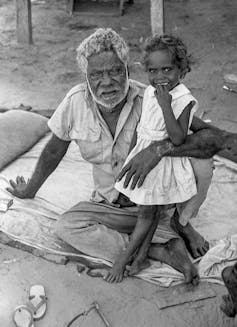
Paddy Compass Namadbara (c. 1892-1978) is remembered by people in western Arnhem Land as a skilful artist, a “clever man”, a strong community leader and family man.
During the 1950s and 1960s he spent much of his time on Minjilang (Croker Island), where he often painted alongside contemporary artists such as Yirawala and Jimmy Midjaumidjau.
In 1967 he was visited by researcher Lance Bennett, who was there to collect bark paintings and information for a book he was writing on contemporary Aboriginal art.
During these interviews, Namadbara casually identified his own works in a book published by Baldwin Spencer in 1914, Native tribes of the Northern Territory of Australia. One work features a barramundi, another a swamp hen, black bream and painted hand stencils.

Bennett asked Namadbara to recreate this painting from 1912, a painting now in The Bennett Collection at the National Museum of Australia in Canberra.

Bennett took the time to ask Namadbara about his personal experiences of Spencer’s visit to Oenpelli in 1912. Namadbara said Spencer asked chosen artists to create bark paintings on small, transport-friendly bark sheets, which they had never done before. This transformed the traditional bark-hut paintings into a new media: bark paintings.
Cahill, who acted as a middleman, is remembered by Namadbara as asking Aboriginal people to shed their western clothing so Spencer could film and photograph ceremonies that were “properly old fashioned”.
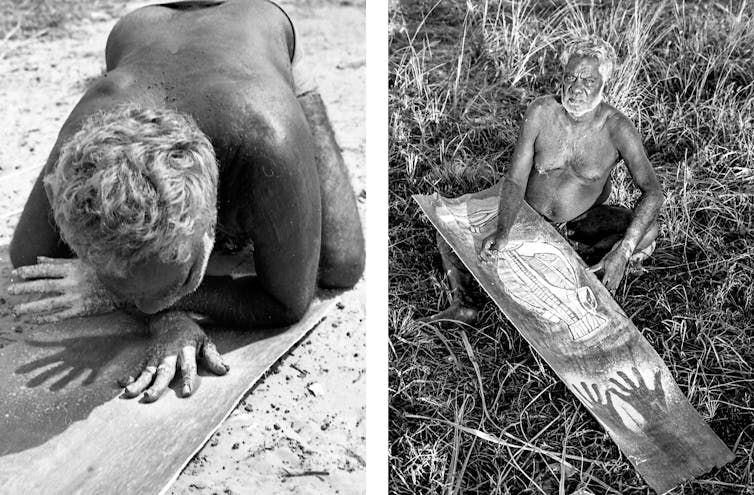
Spencer asked Namadbara to cross his hands when he created his hand stencils on the bark with the swamp hen and the black bream, which the artist found peculiar. They asked the artists to leave some of the paintings not fully decorated, so that the motifs would stand out better in photographs.
The payment for the 50 bark paintings consisted of a bag of tobacco and two bags of flour.
Ongoing Connection
The master artists who created works for early collectors deserve to be recognised, as do the vital ongoing connections that remain between the paintings and the communities from which they were acquired.
Gabriel Maralngurra, Namadbara’s kin-grandson and one of the researchers on this project, explains:
these paintings they remain part of us, part of our community. It doesn’t matter if they are far away, we still hold them close.
Being able to identify the artists in this and other museum collections revitalises the significance of these artworks for contemporary First Nation communities, artists and their families.
It also assists cultural institutions to better understand the significance and ongoing cultural links to these collections – collaboratively charting a path for this priceless Australian heritage.![]()
Joakim Goldhahn, Rock Art Australia Ian Potter Kimberley Chair, The University of Western Australia; Gabriel Maralngurra, Co-manager, Injalak Arts, Indigenous Knowledge; Luke Taylor, Adjunct Fellow, Place, Evolution and Rock Art Heritage Unit, Griffith University, Australian National University; Paul S.C.Taçon, Chair in Rock Art Research and Director of the Place, Evolution and Rock Art Heritage Unit (PERAHU), Griffith University, and Sally K. May, Associate Professor, University of Adelaide
This article is republished from The Conversation under a Creative Commons license. Read the original article.
The book that changed me: how field guides showed me the awe-inspiring diversity of insects
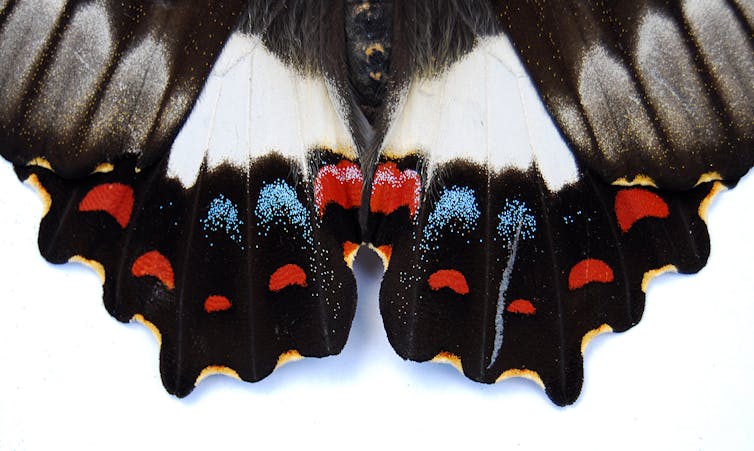
In this series, writers nominate a book that changed their life – or at least their thinking.
I am an avid reader and have devoured many books over the years, especially science fiction. For me, reading is about escapism; it’s an opportunity to explore strange new worlds and discover new ideas and new futures.
Yet the book that changed my life wasn’t about far away planets or alien civilisations; instead, it introduced me to a strange and beautiful world that existed all around me.
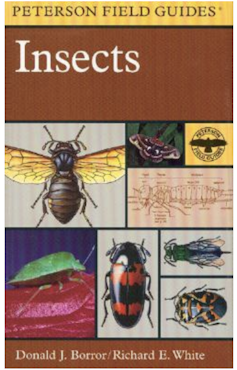
Peterson’s A Field Guide to the Insects of America North of Mexico by Donald J. Borror and Richard E. White opened my eyes to a hidden world populated by an unimaginable cast of fantastic creatures.
In its pages, I learned about the deeply bizarre “twisted wing parasites” (order Strepsiptera) who live most of their peculiar lives inside the rear ends of other insects; the webspinning Embioptera who collectively weave gossamer nests out of silk they shoot from their forelegs; and the tiny and ultra-enigmatic “angel insects” (order Zoraptera), which live in small social groups beneath the bark of rotting logs.
I learned that the everyday world was full of creatures every bit as bizarre and interesting as science fiction aliens. The Earth was so much more diverse – and weird – than I’d ever imagined.
I first encountered Field Guide to the Insects as a budding biology student who loved searching for creepy crawlies under logs and rocks. I was excited by the prospect that, field guide in hand, I would finally be able to put a name to every single one of the insects I saw on my outdoor explorations.
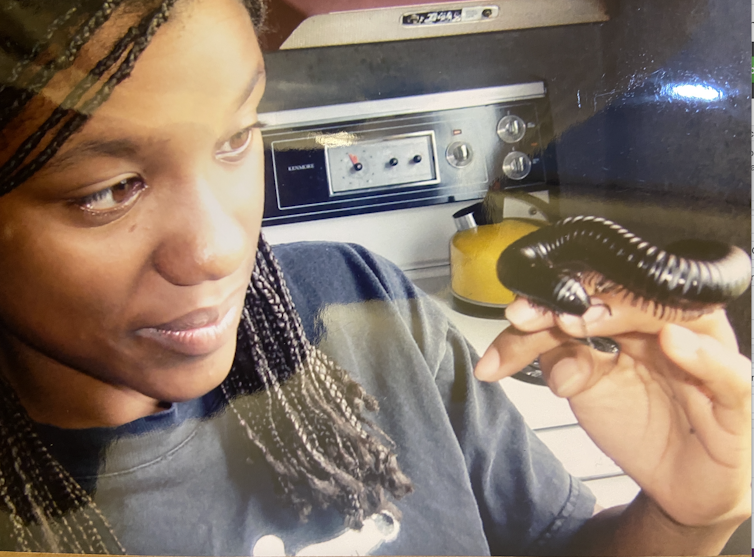
One of the first things this book taught me was how impossible that task was. At the time it was first written (1970), there were 88,600 named species of insect in North America; today, that number likely exceeds 100,000 .
Globally, there are 900,000 described species of insects, making them by far the most diverse group of animals on our planet. Even the most dedicated entomologist would struggle to identify every insect species they encounter; there are simply too many.

Powerful And Precious
Field Guide to the Insects navigates the overwhelming number of insect species by focusing on the identification of broad insect groups called “families”. The 1,300 drawings and 142 stunning colour images taught me to recognise the most common insects around me.
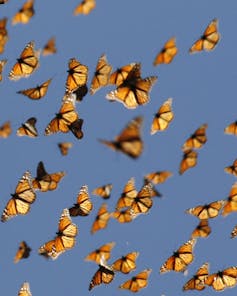
I found myself discovering amazing new insects everywhere I looked. The animals I found were not new to science; they were common species, and I had been surrounded by them my entire life. I had just never noticed.
To me, that’s the power of field guides; they help us uncover the hidden diversity of our world. Our little planet is absolutely teaming with a riotous diversity of life forms.
I’ve learned that the knowledge a field guide provides can be powerful and precious. Thanks to a field guide, I know that the leggy spider hanging in my bathroom is a harmless daddy long legs (Pholcus phalangioides) and that the weird caterpillar that looks like bird droppings on my lemon tree will one day become an elegant citrus swallowtail butterfly (Papilio aegeus) .
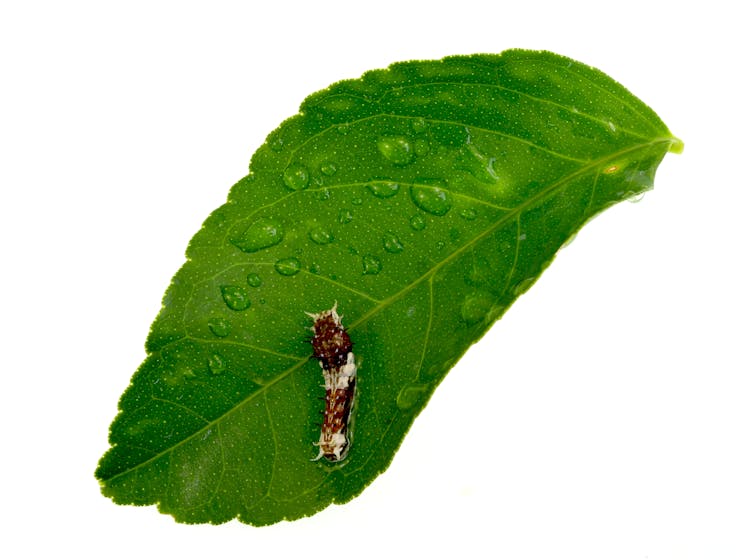
A field guide taught me that the tiny octopus flashing blue in a local tide-pool was best admired from a distance. At a time when engagement with nature appears to be declining (particularly in urban areas), field guides provide us with the opportunity to connect deeply with it.
From Opera Glasses To Apps
Field guides make specialist knowledge accessible to non-professional audiences; empowering us to explore nature no matter what our background, education or employment.
But prior to the 1890’s, most guides to animals and plants were written exclusively for professional scientists. They used dense technical language to describe often minute differences between specimens, many of which could only be observed as dead animals.
In the late 1800’s two books, Birds Through an Opera Glass (Florence Merriam Bailey ) and How to Know the Wildflowers (Frances Theodora Parsons) became the first modern field guides written for recreational nature-watchers.

Both books featured accessible language and illustrations aimed at helping non-professionals identify plants and animals in the field.
In 1934, Roger Tory Peterson revolutionised the way field guides approached identification with his Field Guide to the Birds. It featured two key innovations: the grouping of similar-looking birds on a single page, and the use of arrows to point out distinguishing features.
The Peterson’s identification system has since been adapted and used by hundreds of field guides.
In recent years, field guides have been joined by automated identification apps such as iNaturalist, PlantSnap, Merlin BirdID and FrogID that use sophisticated algorithms to identify organisms using photos or audio clips. Some apps, like iNaturalist, can identify an enormous range of organisms, far beyond the scope of even the most ambitious guide.
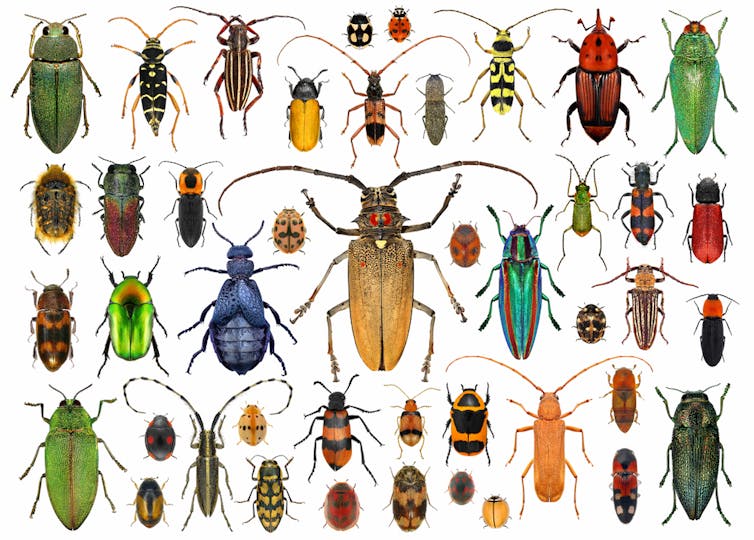
Plants, Slime Moulds, Spiders, Fungi
Do these apps replace field guides? I don’t think so. I see apps and field guides as complementary tools that enhance my explorations of nature. Flipping through a field guide helps me to learn the gestalt of features that identifies a group of organisms. Field guides allow for this kind of learning in a way that apps currently do not.
I still have my old copy of Peterson’s field guide , though I rarely use it now. As a professional entomologist, I’ve learned to use more sophisticated identification tools. But I still collect field guides to other groups – plants, slime moulds, spiders, fungi – I am not an expert at identifying.
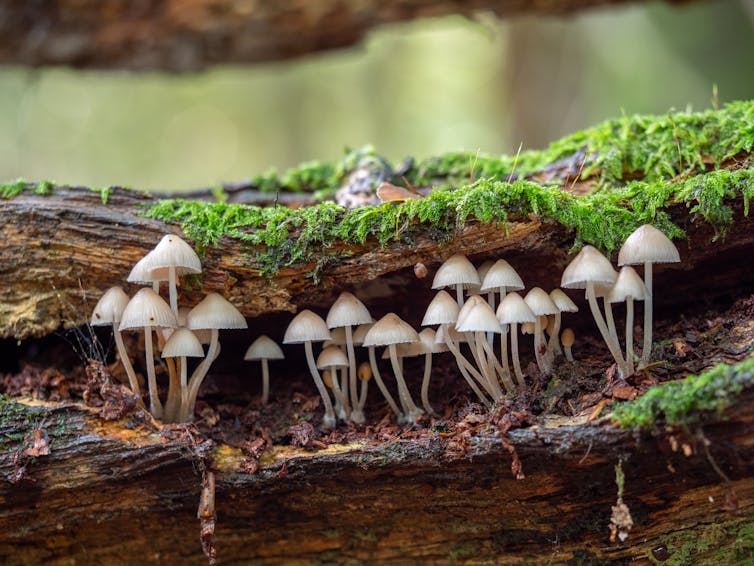
Field guides taught me to see the world in all its weird and wonderful diversity. Knowing that I am surrounded by a teeming multitude of unique life forms has made my life so much richer.![]()
Tanya Latty, Associate professor, University of Sydney
This article is republished from The Conversation under a Creative Commons license. Read the original article.
Seniors Urged To Prepare For Flu Season
- People aged 65 and over
- Aboriginal and Torres Strait Islander people from six months of age
- Children from six months to under five years of age
- People with serious health conditions (including severe asthma, diabetes, cancer, immune disorders, obesity, kidney, heart, lung or liver disease)
- Pregnant women
Statement From COTA Australia – Chief Executive Transition
How A Leaky Gut Leads To Inflamed Lungs
New eye drops can help aging people see better – an optometrist explains how Vuity treats presbyopia

When people get into their 40s and beyond, their close-up vision starts to worsen. For many people, cranking up the font size on a phone or maxing out the brightness on a computer is the only way to be able to read some text.
This condition is known as presbyopia, and it affects around 128 million people in the U.S. and more than a billion people worldwide.
In late 2021, the U.S. Food and Drug Administration approved a new eye drop medication to treat presbyopia. As an optometrist, I was initially skeptical. Prior to the release of these eye drops – called Vuity – people would either need glasses, contacts or eye surgery to alleviate presbyopia. But after learning how these eye drops work, I recognized that for many people, they could offer an easier and safer way to see clearly again.

How Eyes Focus
Many parts of the human eye interact with incoming light to produce a clear image.
The first thing light hits is the cornea, the clear outer layer that initially bends the light. Then light passes through the iris and pupil, which can shrink or grow to let more or less light into the inside of the eye. It then travels through the lens, which further bends the light and precisely focuses it onto the center of the retina. Finally, the light signal is transferred to the optic nerve at the back of the eye, for the brain to interpret as an image.
To produce a clear image, your eyes need to adjust to how far away an object is. Your eyes take three major steps to focus on objects close to your face: your eyes point toward the object you want to look at, your lenses change shape and your pupils constrict.
Once you point your gaze at what you’re interested in, a small muscle in the eye contracts, which changes the shape of the lens to make it thicker. The thicker the lens is, the more the light bends as it passes through. At the same time, your pupils constrict to block some of the incoming light from other objects in the distance. When light bounces off an object and enters your eye, the rays of light at the center are what provide a clear image. Blocking the scattering light by constricting the pupil helps to sharpen the image of close objects.
You can simulate this process using a camera on your cellphone. First, point the camera at something in the distance. Then, move your thumb into the image, holding it about 6 inches away. Your thumb will start off blurry, but as the camera’s lens changes shape, your thumb will come into focus.
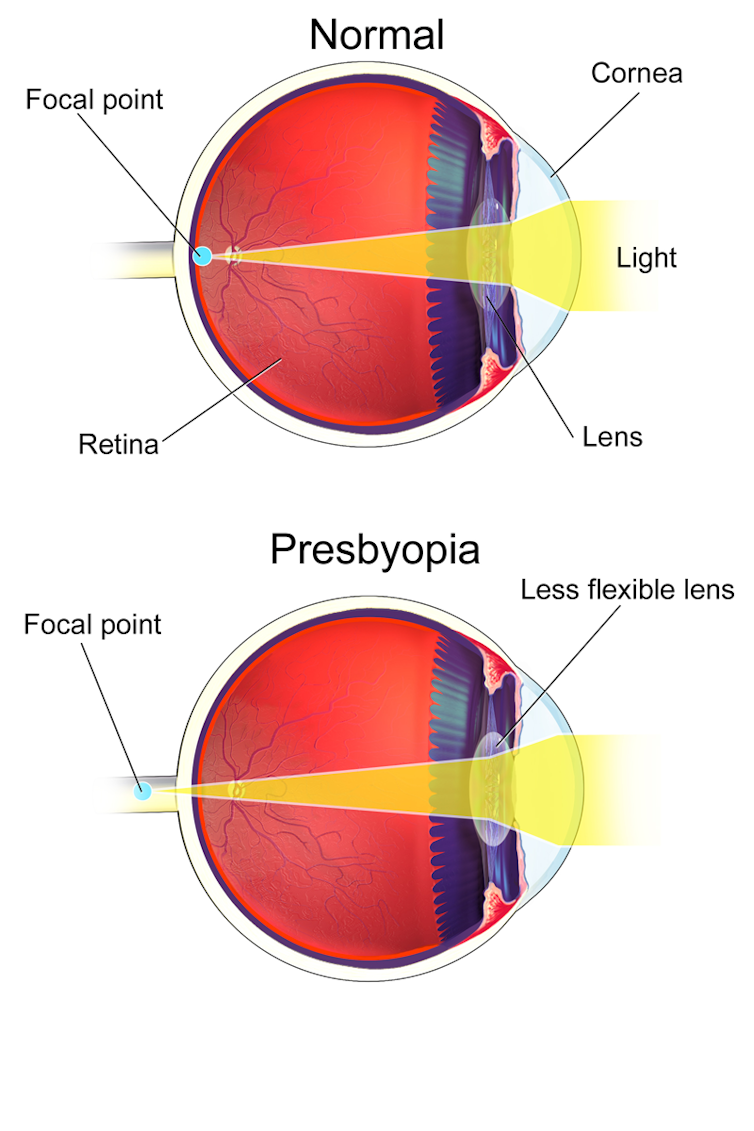
What Is Presbyopia?
Presbyopia is the inability of the eyes to focus on close objects, which results in blurry images. It begins when people are in their 40s and progresses until it plateaus around the age of 60.
Researchers know that age is the main driver of presbyopia, but there is an ongoing debate over the mechanical causes at its root.
One theory suggests that as lenses age, they get heavier and can’t change shape as easily. Another theory suggests that the muscle that pull on the lens become weaker with age. I suspect presbyopia likely occurs due to a combination of both. Regardless of the cause, the result is that when looking at close objects, people’s eyes are no longer able to bend incoming light enough to direct it at the center of the retina. Instead, the light is focused at a place behind the retina, resulting in blurry vision.
How The Eye Drops Work
Remember, there are two major things an eye does to focus on close objects: the lens changes shape and the pupil gets smaller. Since presbyopia limits the ability of the lens to change shape, these eye drops compensate by causing the pupil to get smaller. Constricting the pupil reduces the amount of light scatter. This makes it so that the light entering the eye is better concentrated onto the retina, thus creating a wider range of distances where objects are in focus and allowing people to see both close and far objects clearly.
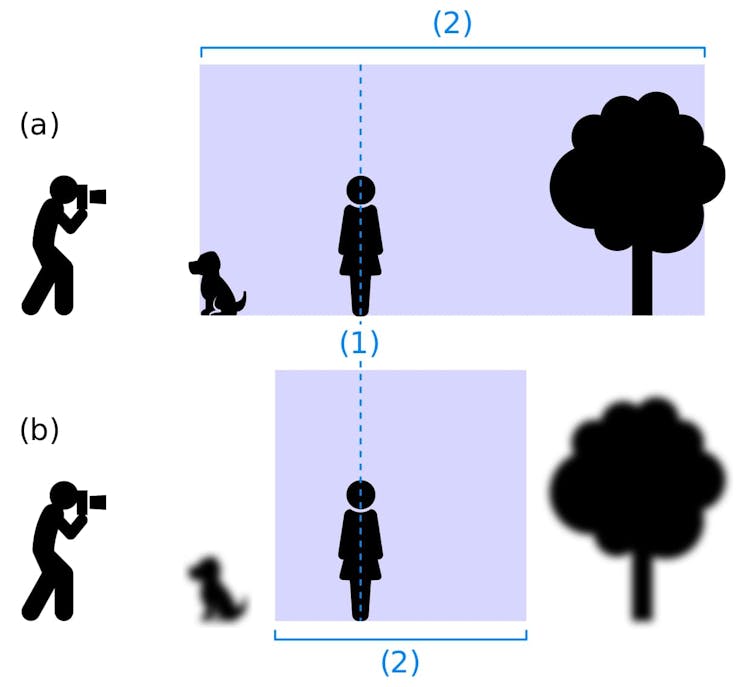
Once you put the drops in your eyes, it takes about 15 minutes for the active ingredient, pilocarpine, to begin working. Pilocarpine is a medication that was first discovered in the late 1800s, and can treat conditions such as glaucoma and ocular hypertension. The effect on pupils lasts for about six hours.
Smaller pupils mean that less light gets into the eye. While this isn’t a problem during the day when there is a lot of sun, it can cause difficulty seeing in low-lighting conditions. Aside from these downsides, the most common side effects of the drops are headache and red eyes.
Presbyopia In The Future
Vuity is currently approved for once-daily use in each eye. A bottle will cost around $80, requires a prescription and will last for nearly a month if used daily. For some people, it could be a great alternative or adjunct to glasses or surgery.
While Vuity may be the first FDA-approved eye drops to treat presbyopia, researchers are studying a number of other approaches. Some are developing eye drops that include non-steroidal anti-inflammatory drugs to help constrict the pupil – similarly to Vuity. Other teams are studying drops that soften and reduce the weight of the lens to promote easier focusing. Finally, some early research has shown that pulsed electrostimulation of eye muscles can help strengthen them and improve people’s ability to bend their lenses.
The future of presbyopia treatment is exciting as researchers work on many potential ways to overcome this universal condition of old age. For now, Vuity – while not a magic cure for everyone with presbyopia – is an innovative option and may be worth asking your eye doctor about.
[Understand new developments in science, health and technology, each week. Subscribe to The Conversation’s science newsletter.]![]()
Robert Bittner, Assistant Professor of Ophthalmology, University of Pittsburgh Health Sciences
This article is republished from The Conversation under a Creative Commons license. Read the original article.
Aged Care Strike Highlights Need For Urgent Action
Webinar – What Older People Really Think
Seniors' Stories Volume 8
- The competition is open to all New South Wales Seniors cardholders.
- Seniors Card Membership Number must be included on the entry form.
- Seniors Card Membership, competition entry and Workshops are FREE.
- The theme for this year is: ‘Celebrating Diversity.‘
- Story length max. 1,000 words (Poetry not accepted). Excess word count will be immediately disqualified (the story title is exempt from the word count).
- Multiple entries may be submitted but only one will be published. No entries will be accepted outside the stated competition dates and times; the link to submit your entry closing promptly 6pm, 21st May, 2022.
- The top 100 entries will be published in the Seniors Card anthology to be released in November 2022.
- The judge’s decision is final, and no correspondence will be entered into.
- Entries to be submitted online via the interactive Entry Form found on the FAW NSW website www.fawnsw.org.au available from 9.00am Saturday 9 April. Your story can be submitted along with the Entry Form.
- Due to the requirement of the printer, entries to be in digital form. (Help for non-computer users available on 0417 403 720 – leave your name and contact number).
- Entries must be a Word document, not a PDF or Jpeg. Please Note: Filename for your attached document should match the Story Title, which must NOT be the theme name.
- Entries sent in a format other than Word cannot be accepted.
- Entries should be typed in 12pt font, double spaced.
- AUTHOR NAME SHOULD ONLY APPEAR ON THE ENTRY FORM, NOT THE STORY.

Election 2022: Information You Need To Know
- are outside the electorate where you are enrolled to vote
- are more than 8km from a polling place
- are travelling
- are unable to leave your workplace to vote
- are seriously ill, infirm, or due to give birth shortly (or caring for someone who is)
- are a patient in hospital and can't vote at the hospital
- have religious beliefs that prevent you from attending a polling place
- are in prison serving a sentence of less than three years or otherwise detained
- are a silent elector
- have a reasonable fear for your safety.

The Beatles - Here Comes The Sun
From the Beatles YouTube Channel
Poor Eyesight Unfairly Mistaken For Brain Decline
Can your mobile phone get a virus? Yes – and you’ll have to look carefully to see the signs

With nearly 84% of the world’s population now owning a smartphone, and our dependence on them growing all the time, these devices have become an attractive avenue for scammers.
Last year, cyber security company Kaspersky detected nearly 3.5 million malicious attacks on mobile phone users. The spam messages we get on our phones via text message or email will often contain links to viruses, which are a type of malicious software (malware).
There’s a decent chance that at some point you’ve installed malware that infected your phone and worked (without you noticing) in the background. According to a global report commissioned by private company Zimperium, more than one-fifth of mobile devices have encountered malware. And four in ten mobiles worldwide are vulnerable to cyber attacks.
But how do you know if your phone has been targeted? And what can you do?
How Does A Phone Get Infected?
Like personal computers, phones can be compromised by malware.
For example, the Hummingbad virus infected ten million Android devices within a few months of its creation in 2016, and put as many as 85 million devices at risk.
Typically, a phone virus works the same way as a computer virus: a malicious code infects your device, replicates itself and spreads to other devices by auto-messaging others in your contact list or auto-forwarding itself as an email.
A virus can limit your phone’s functionality, send your personal information to hackers, send your contacts spam messages linking to malware, and even allow the virus’s operator to “spy” on you by capturing your screen and keyboard inputs, and tracking your geographical location.
In Australia, Scamwatch received 16,000 reports of the Flubot virus over just eight weeks in 2021. This virus sends text messages to Android and iPhone users with links to malware. Clicking on the links can lead to a malicious app being downloaded on your phone, giving scammers access to your personal information.
Flubot scammers regularly change their target countries. According to cyber security firm Bitdefender, FluBot operators targeted Australia, Germany, Poland, Spain, Austria and other European countries between December 1 2021 and January 2 of this year.
Is Either Apple Or Android More Secure?
While Apple devices are generally considered more secure than Android, and less prone to virus attacks, iPhone users who “jailbreak” or modify their phone open themselves up to security vulnerabilities.
Similarly, Android users who install apps from outside the Google Play store increase their risk of installing malware. It’s recommended all phone users stay on guard, as both Apple and Android are vulnerable to security risks.
That said, phones are generally better protected against viruses than personal computers. This is because software is usually installed through authorised app stores that vet each app (although some malicious apps can occasionally slip through the cracks).
Also, in comparison to computers, phones are more secure as the apps are usually “sandboxed” in their own isolated environment – unable to access or interfere with other apps. This reduces the risk of infection or cross contamination from malware. However, no device is entirely immune.

Watch Out For The Signs
While it’s not always easy to tell whether your phone is infected, it will exhibit some abnormal behaviours if it is. Some signs to watch out for include:
poor performance, such as apps taking longer than usual to open, or crashing randomly
excessive battery drain (due to the malware constantly working in the background)
increased mobile data consumption
unexplained billing charges (which may include increased data usage charges as a result of the malware chewing up your data)
unusual pop-ups, and
the device overheating unexpectedly.
If you do suspect a virus has infected your device, there are some steps you can take. First, to prevent further damage you’ll need to remove the malware. Here are some simple troubleshooting steps:
Use a reliable antivirus app to scan your phone for infections. Some reputable vendors offering paid and free protection services include Avast, AVG, Bitdefender, McAfee or Norton.
Clear your phone’s storage and cache (in Android devices), or browsing history and website data (in Apple devices).
Restart your iPhone, or restart your Android phone to go into safe mode – which is a feature on Android that prevents third-party apps from operating for as long as it’s enabled.
Delete any suspicious or unfamiliar apps from your downloaded apps list and, if you’re an Android user, turn safe mode off once the apps are deleted.
As a last resort, you can back up all your data and perform a factory reset on your phone. Resetting a phone to its original settings will eliminate any malware.
Protecting Your Phone From Infection
Now you’ve fixed your phone, it’s important to safeguard it against future viruses and other security risks. The mobile security apps mentioned above will help with this. But you can also:
avoid clicking unusual pop-ups, or links in unusual text messages, social media posts or emails
only install apps from authorised app stores, such as Google Play or Apple’s App Store
avoid jailbreaking or modifying your phone
check app permissions before installing, so you’re aware of what the app will access (rather than blindly trusting it)
back up your data regularly, and
keep your phone software updated to the latest version (which will have the latest security patches).
Continually monitor your phone for suspicious activity and trust your gut instincts. If something sounds too good to be true, it probably is.![]()
Ritesh Chugh, Associate Professor - Information and Communications Technology, CQUniversity Australia
This article is republished from The Conversation under a Creative Commons license. Read the original article.
A Better Diet Helps Beat Depression In Young Men
 Depression is a common mental health condition that affects approximately 1 million Australians each year. It is a significant risk factor for suicide, the leading cause of death in young adults.
Depression is a common mental health condition that affects approximately 1 million Australians each year. It is a significant risk factor for suicide, the leading cause of death in young adults.First Public Specialist Mother And Baby Mental Health Unit Opens At RPA

Facilitating And Administering Aboriginal Land Claim Processes In NSW
- Department of Premier and Cabinet (DPC)
- Department of Planning and Environment (DPE)
- NSW Aboriginal Land Council (NSWALC).
- DPC should lead strategic governance to oversee a resourced, coordinated program that is accountable for delivering Aboriginal land claim processes
- DPE should implement a resourced, ten-year plan that increases the rate of claim processing, and includes an initial focus on land grants
- DPE and DPC should jointly establish operational arrangements to deliver a coordinated interagency program for land claim processes
- DPC should plan an interagency, land claim spatial information system, and the Office of the Registrar should remediate and upgrade the statutory land claims register
- DPC and NSWALC should implement an education program (for state agencies and the local government sector) about the Act and its operations
- DPE should implement a five-year workforce development strategy for its land claim assessment function
- DPE should finalise updates to its land claim assessment procedures
- DPE should enhance information sharing with Aboriginal Land Councils to inform their claim making
- NSWALC should enhance information sharing and other supports to LALCs to inform their claim making and build capacity.
NSW Transport 2021 Report: Audit Office Of NSW
- future access and licence fees that are subject to re-signed agreements
- an additional $4.1 billion of funding that is outside the forward estimates period
- a significant portion of the fair value of TAHE’s non-financial assets is reflected in the terminal value, which is outside the ten-year contract period to 30 June 2031, and the risk that TAHE will not be able to negotiate contract terms to support current projections.
- absence of conflict of declarations related to land acquisition processes at Transport for NSW
- no evidence of conflict of interest declarations obtained by TAHE from consultants and contractors regarding involvement in other engagements.
- finalise revised commercial agreements to reflect fees detailed in a Heads of Agreement signed on 18 December 2021
- prepare robust projections and business plans to support the required rate of return.
- NSW Treasury and TAHE should monitor the risk that control of TAHE assets could change in the future.
- $128b road and maritime system infrastructure assets as at 30 June 2021
- 100% unqualified audit opinions were issued on agencies 30 June 2021 financial statements
- 26 monetary misstatements were reported in 2020–21
- $24.9b rail systems infrastructure assets as at 30 June 2021
- 6 high risk management letter findings were identified
- 37% of reported issues were repeat issues
Flu Causes Cardiac Complications By Directly Infecting The Heart
Effects Of Stress On Adolescent Brain's 'Triple Network'
Photosynthesis Unaffected By Increasing Carbon Dioxide Channels In Plant Membranes
Ancient Microorganisms Found In Australian Halite May Have Implications For Search For Life
To pat or not to pat? How to keep interactions between kids and dogs safe
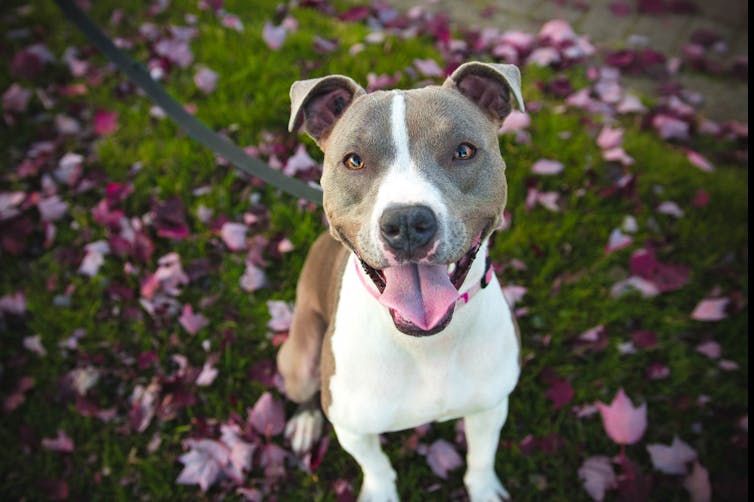
With dog attacks in the news over recent weeks, some parents may be wondering about how to keep interactions between kids and dogs safe – and how to keep everyone happy.
A review of hospitalisations due to dog bites in Australia found children under nine years presented most often. Dog attacks involving children often involve the family dog or a dog known to the child.
While we need more research around the events leading to these attacks, it’s likely a combination of a series of unfortunate events, rather than an inherently “bad” dog. Any dog can bite.
Every dog and every child interaction is different, but here are general tips for good interactions and outcomes.
Teach Children How To Interact With Dogs Safely
You wouldn’t run up and hug a stranger in the street – let’s not do it to dogs. It is vital children learn how to approach dogs safely.
Children should always stop a few metres from a dog they want to pat and ask the responsible person for permission, before also asking the dog.
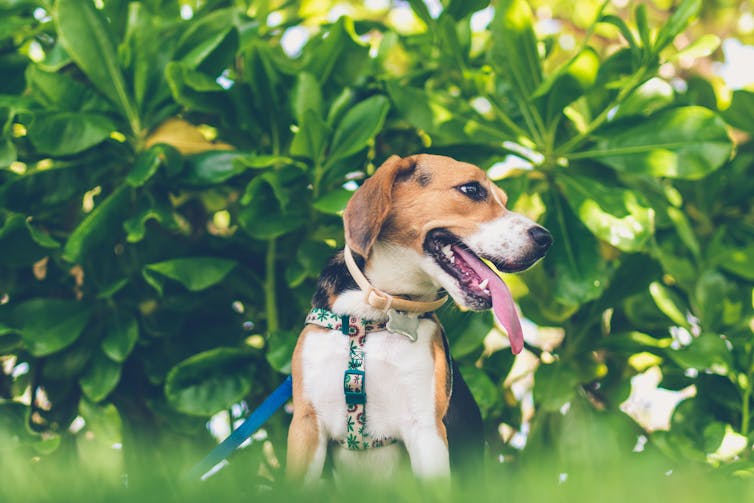
You can ask dogs if they want a pat by remembering “pat, pet, pause”.
1. Pat. Pat your leg to encourage a dog over.
2. Pet. If the dog comes to say “hi!”, give them a gentle pat on the shoulder or side. Never pat a dog on the head (dogs hate it!). Stand side-on so the dog can always move away.
3. Pause. Stop after three pats (or three seconds), and wait. If the dog reconnects (leans in or bumps the hand) then pat again for another three seconds. If the dog remains still, leans away or moves away, they don’t want to be patted (at that moment – you can try again later).
Children (and adults) should pat, pet, pause in every interaction with a dog – even the family dog.
Interactions Should Be Short, Supervised And Managed Carefully
Not all dogs are used to kids. Some dogs may be very social and friendly, but not know how to interact with children safely.
Keep social, friendly dogs on-lead or use a play pen (or fence) to keep both dogs and children safe. Use lots of tasty treats to reinforce the dog for keeping four paws on the floor.

Things can escalate quickly if children get excited or if a dog starts zooming around. Keeping interactions short (and supervised) reduces the chance of somebody being hurt.
Be very careful with very large or heavy breeds and young children who can get knocked over easily.
Learn To Speak Dog
Dogs communicate well, if we learn to listen. Dogs show signs of fear by moving away, cowering or tucking their tail between their legs. If they flick their ears back, turn their head away or close their mouths it means they’re not comfortable.
If we miss these signs, a dog might growl or even bite.
A wagging tail doesn’t always mean a dog is happy – “good” wags are mid-height, slow(ish), with a relaxed body. Dogs also wag high when tense, or very low when very nervous (both signs to say “hi!” from a distance).
Research shows young children find it difficult to identify dog body language – signs of fear or stress – although older children can increase this knowledge with education. It’s up to adults to supervise, watch both dog and child closely, and stop the interaction if the dog or child isn’t coping.
It’s important never to punish a dog for growling. Growling is serious (especially around children) and needs to be addressed quickly with careful management and training. However, it is clear communication. Punishing a growl stops the growl, but not the underlying discomfort (or fear) behind it. This means a dog might not give any warning before biting.
Ignoring signs of stress or fear, or finding it funny, puts everybody at risk. Stop the interaction immediately and contact a qualified, experienced dog trainer.
Respect Their Space
Dogs in their bed, or eating, need their own space. These are dogs’ safe zones – kids should not approach.
Kids also need a “safe” space or time away from the dogs (for example, in their bedroom).
Dogs In Public Spaces Aren’t Public Property
Just because a dog is in public doesn’t mean it’s comfortable with strangers approaching. Even if a dog is walking with children, they may not want to meet new children.
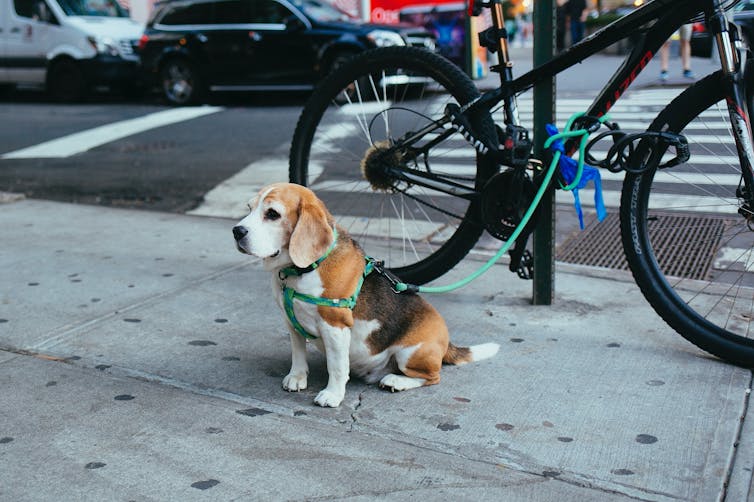
Always ask the owner of the dog. If the dog is tied up in front of a shop (or you can’t see their parent), say hello another day.
Sometimes pet parents feel pressure to ensure their dog says “hi!” to children, but always listen to the dog, and feel empowered to say no to pats from children. It won’t hurt to miss this one interaction, and offers a learning opportunity for kids to respect the space of animals.![]()
Petra Edwards, PhD researcher, University of Adelaide and Susan Hazel, Senior Lecturer, School of Animal and Veterinary Science, University of Adelaide
This article is republished from The Conversation under a Creative Commons license. Read the original article.
Disclaimer: These articles are not intended to provide medical advice, diagnosis or treatment. Views expressed here do not necessarily reflect those of Pittwater Online News or its staff.